- Philippines
- South Korea
- National Parks
- Travel Stories
- How Much Does It Actually Cost to Travel the World?
- What’s In My Backpack: The Ultimate Long-Term Travel Packing List
- My Favorite Non-Fiction Travel Books
- All Budget Travel Resources
- Writing Portfolio

What is Cultural Travel? & How to Travel the World Immersively.
This post may contain affiliate links. This just means I may receive a small commission at no extra cost to you for helping them promote their product or service. I don’t endorse any services I don’t personally use or recommend.
Travel allows us to experience the world. But as we travel, we are also leaving our footprint on each and every place we visit. This is why culturally immersive travel is so important. Because the wrong kind of travel negatively impacts the world. & it can ruin travel for the rest of us.
One of the reasons we started this blog was to help others travel better . To feel comfortable getting off-the-beaten-path, interacting with locals, and learn to embrace experiences that at first feel foreign. To take you “ Beyond the traditional Bucketlist” if you will.
But often when I talk about “Immersive Travel” or “Cultural Travel” I’m confronted with confused faces. This blog post should clear that up.

What is Cultural Travel?
Or immersive travel. It’s one and the same.
Cultural travel is the right way to travel. & before you argue that there is no right way to travel …let me stop you right there. Because there is.
“Do we really want to travel in hermetically sealed popemobiles through the rural provinces of France, Mexico and the Far East, eating only in Hard Rock Cafes and McDonalds? Or do we want to eat without fear, tearing into the local stew, the humble taqueria’s mystery meat, the sincerely offered gift of a lightly grilled fish head? I know what I want. I want it all. I want to try everything once.” Anthony Bourdain
Side Note: I KNOW that people who only get 2-weeks off per year ( I’m looking at you America ) are often just looking for an easy destination with a beach to relax on. This isn’t travel . This is a vacation. & this post is in no way meant to make you feel like you’re vacationing “wrong”. It’s a different type of trip entirely.
Cultural travel is about experiencing and preserving the various traditions around the world. It’s about being open to new experiences and willing to step into another’s shoes. Cultural travel is jumping in with both feet and leaving your preconceived notions about what your trip should be behind you.
It’s eating local dishes. & sleeping in guesthouses. It’s meeting locals and building genuine connections. It’s learning about the complicated history of a country and leaving your trip with a greater understanding of the place you came to see and the people who live there.

Often times in today’s day and age ‘travelers’ will visit a country just to snap some photos of the famous sights to post on Instagram (ie. Bali swings, Thai beaches, leaning tower of Pisa… you know the drill) or to drink the night away, or even just to lounge on a tropical beach. But that kind of vacation can be detrimental to the very communities you’re traveling to.
If you’re interested in the negative effects the wrong kind of travel can have on the world check out this article I wrote for Lonely Planet in 2021.
Benefits of Immersive Travel
Beyond supporting the local communities and the preservation of local customs and traditions, you’ll also experience some personal benefits.
You’ll Blow Your Mind Wide Open
There’s simply no way to travel this way with a closed mind. You’ll get to know different cultures intimately and understand them a lot better. You’ll also become less judgmental of others the more you travel.
Build Your Confidence

Being able to navigate public transportation in any city in the world and find cheap local food is so rewarding. It’s why solo travel is such an amazing way to develop self-confidence and self-sufficiency. Getting outside your comfort zone & realizing that YOU CAN HANDLE IT, that no matter what the world throws at you, you know what to do is such a powerful feeling.
& you’ll only get that way through experience.
Unparalled Learning Experience
Forget about learning confidence…traveling this way is a great way to learn in general! It’s better than school. I got a ( very expensive ) 4-year degree from an American University & I learned 100x more from life on the road.

History, politics, environmental issues, and animal science…When you’re confronted with these subjects face-to-face you learn more. & it sticks with you. I can’t rattle off facts from any of my college courses but ask me about Cuban or Burmese politics or the environmental challenges of over-tourism & palm oil production in Bali & I can talk for hours.
Better Travel Stories
Immersive travel makes you a more interesting person.
This is my own personal opinion of course, but when you have stories to tell & have done things few others have…of course you become more interesting.
All my favorite travel moments have come because we put ourselves out there & tried to learn something about the countries we’re exploring.
A Few of My Favorite Cultural Experiences
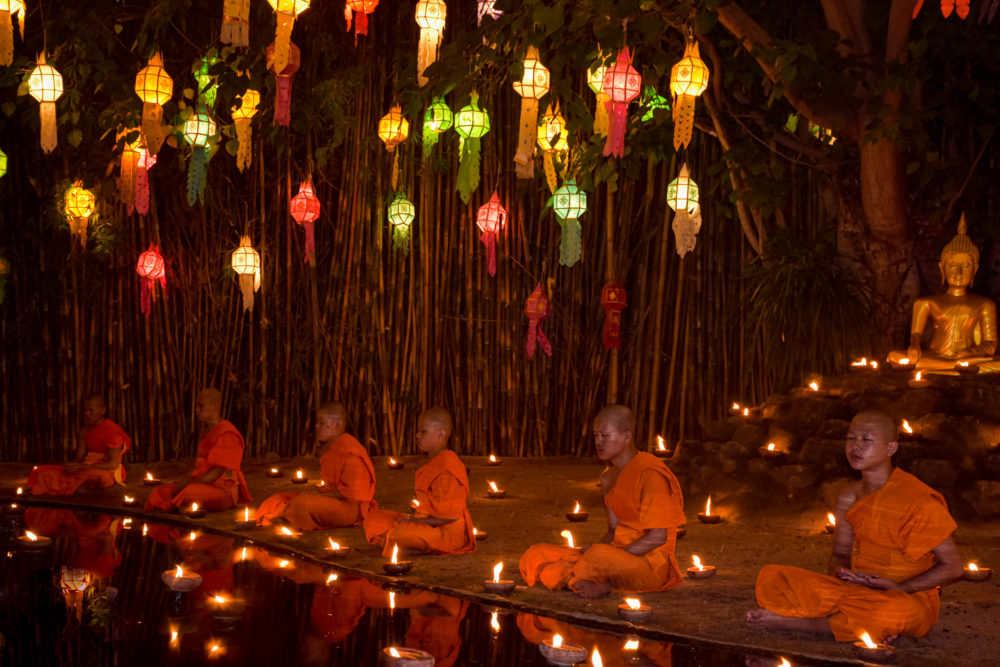
- Reading English medical books to Burmese children with a local teacher (and National League of Democracy party member).
- Couchsurfing in Medan, our host brought us to his favorite local spot for dinner with his entire family.
- Drinking beers & practicing our Spanish at a Colombian market in the hot sun with some sassy local men.
Package Tours vs. Independent Travel
If you’ve ever seen those charter buses packed full of tourists all adorned in the same T-shirt you know what package tours are. They dutifully follow the schedule they are provided (& paid big bucks for) making chit-chat with other tourists who were also lazy enough to book a trip all-inclusive.
Package tours are not my thing. Typically. Most of the time they are catered to seeing the bare minimum of a country. They are luxury experiences that often keep you in your protected bubble of comfort and you leave the country feeling very much the same as you were before you left.
Obviously, there are always exceptions to the rule. GAdventures runs budget-friendly overland tours through Africa geared at Adventurous travelers. OtherWayRoundTravel in Colombia runs small group tours for adventurous 20 to 35-year-old travelers and it’s run by locals.
On the opposite end of the spectrum is independent travel. I would classify us as independent travelers. But what exactly is independent travel?
Independent Travel Definition: Travel in which you organize everything yourself, without a travel agent or other company to organize activities and accommodation for you.
It’s that simple.
If you opt to plan your vacation yourself you fall into the category of independent travel. This is the style most backpackers and extreme budget travelers will be familiar with.
The Semi-Independent Traveler. The Sweet Spot.
The semi-independent traveler. The tourist who does a little of both. They have planned their own vacation but along the way they sign on to some group activities with local vendors.
For example…
If you head to Indonesia and start your trip in Bali. Then you spend a week exploring the island on your own, maybe hike some volcanos in Java before you head to Sumatra to see orangutans in the wild . Up until this point you have been an independent traveler. But then you sign on for a week-long all-inclusive agency to take you trekking in the jungles & sleeping in rustic cabins with a small group of like-minded travelers. You’ve become a semi-independent traveler.

It can be so relaxing to have a difficult portion of your trip planned for you and if you have done your due diligence & research you’ll still be contributing to the local communities.
This is the most popular way to travel.
Which Type of Travel is Right For You?
Now that you know how to distinguish between the types of travel you can decide where you fall. Here’s a quick set of questions you can ask yourself before you commit to independent travel.
Do you feel safe traveling to the country of your choice?
Are you interested in gaining a deeper understanding of the country and want to have an experience unique to others who visit the country?
Are you comfortable fending for yourself when things inevitably go wrong?
Are you traveling on a budget?
Do you have a lot of time for researching and traveling?
Are you interested in off-the-beaten-path destinations and supporting the local economy over your own personal comfort?
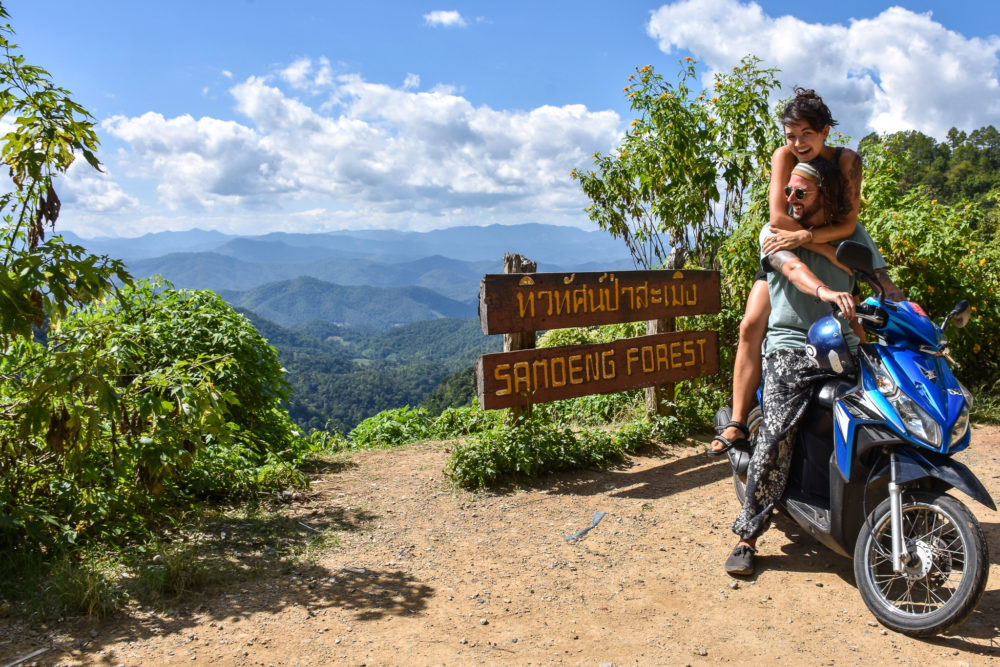
If you answered ‘Yes’ to most of these questions, Good News: Independent travel is right for you!! Even if you didn’t, I would encourage you to at one point in your life give independent travel a try and see how you do.
How to Choose a Good Cultural Tour Company
If you’re not ready to give it a go and explore the world on your own the least you can do is choose a good tour company.
What makes for a “good” tour company?
- The money goes back to the community.
- It’s run by locals.
- The focus is on gaining a better understanding of the country rather than pure luxurious comfort.
- Animals and humans are treated humanely and with respect.
Do your research before you sign up. Sometimes companies that masquerade as giving back to communities are large corporations owned by foreign investors.
& please for the love of all things diverse and quirky, don’t stay in all-inclusive resorts. They are the worst kind of tourism (alongside the eco-logical disaster that are cruises).
10 Tips For Immersive Travel
Immersing in a foreign country can be difficult. These are the 10 rules we stick to when we travel to make exploring more rewarding and to better understand the country quicker.
1. Take Public Transportation.
Or motorbikes. Or rent yourself a car. Just try to avoid hiring a personal driver for the day unless it’s someone you met, connected with, and feel could give you an insightful tour of their country. Too often we default to the easiest method of transport when the journey can be just as rewarding as the destination.
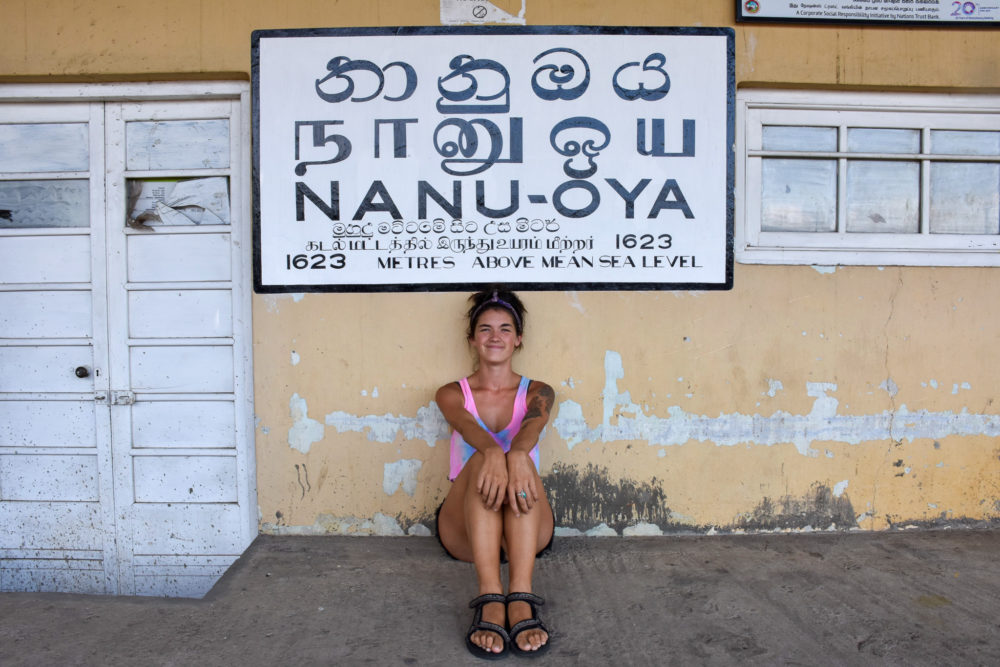
Although the bus is not often the most comfortable, it’s always the most interesting.
2. Savor the Street Food.
EAT LOCAL. I’ll scream it from the rooftops because there is simply nothing more aggravating than people who travel halfway across the world to eat the same food they would have eaten at home. Pizza in Thailand? Vegan Burger in Bali? Eggs Benedict in Colombia? WHY.

Maybe food isn’t as important to everyone as it is to us, but at least try to support local businesses as you would back home. You never know what’s going to be your new favorite meal.
Also, street food is sanitary and delicious and anyone who tells you otherwise isn’t living correctly.
3. Stay in Guesthouses.
I use Booking.com to find them. You can also couch-surf using Couchsurfing.com or find a homestay online. Staying with a local has loads of benefits. First, you’re supporting the community & not a foreign hotel chain. Secondly, you have the chance to eat home-cooked local meals & chat.

Guesthouses are also clean, comfortable, and private in comparison to other budget-friendly options like hostels.
4. Be Friendly.
To locals and other travelers. A smile and good attitude gets you a long way.
It’s these connections you make with like-minded travelers that blossom into life-long friendships. & the connections you make with locals that you’ll look back on fondly once your trip is over.
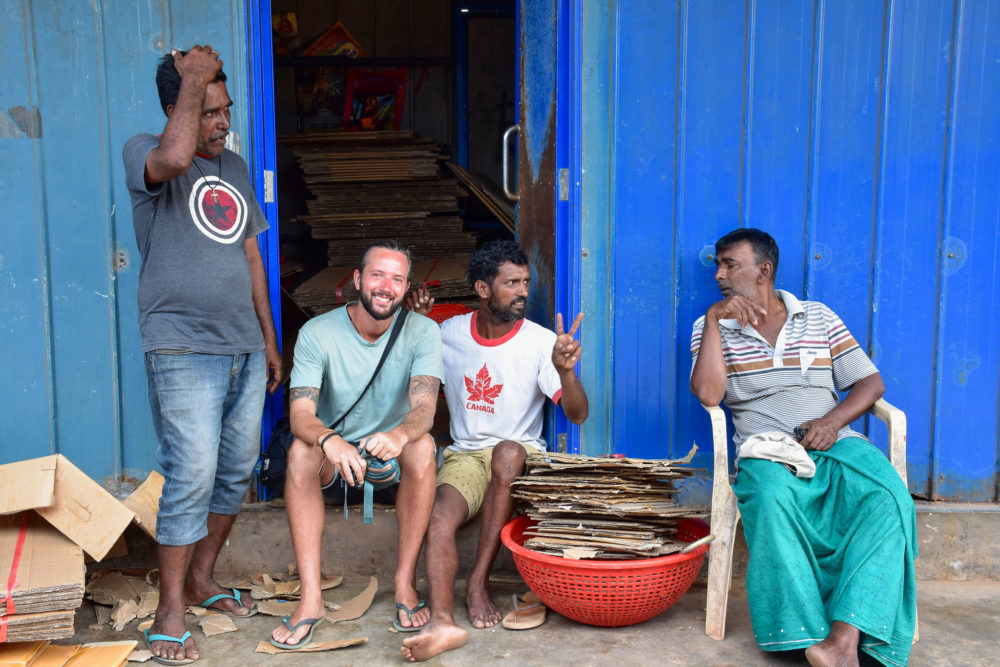
5. Stay Longer. Move Slower.
The longer you spend somewhere the easier it is to immerse yourself in the local life. Obviously, living in a foreign country or even studying abroad allows you to understand a place far better than a tourist simply passing through.
Just do less. If you only have a week to travel, instead of cramming in 6 cities, just pick 2. You’ll get to spend more time in each place and leave with more meaningful experiences. Unless you’re just traveling to check things off of a never-ending bucket list that is.
6. Take the Time to Learn Some Phrases.
You don’t have to be fluent, but the simple act of learning the language basics shows you are interested in their country and life.

It will make getting around easier, you’ll be more self-sufficient, & you’ll be able to make friends with locals. With Duolingo & other free language apps on the market, you have no excuse.
7. Avoid Impersonal Group Tours.
Use the tips I listed above to find the best tours if you are too nervous to independently travel.
8. Visit Local Markets.
Markets are the lifeblood of a destination. It’s where the locals shop, eat, and where many work. Seek out authentic local markets instead of tourist markets and you’ll gain insight into the country. & have countless opportunities to eat local food. & support local businesses.
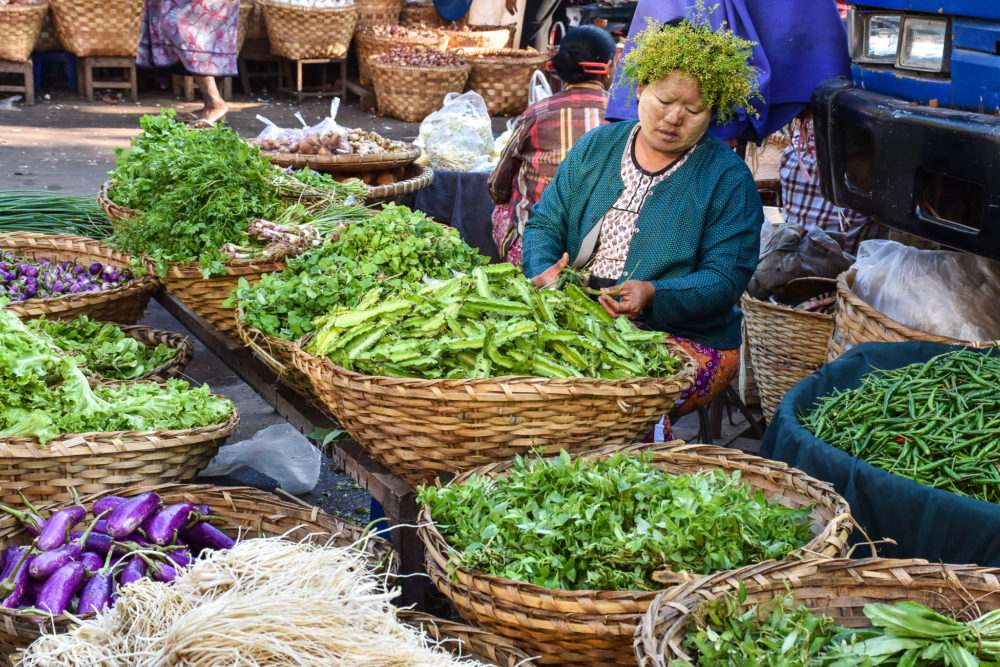
9. Don’t have Set in Stone Plans.
When you’re traveling independently things go wrong. We write a whole blog post about our most embarrassing travel fails . But sometimes things also go right.
Example : You meet a group of travelers headed to a remote region in Laos you had never heard of. & you want to tag along. But if you’ve booked everything in advance your schedule won’t be flexible. You want to leave yourself open to the world’s opportunities.
10. Follow Local Customs.
This is the single most important item on this list. Don’t be an American Idiot (or whatever the equivalent is for the rest of the world). Be considerate and knowledgeable of the culture.

If you are visiting temples in Asia be sure to dress conservatively with your shoulders and knees covered. & don’t you dare uncover yourself for a stupid Instagram photo.
If you’re a woman in the Middle East & it’s recommended to wear a hijab. Do it.
Not only are you respecting their cultural norms and traditions you’re saying you’re willing to embrace the uncomfortable to experience the country responsibly.
10 Destinations for Immersive Travel
Obviously, you can (& should) immersively travel everywhere. But these destinations have such a wonderfully rich culture and traditions that they will change the way you travel forever.
Considering you make an effort to visit them the right way.
- Indonesia .
- Sri Lanka .
These 10 countries all have such a strong (& foreign) culture for travelers to experience.
& that’s immersive travel for ya. It’s something to strive for. Now that you have a better understanding of independent travel and what it means to truly experience different cultures you’re better equipped to get off-the-beaten-path and see what’s out there.
Save This Post For Later!

Further Reading...
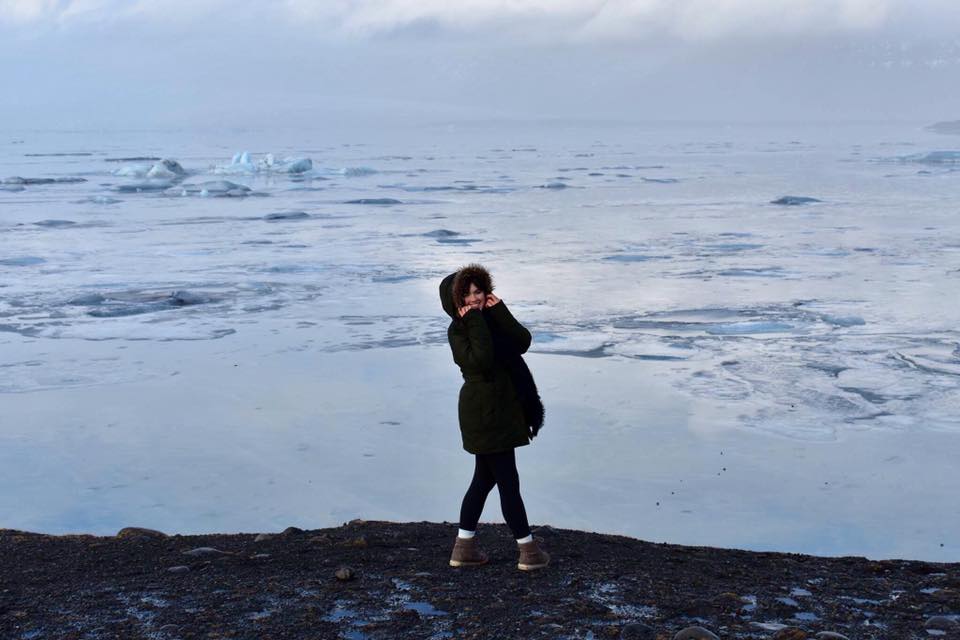
Our Icelandic Road Trip: Driving the Ring Road in Winter

Introducing: Lonely Planet’s National Park Collection
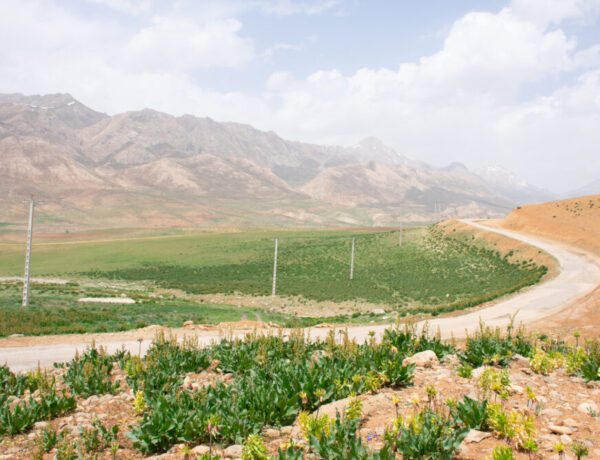
Passport Privilege: My Visa Application to Iran Was Denied (How to Visit Iran as an American)
Great ideas and thanks so much for sharing your knowledge and time!
Audrie Robinson
I loved this article thank you!
Leave a Reply Cancel Reply
Save my name, email, and website in this browser for the next time I comment.
Notify me of new posts by email.
Sign up to our newsletter!
This site uses Akismet to reduce spam. Learn how your comment data is processed .
Travel the U.S. for $30 A Day: The Ultimate Budget USA Road Trip
How i got the yellow fever vaccine in colombia for free ( + tips for cheap vaccines), beyond_the_bucketlist.


Cultural Travel: Tips to Make You More Culture Conscious
Are you a world traveler? Find out what cultural travel is and how you can immerse yourself in the lifestyle of your destination.
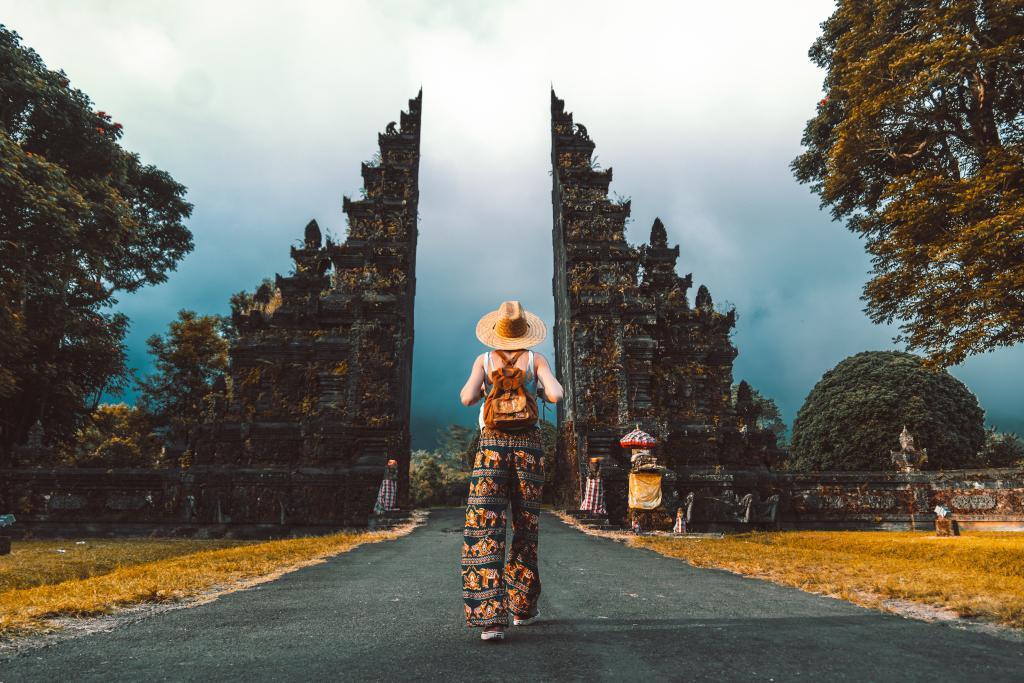
Travel is an experience almost all of us crave but are we doing it right? When most of us start planning a trip, we are thinking about a bucket list item we want to check off or just some dang relaxation away from work! But, is there more?
The truth is, travel changes you in so many ways—true travel that is! Now, before we start sounding all judgy, let’s make something very clear. There is no right or wrong way to vacation! Americans typically get just 2 weeks a year to rejuvenate! So, if you want to hit the beach and chill, no judgment here! If you want to travel to a new country and never leave the resort, there’s nothing wrong with that, but it isn’t the type of travel we are talking about here. It’s just sort of more America in a different location.
Travel with our adventure app!
Let’s Roam’s scavenger hunts are a terrific way to tour cities all over the world! These app-guided adventures include ghost hunts , art walks, pub crawls , and other spectacular sightseeing excursions. Explore the city of your choice and discover facts about landmarks while making memories. Find your fun today!
Cultural Travel
When we use the word “travel,” we are talking about a different beast, a time in your life when you set out to see the world, learn something new, and experience a different way of life. This isn’t possible on every vacation, sometimes you just need a beach and a Margaritaville, but we recommend that at least every few years, you plan an immersive trip! What does that mean?
What Is an Immersive Trip?
Cultural travel, otherwise known as immersive travel, doesn’t have a set definition. Generally, it involves submerging oneself into the different cultures and traditions of other nations and locations. This means focusing your trip on people, history, and traditions and not solely on tourist sites.
The definition can be a bit tricky. However, the heart of the traveler is the real determining factor here. Immersive travel involves looking beyond yourself and your wants … including your need to be entertained. It involves a serious effort to understand the people of this world, their religions, their cultural traditions, and their way of life.
What Are the Benefits?
Travel, in general, is beneficial to the soul, but cultural travel is that x 1000! While the perks to the traveler, nation, and locals are numerous, here are some of the major ones!
1. It opens your mind to a new way of doing things!
Your way isn’t the only way, and it probably isn’t even the best way.
2. It allows you to form friendships!
Friendships with people all over the world, people who don’t look or think like you, but that you have found common ground with, are priceless. There is something very special about the bonds of a friendship that transcend culture, distance, and race.
3. You truly see the world as it is!
Many travelers like to check off another country on their list, but if you flew into the Dominican Republic, got picked up by the concierge from the airport, check-in, and never left, then did you really experience the Dominican at all? Again, there is a time and place for these kinds of vacations! No hate, but that’s not experiencing the culture of another nation. You will get an idealized image. Whereas, doing a homestay on a farm in the village will provide a much more realistic experience.
4. You learn a lot about yourself.
You learn what you can live without (and what you never want to be without again). You learn that you knew nothing! You will come to grips with your strengths and your weaknesses, and you will be confronted with differing views on your nation and history.
5. It stirs compassion and empathy.
It’s easy to imagine this if you think about traveling to destinations where poverty is rife. But, not all cultural travel involves the developing world. Even a visit to western Europe or part os of America can give you the opportunity to learn about the history, heritage, and religious struggles of another people group. It just might give you some empathy for others that you haven’t felt before.
6. It makes you grateful.
Assuming you are from western Europe or the United States, as most of our readers are, a cultural trip will often make you feel very blessed for the life that you have lived. It can also have the opposite effect. I have often found that when I am traveling the developing world, the smiles and imminent joy radiating from the faces and souls of the world’s poorest, causes me to almost envy them. I find myself deeply searching for the joy they seem to so easily possess. Despite circumstances I cannot fathom living in on the daily, they have found a way to survive and thrive. That makes them the strongest people on earth, a strength I personally, wish to emulate.
7. It increases your connection with humanity.
The more I travel, the more I realize that humans across the globe may differ greatly on the surface, but at the heart of things, we are all basically the same. We value the same things, family, provision, faith, integrity(most people). We may go about getting them differently, but the more people you meet, the more you realize we are all pretty similar really.
8. It increases your confidence.
When you have navigated the busy streets of Morocco, all on your own, found that local food stand, met a friend, and got invited home for a traditional dinner, it feels like you have conquered the world! There is nothing you can’t do now. Travel does this. You learn that you are smarter, tougher, and more capable than you thought.
9. Increase your communication skills.
Immersive travel increases your life skills. You learn new ways to communicate when you don’t speak the same language. You learn to control your body language when you know that certain stances or gestures are considered rude in a foreign society. You learn respect and how to show it universally.
10. You bless the local economy.
Staying in a home or locally-run guesthouse funnels money into the pockets of locals instead of large American hotel chains. The same goes for restaurants and shopping.
Tips for Traveling Immersively
1. get familiar with the destination’s culture before you go.
The major goal of a cultural trip is to experience and preserve the culture of another place. Cultural experiences are a chance to grow and create bonds, but if we are not careful, we can also reinforce negative stereotypes, put ourselves in danger, and insult or hurt the locals.
Cultural research is pretty easy for most places. There are plenty of great resources online, but if you feel like you can’t find what you need, reach out to a local. Ask your Airbnb host what you should know before you travel. Search for a few local influencers online and ask them about major taboos and “do nots.” You are a tourist, the goal is not to be anything else. The goal is to know enough to have genuine conversations and not be insulting with your words or behavior. Here are a few areas that are common cultural divisions that you should research, at least a little.
- The Religious Background: What do they believe? Religion is intensely important to every single people group on earth, even if their religion is “no religion.” So, make sure you know what the majority believes, any major conflicts that are going on between groups, and any major historical events involving faith.
- The History: It pays to know a bit of history on the region. Do they hate the people group next door because they burned and looted their villages 500 years ago… or yesterday? Do they hate them because of race or religion? What is their history with your country ? This is important, as it might color their preconceptions of you and vice versa. That old adage that “history is written by the victors,” is true, but you may find in some regions, the history you know is not only wrong, but it’s also offensive. Get a little knowledge before you leave!
- The Attitude Towards Women and Children: Here in the western world, women are generally considered equal and children precious. That is not the sentiment around the world. It is important to note that our perceptions are often tainted by western bias. Remember, that just because it is different doesn’t mean it is wrong. With that said, many women find it very difficult to travel through some parts of the middle east, especially when you get off the resorts. Many western mothers are concerned about the treatment of children in parts of Africa or Asia. Sometimes, these are true atrocities that we as humans need to work on and fix. Other times, they are just cultural differences that you need to try to adapt to.
- The Dress Code: We westerners are fiercely independent about our style, and we don’t like anyone to cramp it! However, when you travel outside your nation, you need to be aware of the perception of the local population. Obviously, all locals won’t be the same. These things vary by generation, individual, and whether you are in a small village or large international city, but bear in mind the majority view. We are not saying you should abase yourself (ladies), but know the local traditions regarding dress and, within reason, try to adhere to them. This is not only to show respect but often for your own safety.
If you have to ask, “Is this ok to wear,” it probably isn’t. The world is changing fast, and it’s common to find half-naked tourists, pretty much everywhere. That doesn’t mean you want to be that person, especially if your aim is to get to know the locals. They won’t believe you are genuinely interested in their culture, and won’t waste their time on you if they feel you are disrespecting them with your dress.
- Gestures: You may find that the hand gesture you thought you were giving, doesn’t mean “peace” at all. It means something very different! Make sure to research hand gestures and eye contact, as these are two common areas that vary greatly across the world.
- Physical Touch: Americans are generally ok with physical touch with a partner, but we aren’t super touchy with friends. In other parts of the world, it would be nothing for two heterosexual men to hold hands or walk arm-in-arm. However, you would not see a man do this with his wife.
American women tend to look men in the eye, smile, and even provide a gentle touch. It is not sexual, and it is not meant to invite anything. It is just seen as friendly. That is not the case in many parts of the world, let’s say Cambodia, women are much more aloof in public, and would not show that kind of “politeness.” Know the norms.
2. Analyze yourself.
Just as it is important to know about the local culture, it is possibly even more important to analyze your own culture and know how the world perceives you. For instance, as Americans, we find that the rest of the world often sees us as wealthy and well-educated, yes…but also selfish, loud, inconsiderate, too proud, and lacking culture. They may also see western women as “a little too friendly.”
Unfortunately, many rural parts of the world only know what they see on TV or Instagram, which is usually a Hollywood movie or an inconsiderate traveler. It isn’t an accurate picture of most of us, and it isn’t fair, but you should be aware of it.
Part of being a culturally aware traveler is not only learning the reality of other cultures but sharing your reality. Just like you had a preconceived perception of who they were, they had one of you too. Cultural travel allows us to change these misconceptions of each other and spread respect and love.
3. Eat the food.
Alright, this one is hard for some people, but it’s important. Every great festival, religious holiday, and personal achievement in the world is celebrated over food. It’s something we all have in common. There is no better way to show someone that you are genuinely interested in their culture than to try their favorite foods.
We aren’t saying you should force yourself to eat things you don’t want for every meal. Just, at some point in your trip, try the local cuisine, especially if you’re offered it by a local! Look for local restaurants instead of chains. Not only is the food better, but you will be helping out a local business owner as well!
4. Prepare for culture shock.
Not every culture trip will put you in a stage of shock, but any good one will! Knowing a bit about culture shock and being ready for it isn’t a bad idea. Typically, there are four stages:
- The Honeymoon Phase: This is when everything about the new culture strikes you as beautiful and mesmerizing! Most people don’t get past this stage on a quick vacation, but you may get to stage II. Don’t leave in this stage, as the goal of culture travel is to really see the place as it is. You want the real thing, the good, the bad, and the in-between.
- The Frustration Phase: This stage is after the hot water quits working, the taxi driver scammed you, and you can’t find a freaking internet signal to save your life! You are easily frustrated, and honestly, you just want to go home. This place sucks, and so do the people. It’s not true, but it’s how you feel. Don’t leave the country in this phase because you will never want to go back, and you will forget the good you saw at first.
- The Adjustment Phase: After a while, you meet a great person. You find a meal you love. The water gets fixed. You learn a few words, and you begin to get out of your foul mood. Hopefully, this happens before you leave!
- The Acceptance Phase: This phase usually doesn’t come on a short trip, unless you have traveled to similar cultures before. In this phase, you come to admire all the gems the culture has to offer, but you recognize and accept the areas that need to be changed. You begin to feel about it the way you do your own culture. It’s not perfect, but we’re working on it.
It’s important to note that you will not go through all these stages on every trip. Seasoned travelers will go through them much faster than novices, and it’s okay if you don’t get to acceptance. Not every place is your place.
5. Open your eyes and take your time.
To fully experience a place, you have to slow down. The nuance of culture is in the little things. If your itinerary has a UNESCO site in every 30-minute slot, you will inevitably miss that elderly man on the street who wants to teach you Backgammon. You will not truly experience Italy or Spain if you don’t chat with a local over an aperativo or tapas. Guided cultural tours of the Amazon are amazing, but take a minute to play soccer with the village kiddos. Don’t just observe, be present. Get in there! Ask to participate. They will love it, and you will leave with a life-changing experience under your belt.
6. Get off the beaten path.
Travel guides are great! Touristy spots are great! You should see those things, but don’t count out a village in the middle of nowhere, with nothing in particular to see. Often, these are the little moments you will remember most. Especially in the older parts of the world, this is where you will find untold gems of culture, the things that you haven’t seen on your Insta feed.
You will meet people who don’t deal with tourists every day, and who are truly interested in your world, and you will find a true cultural exchange. Just as New York City is a totally different beast than upstate, you will find that rural villages in every nation are vastly different than tourist cities. They are often, but not always, more historical and more authentic to the original culture.
7. Learn the language.
Most of the world speaks at least some English. If English is your native language, then you are a pretty lucky traveler. However, just because someone speaks a little English, it isn’t their heart language. They don’t converse with friends and family in it. They use it for tourists. So, if your goal is to get past the day trip tourist level with people, learn to speak a bit of their language.
Unless you are a language savant, you certainly aren’t going to learn to carry on a conversation, but you can learn to say hello! You can learn to say a few congenial phrases. Not only does it help you out, but it also makes people take you a bit more seriously. They will appreciate that you are trying. Language, like food, is a source of pride and importance for people, show them you value it.
8. Book a local guide.
There is nothing wrong with a group tour or using a travel agent. In fact, in some parts of the world, we would recommend only traveling this way. However, if you feel safe and it is allowed, consider asking around for a local guide. If you are doing a homestay, or have made a friend in the area, ask them for recommendations. They may know someone who grew up in the jungle or has been trekking the area since childhood, that does tours for extra money. Not only will you get a much better travel experience, as you will likely be alone or in a small group, but you will also be lining the pockets of someone who needs it.
9. Remember: You are there to learn, not teach.
This is probably one of the best travel tips we can give you for respecting culture. All people are a little ethnocentric. We all tend to think our way of doing things is the best way or the only way. That is, until, we learn better. While you are gifted and certainly have things to offer humanity, remember that you also have things to learn. That’s why we leave the comfort of our homes. That’s why we venture out. We want to learn. We want to grow. Allow yourself to assume the role of a student of the world, and let the great people of earth teach you a thing or two!
Best Destinations For Cultural Travel
Okay, so now that you are convinced, where should you go to experience this kind of trip? Well … the answer is anywhere that has a culture, different than your own, that you are interested in. You don’t have to go that far. Havana, Cuba is a vast cultural change from most of America and just a short flight from Miami. Plus, to travel there, you have to prove that you are coming to support the Cuban people (which is easy to do), so your mind is already in the right place when planning your trip.
We use Cuba as an example, but it’s a huge world! Thailand, Colombia, and cruises down the Nile are great options, too. There really is no right or wrong place to travel. Pick a culture that interests you, and go for it!
Closing Thoughts
Cultural travel definitely takes a little work. It requires research and putting your heart into it, but the rewards are innumerable. After a lifetime of travel, you won’t remember the elevation of Macchu Picchu, Peru, or how many temples you checked off in Greece, you will remember that elderly Haitian woman who kissed you on the mouth when you helped her do laundry, or the Ethiopian child who spent 5 minutes scrubbing that freckle on your arm, convinced you had a speck of dirt. Our best experiences in life revolve around the people we share the earth with. Take the time to notice them!
What do you think about this type of trip? Have you ever thought about your vacation as an opportunity to immerse yourself and learn from others?
Let us know your tips in the comments. We want to hear about your experiences!
If you want a true cultural adventure in Europe, head for the Balkans. Check our list of “ 20 Reasons To Visit The Balkans ” to see what we mean!
Are you thinking about a true cultural change, a change in lifestyle to a full-time traveler? Read our article on the digital nomad lifestyle , to see if it might be right for you.
Frequently Asked Questions
Cultural travel is building a trip that revolves around experiencing the history, religion, and real-life of the locals. It involves not just visiting but finding ways to understand a new culture.
When engaging in cultural travel , wise travelers learn about their host culture before departing. Some of the most important aspects of culture to research are dress, religion, and language.
Spend some time getting to know the history with a tour from a local guide or an app-guided scavenger hunt . Then, get to know locals and immerse yourself in the culture of your travel destination .
Featured Products & Activities
Culture Trip: Travel & Explore 12+
The essential travel companion, culture trip.
- 4.8 • 11K Ratings
Screenshots
Description.
Your Getaway to Unique Global Adventures The Culture Trip app is your essential travel companion; wherever you are, wherever you go. Discover nearby recommendations hand-picked by global experts and local insiders, plan unique trips that are right for you, and easily book spot-on places to stay and experiences - all in one app. Travel with Culture Trip and we help you get it right, before and during every precious trip. Because we are your trusted shortcut to travel that’s good, and makes you feel good. THE WORLD’S BEST BITS, HAND-PICKED BY US Our recommendations are hand-picked by a global community of travel experts and local insiders - we know the best when we see it because we’ve been doing this since 2011. Our award-winning travel guides and stories give you an insider perspective on destinations around the world with lesser-known gems and unexpected highlights. EASILY PLAN TRIPS THAT ARE RIGHT FOR YOU My Plans: Wave goodbye to stacks of travel books. Collect trip inspiration in one place. Add your favourite travel guides and itinerary ideas, create wishlists of places to stay, and must-do experiences.
Version 4.0
Guides are now in main focus, trips are now organized in only 3 categories.
Ratings and Reviews
11K Ratings
I don’t even give ratings ever. This is literally my first time giving a review on something in years. I find this app extremely helpful, FULL of information! fun, informative and I don’t know how many times I was just in awe with moments like, “What?!” Didn’t know that. It makes you want to just get up and explore. I’ve been living in Atlanta 2 years and I always wondered how do you find all the good places and fun places when you don’t really know anyone, or when I want to travel to another state over I want to know what’s good there and maximize my time and money. This app solves those issues! Thank you!! Love this app.
Developer Response ,
Hi NiseBaby77. Thanks so much for the great review. We're delighted that the Culture Trip app is helping you to find places you want to go and fun things you can do.
The Best Travel & Culture Site
While this site has articles highlighting “best of” events, sights, etc., which are great, they provide much more detail than other sites about the art, food, culture, history, geography, and people in the area. The writers have usually spent considerable time in the areas about which they write so you can rely on their information. And the pieces are well written. We are traveling in southern France and their articles covered east to west, beaches to mountains and also covered weather & events at differing times of year. I plan on consulting Culture Trip from now on before we travel.
Thank you so much 😊! Really happy to hear you had a good experience with the app and the site. We are here to help you your future travels.
App No Longer Functions
I used to use this app all the time to help with trip planning. Recently it has totally stopped working; I cannot save any posts and cannot even log on the app. I tried deleting the app and reinstalling it to see if it would fix the problem but it has not. I can’t access any plans I made previously either. The problem started around the time they took away the section about hotels/hotel booking. That was always a useful way to find out key details about amenities, neighborhoods, etc. Even without hotel information, the app would still be useful to plan dining and activities for travel. Unfortunately, due to its lack of functionality, the app is close to useless now. This has been weeks or months now.
App Privacy
The developer, Culture Trip , indicated that the app’s privacy practices may include handling of data as described below. For more information, see the developer’s privacy policy .
Data Linked to You
The following data may be collected and linked to your identity:
- Contact Info
- Search History
Data Not Linked to You
The following data may be collected but it is not linked to your identity:
- User Content
- Diagnostics
Privacy practices may vary, for example, based on the features you use or your age. Learn More
Information
- Developer Website
- App Support
- Privacy Policy

Get all of your passes, tickets, cards, and more in one place.
You might also like.
Trip Scout - My Travel Planner
Visit A City
Atlas Obscura Travel Guide
Withlocals Tours & Travel App
VoiceMap Audio Tours
Rome2Rio: Trip Planner

What’s the Best Way to Engage With and Honor Local Cultures When I Travel?
Experiencing a new culture can be one of the best parts about traveling—here’s how to engage with local communities respectfully..
- Copy Link copied

Use these tips to embrace and honor cultures on your travels.
Illustration by Solji Lee
When I think back on my favorite trips, it’s the cultural moments that stand out: the shake of feathers on a Black Masking Indian’s Mardi Gras outfit in New Orleans; the laughter I shared with Fijians around a kava bowl. To me, the most rewarding parts of travel are learning about—and being invited to experience—a community’s traditions. But how can we ensure that we’re doing right by the people who share those moments with us? Here are some tips.
Advance reading on local history, customs, and culture can help you get more out of a trip. For example, DestinationIndigenous.ca , from the Indigenous Tourism Association of Canada (ITAC), has advice about attending a powwow .
Consider who controls the storytelling
If you’re thinking about booking an activity, performance, or tour that is presented as a cultural experience, consider its context. Will it take place in the tradition’s natural environment or somewhere staged? Who’s benefiting, financially or otherwise? Ask about its history, suggests Kalani Ka‘anā‘ana ̄, a Native Hawaiian and chief brand officer at the Hawai‘i Tourism Authority . “Nine times out of 10, if they’re able to recite and share where their knowledge comes from and what their responsibility is to it, it’s going to be a solid experience.”
ITAC’s Original Original mark denotes businesses that are at least 51 percent Indigenous owned (plus other criteria) and offer accredited, authentic experiences. These include the Squamish Lil’wat Cultural Centre in Whistler, which showcases the area’s First Nations communities , and Coastal Rainforest Safaris , which leads wildlife tours in British Columbia’s Great Bear Rainforest .
As Tamara Littlelight , ITAC’s director of marketing and a proud Anishinaabe from Keeseekoose First Nation , says, tourism gives Indigenous peoples “a chance to rediscover and take pride in their cultural heritage, while also sharing it with others.”
Uplift traditions and crafts
There are several ways travelers can help sustain cultures around the world. For example, UNESCO’s Intangible Cultural Heritage list showcases hundreds of endangered oral traditions, performing arts, and skills, some “in need of urgent safeguarding.”
Similarly, the U.K.’s Heritage Crafts Association has identified dozens of crafts at risk of becoming extinct within a generation. And at the Fife Arms , a hotel in Braemar, Scotland, travelers can support local skills by learning how to make traditional rag paper and sporrans (pouches).
The U.N.’s World Tourism Organization publishes an annual Best Tourism Villages list, which recognizes places with social, economic, and environmental sustainability initiatives that enable travelers to help preserve local heritage. The 2022 list includes Dazhai, in China’s mountainous Guangxi region, where a cable car allows visitors to witness 1,000-year-old farming techniques of plowing and harvesting rice terraces. In Angochagua, Ecuador, another designee, guests are encouraged to take part in farming, cooking, and crafts as a celebration of the Caranqui people’s ancestral heritage, providing a source of income and strengthening traditions.
Participate—and respect boundaries
Don’t be a passive observer. Try to spend time with your hosts. In eastern Canada, Fogo Island Inn’s Community Host Program matches guests with a lifelong Fogo Islander for customized half-day orientations about the island’s natural and cultural heritage.
Exchanges like this can often be two-way conversations, but some aspects may be off-limits: Sacred ceremonies or ritual practices might be kept from visitors. Of course, obeying local rules, respecting privacy, and asking permission before taking any photos are paramount.
Ka‘anā‘anā says curiosity and humility are “the recipe for how best to engage with, and be respectful of, culture.” Hawai‘i is like a mirror, he says, promising that if you come with those two qualities, you’ll get them back tenfold. “We have a saying in Hawai‘i: Aloha aku, aloha mai. In giving love you receive love.”

Cultural Trips
Top 10 cultural tours for 2024-2025, short inca trail hike to machu picchu, mediterranean gems: from dubrovnik to naples, discover iceland, america’s great river, hidden zimbabwe, panoramic peru, charms of the mekong, 10 best cultural tours of europe for 2024-2025, 10 best cultural tours of africa for 2024-2025, 10 best cultural tours of asia for 2024-2025, top 10 cultural tours of the united states for 2024-2025, wild alaska escape: haines, the inian islands, and tracy arm fjord, heart of the delta, hawaiian seascapes, new orleans & southern charms, alaska adventure cruise - alaska fjords and glacier bay, america’s heartland, lower mississippi river cruise, our 10 favorite cultural tours of south pacific for 2024-2025, new zealand uncut: north & south islands, southern slice: nelson to queenstown, northern portion: auckland to wellington, tahiti & the society islands, islands of the marquesas & tuamotus, marquesas, tuamotus & society islands, fiji, tonga, cook & society islands, society islands & tuamotus, ancient polynesia: tuamotus and marquesas islands, discover the marquesas, travel guide for cultural experiences.
- The Amazon - Contrary to popular myth, most of the indigenous communities in the Amazon have been contacted by modern society, but they choose to keep their customs and traditions. We have formed relationships with several of these communities who are excited to share their jungle lifestyles with you!
- Africa - Perhaps the most famous native group that we visit on our cultural experiences in Africa is the Maasai , who have found a balance between integration into the modern world without losing their customs and traditions. Several of our Africa tours visit other tribes that are even more secluded from the buzz of society.
- The South Pacific - These early oceanic explorers were the first to settle the islands of the South Pacific and their distance from the nearest major cities has helped them preserve their ways of life (and more native languages than the rest of the world combined) for thousands of years.
- Sample local dishes - a mix of some delicious flavors that you didn't even know existed and some that might even challenge your palate!
- Learn how to cook these dishes for yourself using the same methods and techniques that the indigenous communities have used for centuries.
- Participate in ceremonies, dances, and rituals! Many native groups are excited to share their ways of life with travelers and will give you a front row seat or even a role in their ceremonial rituals.
Cross Cultural Advice
History and culture of peru, culture and history of the mississippi river, culture of chile, culture, politics and cuisine of guatemala, history and culture of ecuador, history and culture of bolivia, the history & culture of costa rica, history and culture of belize, culture and history of new england, the cultural side of a virgin islands cruise, customs and culture of bulgaria travel, politics, culture and cuisine of the falkland islands, senegal: africa's cultural center, cultural snapshot of zimbabwe, a microcosm of african cultures, history, politics and culture of china, the history & culture of iceland, cultural travel videos.
Cultural Travel Stories
A sampling of cultural immersion, my cultural tour of china and tibet 2016, south america cultural tours, why travel with adventure life, recognized by.

Culture trip: discover 10 of the world’s top cultural enclaves
Sep 28, 2017 • 8 min read

Every traveller has their own definition of culture. Whether it has something to do with social customs and rituals or is inscribed into the local art, literature and architecture, the culture of a place can be what initially inspires our travels and is one of the most meaningful aspects we take back home with us.
In Lonely Planet’s new book Culture Trails our experts have scoured the globe to bring you 52 adventures into some of the world’s richest cultural enclaves. From myths to legendary outlaws, rock stars to rock-hewn churches, incredible artisanal markets and unusual street art, here's a round-up of our 10 favourite culture trips for the curious traveller.
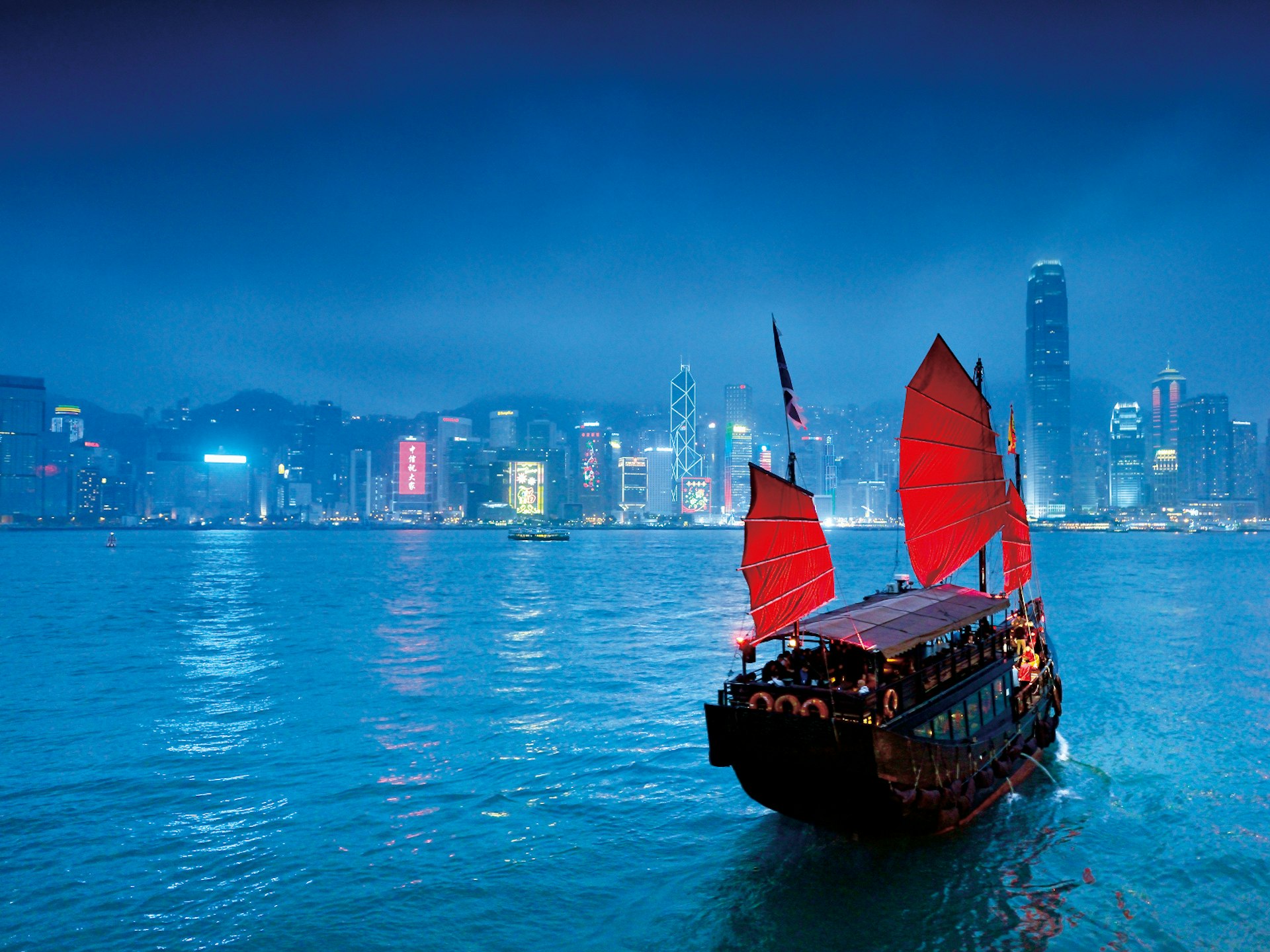
Myths and legends of old Hong Kong – China
Deities, filial offsprings, fantastical creatures and more — Hong Kong has inherited China’s enormous wealth of myths and legends. Alongside this dazzling collection of stories are the unique tales spun from major events in the city’s modern history.
Ghostly anecdotes about Sheung Wan and Western District are often found to have roots in the Bubonic Plague that swept through these parts in 1894. Reports of mystery wailings and poltergeist sightings are de rigueur at sites where people had been executed by the Japanese military in WWII, such as Murray House and St Stephen’s College in Stanley.
But the most fascinating narratives in Hong Kong, arguably, are the urban legends, born of the fantasies, obsessions and taboos of ordinary Hong Kongers, and made wilder through decades of retelling, often outliving the circumstances that inspired them. Opium dens may be a thing of the past, but the tales of squandered fortunes and thwarted love may live on in an ancient operatic aria faintly heard on a minibus.
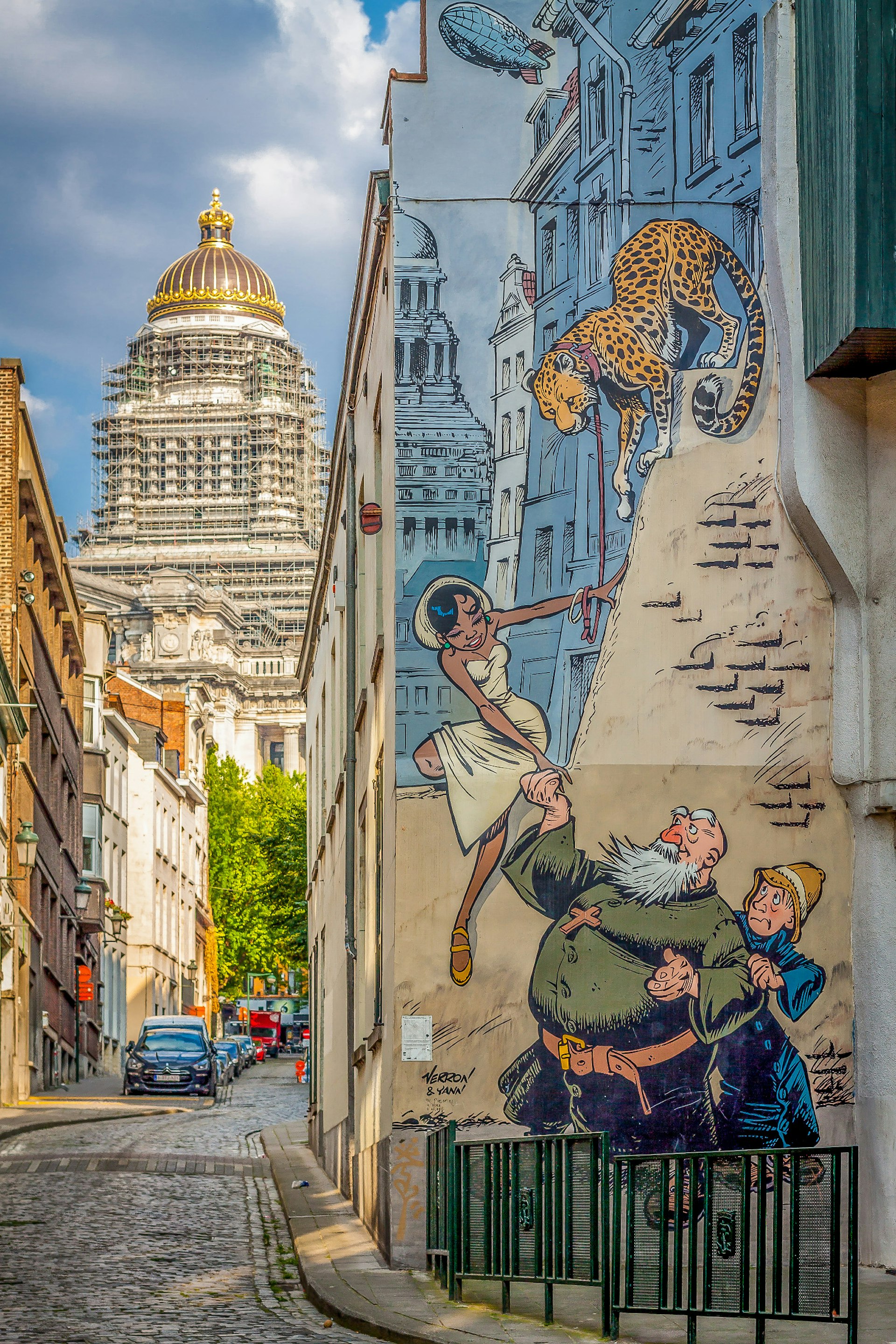
Brussels and the 9th art – Belgium
It may be the headquarters of the European Union, but there’s much more to Belgium’s capital than stuffy institutions and bureaucrats. Fun, friendly and cosmopolitan, it is also the irreverent European Capital of the Comic Strip.
Known as ‘ La Bande Dessinee ’ (shortened to BD and pronounced ‘bay day’), and grandly christened ‘The Ninth Art’, the humble comic strip here is a far more surreal, absurd and often political medium that lampoons politicians and addresses sensitive issues such as global warming, racism and terrorism.
Hergé’s Tintin may be Belgium’s most famous creation, but there is a whole universe of weird and wonderful characters waiting to be discovered by those who make a pilgrimage to Brussels — the laconic cowboy Lucky Luke, the bouncy spotted Marsupilami, cheerful Smurfs, and Asterix and Obelix, to name a few.

Ned Kelly’s bushranger trail – Australia
Ned Kelly: hero or villain? Or a bit of both? One thing that is certain is that the story of Australia’s legendary outlaw (1855-1880), a bushranger about whom we still talk today, is interwoven with one of the most beautiful and fascinating corners of Australia , the high country of northeast Victoria .
Numerous books and films have been produced about Ned’s exploits. Forget the films. Instead, bring two paper companions on this trail: local author Ian Jones’s Ned Kelly: A Short Life , for the facts, and Peter Carey’s The True History of the Kelly Gang . It’s a rare treat to read a true story in a pub that the protagonist would have frequented.
The trail touches on the country towns about a three-hour drive northeast of Melbourne that sprang up during the 19th-century gold rush. Using the Hume Freeway out of Melbourne as the spine of the story, it’s possible to get an evocative snapshot of the legend and the man while travelling through the country he called home.

Capoeira in Salvador – Brazil
Once a proud Portuguese colonial settlement, Salvador was a stronghold in the New World during the 16th century. But the slave trade quickly cast a shadow over the brand-new city’s picturesque houses and wide beaches. It was in the senzalas — crowded, poorly maintained slave quarters — that the stage was set for the invention of a new art form: capoeira. This strand of martial arts, likely based on a ritualistic African dance, was created as a form of self-defence against oppressive masters. To disguise their training, early capoeiristas made their sport look more like acrobatics or dance, using simple percussion instruments to create rhythm and music.
In the early 20th century, two modern practitioners, Mestre Pastinha and Mestre Bimba, developed capoeira into two distinct schools, elevating the slaves’ self-defence system to a nationally recognised (and legal) art form. Today, Salvador da Bahia is the best place in the world to see real capoeira — in all its elegance, athleticism, and melancholy — in action.
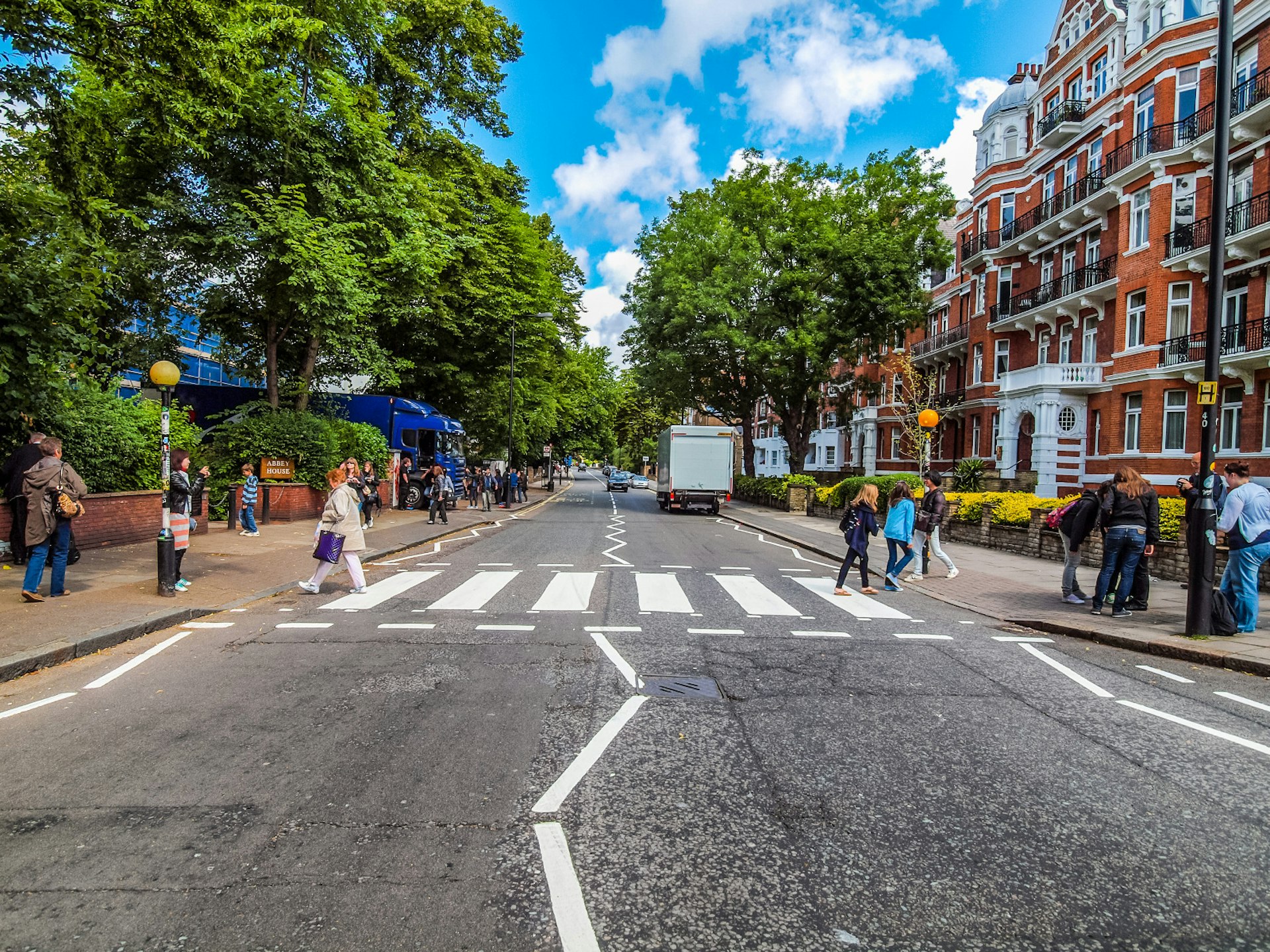
Rock star London – England
The sound of London and its music history reverberates in everyone who has sung a song, played a tune or turned on a radio station. If you feel your heartbeat quicken at the opening chords of The Clash’s ‘London Calling’, get goosebumps as David Bowie’s ‘Space Oddity’ looms louder, a little wistful at The Kinks’ ‘Days’ or downright teary at The Beatles’ ‘While My Guitar Gently Weeps’, this culture trip is for you.
As you walk the streets of London, the clues might be as blatantly obvious as Abbey Road or one of the English Heritage blue plaques denoting a famous site, or musical memories may simply sneak up on you, courtesy of a sudden sighting (Baker Street, Victoria, or a Waterloo sunset).

Ancient religion of Ethiopia – Ethiopia
Ethiopia ’s north is a world apart, the kind of place where ancient legends mingle with the country’s powerful brand of Orthodox Christianity. It is a world of white-robed pilgrims and stories that resonate down through the ages — it was here that the Queen of Sheba ruled and it is here that, Ethiopians believe, the true Ark of the Covenant resides.
Ancient Aksum is the epicentre of Ethiopian Christianity. Built upon the foundations of one of Africa’s most significant ancient civilisations Aksum is a heady mix of swirling incense and ritual chants, of sound and movement as the devout come to pay homage to the Ark. In Debre Damo and the rock churches of Tigray faith is a quieter affair of watchful priests and hard-won pilgrimages to reach barely accessible cave churches. And in Lalibela , the churches are architectural wonders of rare beauty, hewn from the rock as if by powerful kings aided by angels (as locals believe).

Finnish sauna culture – Finland
Despite below freezing temperatures and a sunset as early as 3pm, the Finns are embracing midwinter by hanging out in the sauna : a millennia-old tradition that began when the first settlers dug holes in the ground and filled them with hot stones.
Inside the sauna, it’s a toasty 80°C and silent but for the crackle of burning wood and the hiss of water being ladled on stones. Sweat-drenched and naked, the sauna-goers step outside and plunge joyously into a hole in the ice. The water so mind-numbingly cold it stings the skin and jump-starts the nervous system. After a beer and a vigorous whipping with a bundle of birch branches (to improve circulation and relax and detoxify the body), it’s time do the whole ritual again.
Fondly dubbed the ‘poor man’s pharmacy’, the sauna is at the very heart of Finnish culture. Finns go to the sauna to cleanse mind and body, to socialise and do business – name any important life event and you can bet your bottom dollar a sauna will be involved.

Salman’s Bombay – India
Mumbai ’s — or rather Bombay’s — most famous literary son, and certainly its most controversial, Salman Rushdie has lived a life almost as extraordinary as the characters in his magical realist novels. From Midnight’s Children to The Satanic Verses , Rushdie’s books have crisscrossed the subcontinent and the globe, but his most famous works are all, at heart, about Mumbai — its poverty and glamour, its prejudices and inequalities, and, ultimately, about its resilience and humanity.
Since then, Bombay has changed its name and exploded into a global megacity, but the places where Rushdie’s characters lived out their hyper-real existences can still be mapped to the streets of India’s fastest growing metropolis. Suspend disbelief and step into a Mumbai both real and imagined.

Bob Marley reggae trail – Jamaica
When it comes to music, Jamaica punches way above its weight: along with other music genres, it gave the world reggae, and reggae legend Bob Marley. Robert Nesta Marley was born in a tiny village in the north of Jamaica, but his creative awakening and growth took place in Kingston ’s ghettos, and he is still very much part of Jamaica’s landscape; in some parts of the island he has acquired almost prophet-like status.
You can retrace the course of Marley’s life, musical creativity and death, in and around Kingston, though the rest of Jamaica, with its beautiful beaches and waterfalls, delicious spicy food, jungle-covered mountains and rich historical heritage, is a wonder to explore as well. February (‘Reggae Month’) is the best time to visit, with numerous shows and exhibitions around the city celebrating Marley’s birthday and his legacy.

Artisan Marrakesh – Morocco
Though Fez has traditionally been considered the artisan capital of Morocco , there has been a recent shift in the artistic winds. Marrakesh ’s forward-thinking attitude has seen a raft of new-wave artisans and artists roost in the city, and the Marrakesh Biennale , founded by Vanessa Branson in 2004, has been the catalyst for the steadily multiplying galleries and museums.
Pretty much anything goes in Marrakesh nowadays — pop art and street art, Berber-inspired jewellery with a nouveau edge and one-of-a-kind crafts made from recycled junk. With artisans exploring pastures new while simultaneously embracing time-honoured techniques, Marrakesh’s creative star continues to rise.
http://shop.lonelyplanet.com/world/culture-trails-1/
Explore related stories

Apr 23, 2024 • 6 min read
From Paris to Buenos Aires, you’ll want to settle in and raise a glass at these famous literary bars, notebook at the ready.

Dec 26, 2023 • 5 min read

Oct 19, 2023 • 5 min read

Feb 15, 2023 • 6 min read

Sep 28, 2022 • 4 min read

Aug 17, 2022 • 6 min read

Jul 29, 2022 • 10 min read

Jun 21, 2022 • 9 min read

Jun 16, 2022 • 7 min read

Mar 24, 2022 • 9 min read
Wander-Lush
World’s Best Cultural Tourism Destinations: 30 Cultural Trips to Take This Year
Discover the best cultural trips and immersive travel experiences our world has to offer. From Southern India to the High Arctic, here are the top 30 countries and regions for cultural tourism this year .
With many of us now on the lookout for deeper and more meaningful travel experiences , cultural tourism – travel that prioritises learning about and appreciating different ways of life – has never been more appealing.
Immersive cultural experiences give travellers an opportunity to see the world from a different perspective, form meaningful relationships, and develop new skills. They can also open the door to a slower, more sustainable type of travel that has benefits for local communities and a lighter impact on the planet.
Whether you’re a seasoned cultural traveller researching for your next trip or you’re interested in getting off-the-beaten-track but aren’t sure where to start, I hope this guide to culture and travel offers you some food for thought!
I also suggest reading these tips for socially responsible travel for advice about engaging with different cultures in a sensitive and mindful way.
Please note: This post contains affiliate links, meaning I may earn a commission if you make a purchase by clicking a link (at no extra cost to you). Learn more.
This post may contain sponsored links for which I received compensation.
What is cultural tourism?
Cultural travel is as broad and multifaceted as culture itself – it’s difficult to pin down, and highly subjective. For me, cultural tourism is a kind of travel that prioritises activities and experiences designed to immerse you in a way of life that differs from your own.
It might involve consuming tangible cultural products (museums, archaeological sites, food , tea ) or encountering intangible cultural elements (rituals, performances, processes). As well as art, literature, religious monuments and the like, it also encompasses ways of living, values and beliefs – both historical and contemporary.
It’s almost impossible to avoid local culture when you travel. No matter your motivation, it’s inevitable that you’ll end up experiencing some aspect of local culture, even if it’s something as simple as eating local cuisine or learning a few words of the language.
Apart from these incidental encounters, cultural tourism represents a more concerted effort to engage with local culture through specialised activities. In the same way an adventure traveller might seek out a particular hiking route, for example, a cultural traveller might plan their trip around a festival.
Cultural vacations might involve:
- Learning a new skill, for example through a cooking class or craft workshop
- Attending a local festival or event
- Participating in a ritual or ceremony
- Eating local food
- Staying with a family at a homestay
- Immersing yourself in the local community by teaching English as a foreign language
- Visiting a community-based tourism project
- Visiting World Heritage Sites and immersive museums
- Taking a locally guided tour
There’s lots more to cultural trips (as you’ll soon see), but these are some of the common elements we tend to associate with this genre of travel.
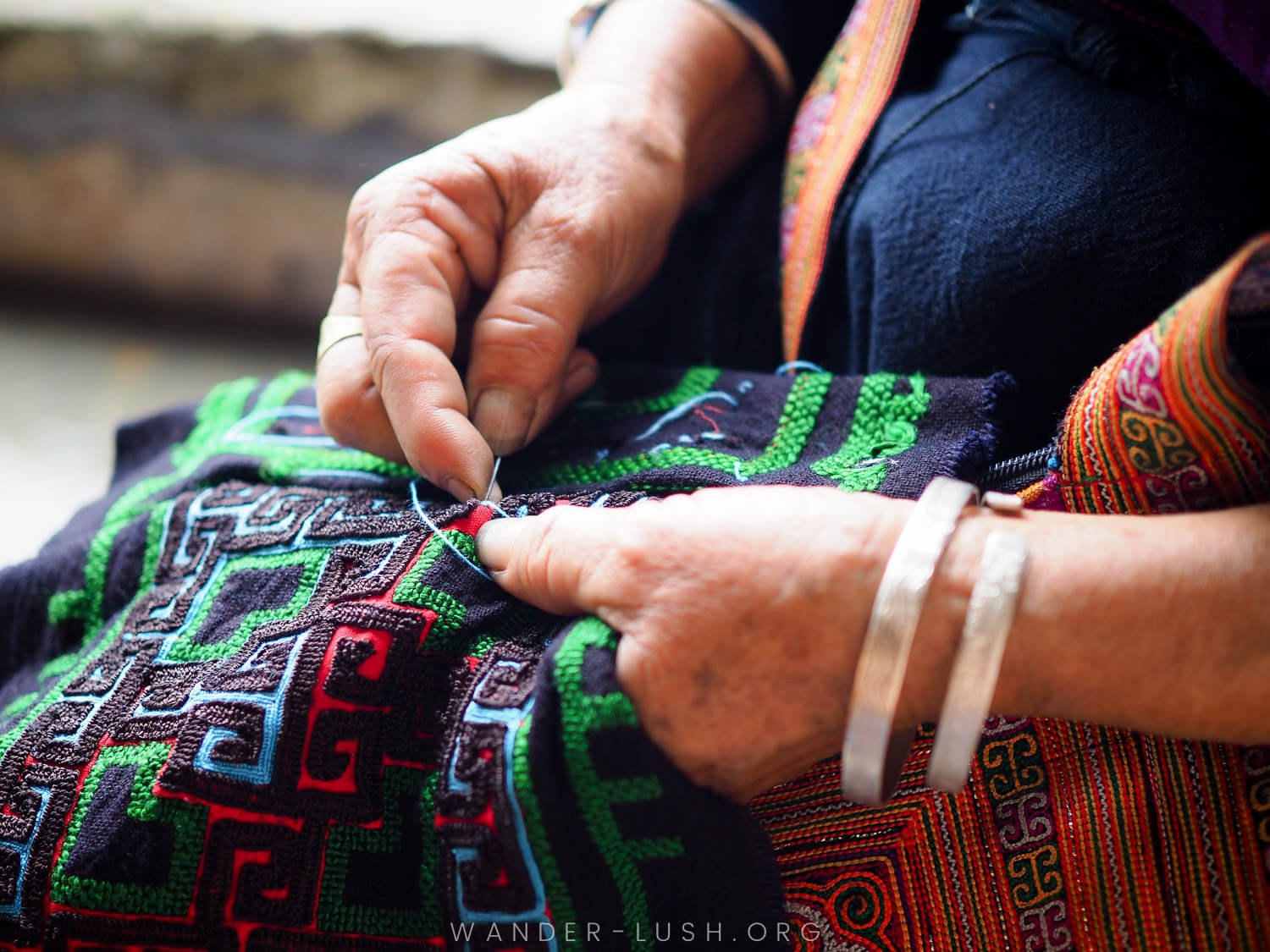
Pros and cons of cultural travel
Cultural travel is almost a guaranteed way to enrich your experience as a tourist. But it’s worth noting that this type of travel has both benefits and downsides for host communities.
Cultural tourism helps to encourage the preservation of culture and heritage by keeping endangered traditions alive. There might be little demand for heritage handicraft skills, for example, but outside interest (and an opportunity to earn an income) could be enough to safeguard a tradition that might otherwise have been lost.
By the same token, cultural tourism can incentivise better protections for physical heritage sites, ensuring that monuments and the like remain accessible for future generations. Cultural tourism can have far-reaching social impacts and environmental benefits when it gives rise to new social enterprises, local businesses and women-led ventures geared towards giving tourists an immersive experience.
On the other hand, there’s always a question mark around authenticity when it comes to cultural travel. If a ritual is performed for the benefit of outsiders, does it lose its meaning? Commodification of culture for tourism is a serious issue that impacts many communities and can be damaging to social and economic development more broadly.
Cultural tourism often involves travelling to more remote areas, which introduces a whole host of other pros and cons. A road constructed for the benefit of tourists is also new infrastructure for the community – but it might speed up globalisation and cultural erosion, while the very presence of tourists can worsen environmental pollution or cause rifts between different social groups.
These are complicated issues. Personally, I think cultural exchange is one of the most important aspects of travel and when managed properly and in a way that actively involves communities, the benefits can outweigh the drawbacks.
Top 30 countries & regions for cultural trips
There’s not a town, city, county or region in the world that doesn’t have something amazing to offer in terms of local culture. This makes it very hard to pick the ‘best’ places for cultural tourism.
However, each of these 30 hand-picked destinations stands out for its extravagant festivals and celebrations, rich cuisine and heritage handicrafts that give travellers a window on culture, heritage and the local way of life.
At the end of the list, you’ll find my top tips for having a more culturally immersive travel experience no matter where in the world you go.
Cultural destinations in the Americas
Antioquia Department, Colombia • Cuba • Ecuador • Big Island of Hawaii, USA • Orleans Parish, USA • Oaxaca, Mexico
Colombia’s Antioquia Department – for pueblos, bandeja paisa & Botero
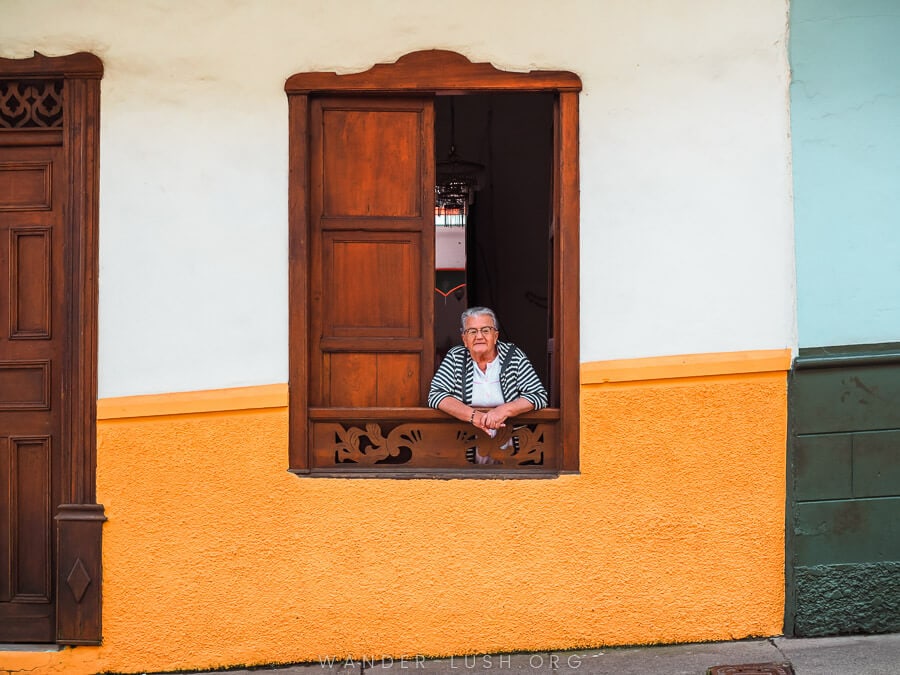
A melange of Indigenous traditions and colonial influences, there are few destinations in the world more culturally vibrant or intriguing than Colombia.
Antioquia Department in the north-west – with the city of Medellin as its capital – has become one of the most popular destinations in the country for tourists, beloved for its exquisite landscapes, colourful small towns and coffee farming heritage.
Along with several other departments, this part of Colombia is home to the Paisas , a self-defined cultural group whose name is derived from a Spanish word meaning ‘countryman’. They speak their own dialect, eat their own cuisine, and pass down their culture through a rich tradition of music and folklore.
Modern-day Antioquian culture is defined by the region’s artists, writers and poets. And then there’s the city of Medellin itself, which has undergone a huge transformation in recent years and is now considered one of the country’s main cultural hubs.
Top cultural experiences in Antioquia
Eat Paisa cuisine: One of the biggest joys of visiting Antioquia is experiencing the food scene. Paisa cuisine is heavily influenced by the topography and way of life in the Colombian Andes – carb-heavy dishes that feature beans, rice and maize are designed to fuel bodies for back-breaking work on the land. Bandeja Paisa is by far the most popular traditional dish and a must-eat in Medellin. The Antioquian version of a ploughman’s lunch, it consists of carne asada (grilled steak), chicharrón (crispy pork rind), rice and red beans served with a slice of avocado, fried plantains, a fried egg and a corn arepa on the side. It’s not for the faint hearted!
Visit a pueblo : Colombia is renowned for its small towns with colourful painted facades and pretty flower boxes. Antioquia is home to some of the loveliest pueblos in the country, including Jardin , Jericó and Santa fe de Antioquia, to name but a few. Developed during Spanish times, most follow the same basic town plan: A public square, a market, a church, and rows and rows of houses built in the region’s vernacular style. If you’re short on time, Pueblo Paisa in Medellin is a model village in the heart of the capital.
Shop at the San Alejo Handicraft Market: If you happen to be visiting Medellin on the first Saturday of the month, don’t miss this unique opportunity to see Colombia’s handicraft traditions on display. Vendors from across the region descend on the city to sell traditional products, including woven Wayuu bags, and artisanal foods. You can chat to the vendors and watch live demonstrations to see how these Indigenous handicrafts are produced.
Visit Comuna 13: A locally guided tour of Medellin’s Comuna 13 will allow you to delve into the city’s tumultuous recent past in a respectful and mindful way. This collection of once-notorious city neighbourhoods has become a symbol for the nation’s transformation and cultural revitalisation. Street art, music and other expressions of local creativity are all on display for visitors to enjoy.
Cuba – for Mambo, classic cars & casas particulares
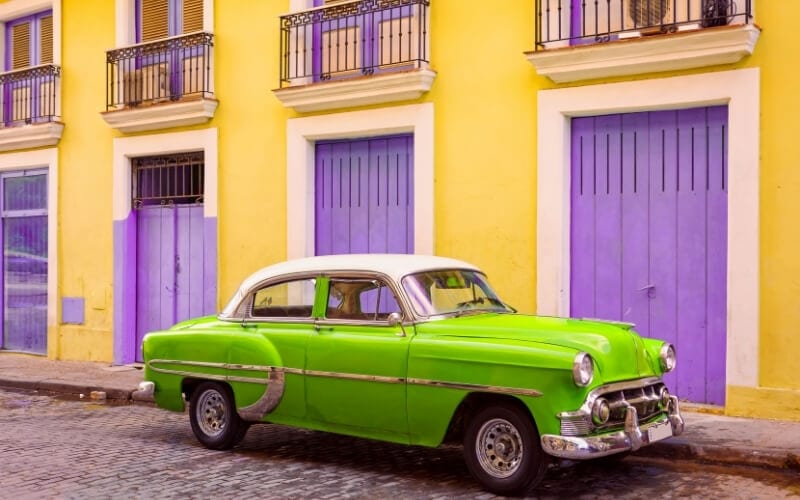
The native Taino Indians called their beautiful island Cubanacán. When the Spaniards arrived in 1511, they shortened it to ‘Cuba’ and claimed it for Spain, labelling it “the most beautiful land human eyes have ever beheld.”
Ethnically, the country is a vibrant mix of Europeans, Africans brought over as enslaved workers throughout the 1700s, and a large group of Chinese imported as indentured servants. Sadly, the original inhabitants have largely disappeared.
On December 31, 1959 the Cuban Revolution succeeded in converting the country into a communist nation. Since then – and due to the mutually adversarial relationship with the United States – the island nation has existed in semi-isolation, frozen in time.
The cars that roam the streets are the same classic American models from the 1950s, and the frequently crumbling buildings have enjoyed little renovation.
Despite Cuba’s trying history, the spirit of the people lives on and in its rich and celebrated culture. Before you go, learn the dos and don’t of visiting Cuba .
Top cultural experiences in Cuba
Dance the night away at a musical venue: Cuba is the birthplace of dozens of musical genres including Mambo, Cha-Cha-Cha and Afro-Cuban Jazz. These Afro-European genres have contributed and enriched music categories around the world. Be sure to experience one of Cuba’s world-famous carnivals and Jazz Festivals.
Overdose on art and architecture: With nine UNESCO World Heritage sites and an amazing collection of museums, Cuba is a culture vulture’s paradise. Most are found in the capital city of Havana, but you also find little gems in the second city, Santiago de Cuba, and the perfectly preserved colonial city of Trinidad. Cuba’s architecture ranges from Spanish colonial and French Baroque to 1920s Art Deco. Visit the Museum of Fine Arts in Havana and the Bacardi Museum in Santiago to start; but don’t miss the quirky Rum Museum or the delectable Museum of Chocolate either.
Stay at a Cuban homestay: These Airbnb-type experiences are called ‘ casas particulares ‘. This is your opportunity to live with a Cuban family and delve into the culture.
Go hiking: Cuba’s national parks, biosphere reserves and 1,500 miles (2,400km) of coastline provide an opportunity to experience the outdoor culture.
By Talek from Travels With Talek
Ecuador – for jungle homestays, festivals & colada morada

A country with just over 17 million people, Ecuador is an extremely culturally diverse nation and a cultural tourism destination that should not to be overlooked.
Retaining a strong influence from Spanish colonisation, with widely-celebrated Catholic festivals and traditions, there is also a diverse mix of Andean Indigenous groups and traditions that dominate the mountainous centre of the country. In the east, the influence of various Amazonian Indigenous groups and their traditions is strong.
The coast of Ecuador, meanwhile, is marked by African influence from the cultures of enslaved peoples brought during colonisation.
With such a diversity of cultures – each with their own festivals, traditional foods and more – there are plenty of immersive experiences to partake in across the country that make a trip to Ecuador a must for any cultural traveller.
Top cultural experiences in Ecuador
Visit a remote community in the Amazon rainforest: One of the most popular and fascinating cultural experiences for travellers to Ecuador is to visit an Indigenous community to learn about and experience the rich traditions. Even a jungle tour of the Amazon on a budget can be tailored to include a visit to an Indigenous community, where you’ll learn to make traditional dishes and beverages such as chicha . Tribes deeper in the Amazon that welcome visitors often offer more in-depth cultural experiences including homestays, ritual cleansings, or even ayahuasa retreats.
Celebrate Easter in Ecuador: In addition to the Indigenous traditions in Ecuador, there are many popular celebrations from the Catholic tradition that travellers can partake in. Easter celebrations during Holy Week include Quito’s parade, known as the Procesión Jesús del Gran Poder, which features thousands of purple-hooded devotes carrying crosses and statues. Make sure you enjoy a bowl of traditional Fanesca , a rich and creamy soup made with 12 grains representing the 12 Disciples.
Dress up for Día de los Difuntos : Another cultural celebration with Indigenous roots is the Día de los Difuntos or ‘Day of the Deceased’, marked on November 2nd. Ecuador celebrates by honouring the dead and visiting cemeteries. Celebrations also include preparing and eating guaguas de pan , bread in the shape of a baby filled with fruit jam, and drinking colada morada , a thick, sweet drink made with berries and fruit and thickened with blue corn flour before being served warm. These delicious treats are sold in bakeries across the country for at least a month prior to the festivities. The largest celebrations are held in Indigenous communities such as Otavalo in Northern Ecuador.
By Carley from Home to Havana
The Big Island of Hawaii – for palm weaving, stargazing & petroglyphs
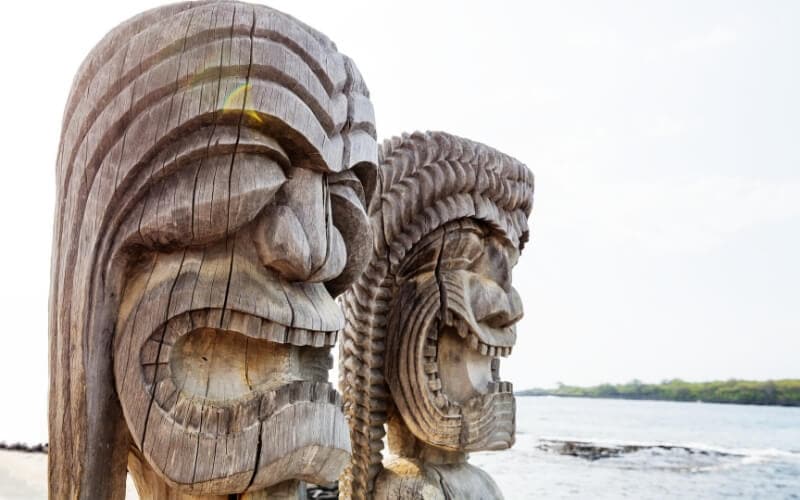
The natural abundance of the Big Island of Hawaii, the largest island in the Hawaiian archipelago, is nothing short of spectacular. With eight different climate zones, three active volcanoes, and the most mesmerising waterfalls and beaches in different shades, there’s a wealth of diversity to explore on the Big Island .
This unique natural setting is also home to several important cultural sites. After all, this is the Hawaiian island where the first Polynesian settlers arrived, where the first ruler of the Kingdom of Hawaii, King Kamehameha the Great, was born, and where the European explorers first arrived.
With such a rich heritage, it comes as no surprise that Hawaiian culture is still very much alive on the Big Island. Here are some experiences that allow you to explore the island’s heritage.
Top cultural experiences on the Big Island of Hawaii
Take a self-guided tour of the Pu’uhonua o Hōnaunau National Historical Park: Just south of Kailua-Kona, there’s a site where the royal family and their warriors once lived. It’s very well preserved and you can still see the thatched huts, an ancient temple, wooden carvings and fishponds. But this site was more than just a royal retreat: When Hawaiians broke the law or kapu , they were condemned to death. The only option to escape their fate was reaching this sanctuary, known as the Place of Refuge. You can visit this intriguing site on a self-guided tour.
Learn the traditional Hawaiian art of weaving palm fronds: In the Hawaiian craft known as lau niu , the leaves of the coconut palm were used to thatch roofs, create baskets and even hats. There’s a handful of workshops where you can learn this traditional craft from a professional weaver. Not only does it make for a unique experience, it also allows you to craft your own handmade Hawaiian souvenir.
Go stargazing at Maunakea: In Hawaiian culture, the dormant Maunakea volcano, with its unique alpine Lake Waiau, is considered sacred. They believed the summit to be the realm of the gods and the meeting place of earth and sky. To this day, cultural rituals are performed on the slopes of Maunakea. This intriguing volcano is home to the world’s largest astronomical observatory, the Onizuka Center for International Astronomy, which hosts a regular stargazing program.
Check out the Hawaiian petroglyphs: Hawaiian petroglyphs tell the stories of ancient times and give a unique inside into the different cultural beliefs on the islands. You can find carvings of canoes, turtles, babies and more at one of the petroglyph sites that dot the Big Island, such as the Puuloa Petroglyph site in Hawaii Volcanoes National Park or the Puako Petroglyph Archaeological Preserve near the Mauna Lani Resort.
Conquer the ocean in an outrigger canoe: Step aboard a double-hull outrigger canoe and explore the shore in the same way the Polynesian settlers did centuries ago. This type of canoe features lateral support floats or outriggers fastened to one or to both sides of the hull. Learn how to paddle and work as a team as you glide along the Kona reefs teeming with fish. If you’re lucky, you might even spot a pod of dolphins.
By Sarah from CosmopoliClan
Orleans Parish – for jazz, Madi Gras & creole cooking
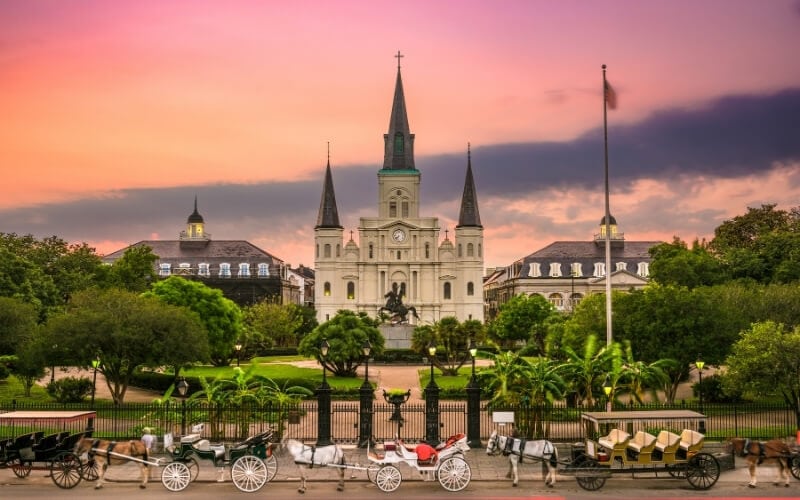
When it comes to cultural destinations, few cities have as much to offer as New Orleans and the surrounding parishes. Located in Southeastern USA, New Orleans is all about tradition and culture. The city’s unique heritage comes from a blend of French, Spanish, Cajun, and Creole cultures.
Combined, these groups have given birth to something truly iconic. The beautiful Mardi Gras celebrations are a remnant of the French colonial era, while the beautiful Spanish colonial architecture in Jackson Square is worthy of a walking tour .
You will also find unique Cajun cuisine served in the city’s most popular restaurants. Add in the many historical museums, southern plantation homes, and distinct architectural styles and Orleans Parish makes for the ultimate cultural destination in the US.
Top cultural experiences in New Orleans
Join a Mardi Gras parade: New Orleans is well-known for its lavish and grand Mardi Gras parades and balls. Visitors can enjoy the festivities for an entire month in the lead up to the big day. Outside of Mardi Gras, there are plenty of other festivals in New Orleans to check out as well.
Listen to jazz: New Orleans is the birthplace of jazz. The city’s Creole population gathered and celebrated in the city’s Congo Square on Sundays and thus jazz was born!
Tour a plantation home: Many southern plantation homes are located along the banks of the Mississippi. These can be seen on a road trip along the Great River Road. On a tour, you will learn about pre-Civil war life in the South and the history of slavery. Learn more about the ethics of visiting plantation homes here .
By Ketki from Dotted Globe
Oaxaca – for Indigenous cuisine, Zapotec rugs & mezcal
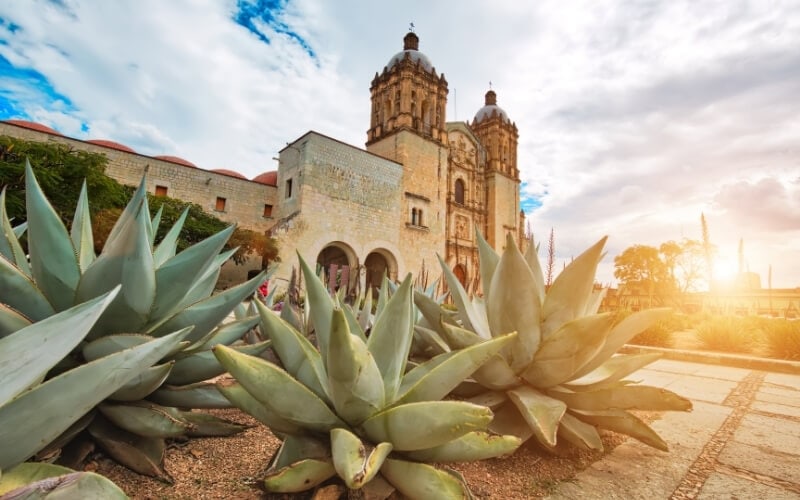
The state of Oaxaca is a cultural hub in Mexico. Void of resorts or even big-name hotel chains, Oaxaca is rich in flavourful cuisine, celebrations, and Indigenous revitalisation.
Located in southern Mexico, Oaxaca features a variety of different landscapes, from lush hills and forests, to dry arid deserts and blissful beaches. However, the community atmosphere of Oaxaca is what keeps people coming back, both international visitors and Mexican residents alike.
Oaxaca is known as the food capital of Mexico, with dozens of celebrity chefs. Notably, Indigenous culture is very visible in Oaxaca, with 16 recognised Indigenous groups in the state. Zapotec weaving is one of the most sought-after souvenirs in the area – and Mexico in general – and it comes from Oaxaca.
Top cultural experiences in Oaxaca
Celebrate Dia de los Muertos : Oaxaca City is a top destination for Dia de los Muertos (Day of the Dead), with its dazzling parades, intricate family altars and abundant festivities. Dia de los Muertos is a pre-Columbian tradition that honours deceased loved ones with food, drink, and merriment. So, if you happen to visit Oaxaca during a festival like Dia de los Muertos, bring comfortable shoes for fun activities throughout the day. Oaxaca City is an extremely walkable city, and you will want to explore every inch of its mural lined walls.
Eat Oaxacan cuisine: Since Oaxacan cuisine is also central to the region’s identity, sign up for a food tour with a local to learn the origins of some of the most popular dishes and what makes Oaxacan food and flavour so unique and different from other states in Mexico. Or, if you want to take a more hands-on approach, take a cooking class with a world-class chef at Casa de los Sabores and learn how to make mole and other Oaxacan staples.
Visit a Zapotec village: If you’d prefer to focus on Indigenous cuisine, take a day trip out to the Zapotec village of Teotitlán del Valle for a cooking class at El Sabor Zapoteco . After you finish, there are many things to do in Teotitlán del Valle , but you will probably want to get your fill of shopping at the many boutique shops for best quality Zapotec rugs.
Drink mezcal: If you’re a fan of hard drinks, Oaxaca is a great destination for mezcal tasting! Hop on any tour and view the vast agave fields as you taste mezcal throughout the day. Depending on the season, you may even get to try your hand at using the harvesting machete!
By Kay from The Awkward Traveller
Learn more: A local’s guide to the best of Mexican culture and an in-depth guide to Mayan culture in the Yucatan .
Cultural travel destinations in Europe
French Basque Country • Armenia • Sicily • Greece • Bosnia & Herzegovina • Russia • Northern Europe’s Arctic Regions • The Greater Caucasus • Andalusia, Spain
French Basque Country – for frontons , fêtes & espadrilles

The Basque country at the southwestern-most tip of France is one of those regions you might not guess is French – at least not at first.
The half-timbered houses are painted oxblood or green, and the Euskara (Basque) language, Europe’s oldest, is related to no other tongue. The Basques are also among the oldest ethnic groups of Europe.
Basque culture is unique and is spread among seven provinces, of which three are in France (the other four are in Spain). The Basques have their own festivals, music and dances, their own foods, games and folklore, as well as an acute sense of history and heritage.
Top cultural experiences in French Basque Country
Here are just a few cultural experiences to whet your appetite for all things Basque!
Gastronomy: The food is different from your regular French fare. For example, the Espelette pimento is spicier than seasonings you’ll find elsewhere in France, and food itself is taken to new heights here – the region has the highest number of Michelin stars per capita in the world. And let’s not forget the pintxo , the Basque equivalent of the Spanish tapas.
Fronton s: You’ll find one of these walls in every Basque village – it’s what Basques use to play their national sport, Basque pelota (known in some countries as jai alai). It’s played with a racquet-like bat which scoops up the ball. Then, a bit like squash, the players fling it back and forth against the wall, or fronton.
Family-owned businesses: Basque artisanal traditions run deep, whether it’s leatherwork, espadrilles, Basque linen or beret making. This is a region in which hand-made goods thrive and where mass-production takes a back seat. The local government makes sure family businesses are promoted and Basque know-how exported, however stiff the competition – there are special labels for family businesses, and even labels for those businesses that have been around for more than a century (and there are plenty). As a result, hand-made goods from this small region find their way around the world, symbolising not only Basque savvy but Basque determination to hang on to its heritage.
Bayonne Festival: With its one million annual participants, the Fêtes de Bayonne is France’s largest festival. It was ‘borrowed’ in 1932 from not-too-distant Pamplona in Spain, but has grown immeasurably since. Each July, visitors dress up in white clothes and red scarves (and a red beret, of course) and spend five days eating, drinking, singing Basque songs and watching Basque sports. The Festival includes bullfighting, which has a long tradition in the region, although this particular sport might be short-lived given the growing opposition to it.
By Leyla from Offbeat France
Bosnia & Herzegovina – for old bazaars, woodcarving & kahva
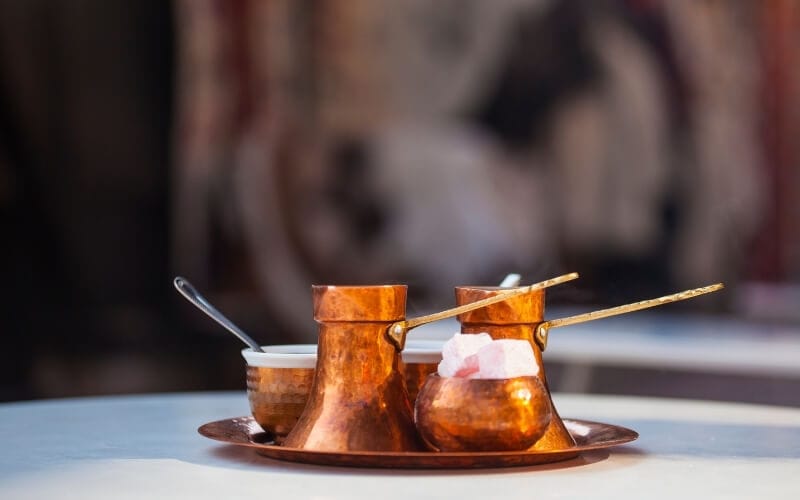
Bosnia and Herzegovina is one of the most culturally and ethnically diverse countries in the Balkans . If you have your sights set on this lesser-visited part of Europe for your next cultural trip, it’s the perfect setting to learn about the region’s different – often competing – influences and how they’ve shaped modern life.
Bosnia is the original cultural melting pot, and Sarajevo is where it all comes to a head. The city is divided into two parts – Ottoman and European – with the sprawling Old Bazaar on one side, and the Austro-Hungarian planned portion of the capital on the other. A plaque on the pavement marks the spot where East Meets West.
But the boundaries aren’t always that clear. Bosnia and Herzegovina’s character is a combination of Bosnian, Serb and Croat, layered with Jewish, Romanian, Albanian and Turkish traditions. The vignette of a mosque’s minaret and a church bell tower rising up side by side is a perfect motif for the country’s diversity.
Top cultural experiences in Bosnia & Herzegovina
Explore Sarajevo’s Old Bazaar: One of the most beautiful Ottoman bazaars in the region (and there are a lot), just wandering the rows of picturesque wooden shops connected by cobbled streets – the sound of coppersmiths beating intricate designs onto plates ringing in your ears – is a completely immersive experience. At the kafane coffeehouses, where kahva and rakia are served with much pageantry, you get a feel for famous Bosnian hospitality.
Take a food tour of Sarajevo: Bosnians are fiercely proud of their national cuisine. Dishes such as burek (filled savoury pastry) and cevapi are a common ground and bring the country together. A food tour of Sarajevo takes you behind the scenes on some of the city’s liveliest markets and busiest restaurants while giving you an insight into the history behind some of the country’s most iconic dishes.
Visit a woodcarving master in Konjic: Sarajevo in particular has an incredibly rich art and literature scene, as evidenced in the many festivals that take place in the city throughout the year. Bosnia’s heritage handicrafts shine a light on the culture of craftsmanship that has bestowed the country with so many beautiful landmarks over the years. Woodcarving has been practiced for generations in the city of Konjic and today, visitors can tour the masters’ workshops for an up-close encounter.
See the Stećci Medieval Tombstone Graveyards: Stećci medieval tombstones were laid during the time of the Bosnian Kingdom. Recognised as a UNESCO World Heritage Site, they’re found throughout the territory including in forests close to the border with Serbia . Carved from limestone, the Stećci contain motifs and inscriptions and provide a rare window onto this epoch of the country’s history that’s still shrouded in much mystery.
Greece – for markets, mythology & Orthodox Easter
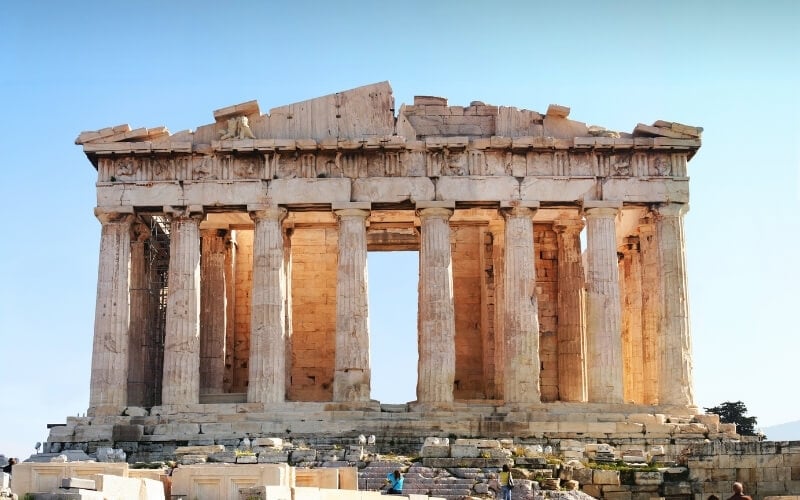
Greece is a country rich in culture, from the legacy of ancient history and mythology to traditional cuisine and celebratory festivals that still bring people together to this day. Greek nationals tend to be very proud of their history and culture , which can be seen in the well-executed museums, galleries and archaeological sites throughout the country.
Believed to be the ‘birthplace of Western civilisation’, Greece is known for its scholars, medics, architects, philosophers and politicians that shaped the way the world works today. This makes the country an excellent choice for cultural tourism as there are simply so many things to see and do that will both satiate your wanderlust while also teaching you new things.
Whether you’re interested in archaeological excavations, gastronomic tours, local festivals or ancient architecture, Greece certainly has you covered.
Top cultural experiences in Greece
Take a Mythology Tour of Ancient Athens: Athens has a whole host of archaeological sites to explore , from the Ancient Agora and Hadrian’s Library to the world-famous Acropolis and Parthenon perched on a hillside overlooking the city. One of the best ways to discover these sites is via a Mythology Tour that takes you around the best historic monuments and ruins while also giving you interesting information about the city and country’s history and mythology. This tour , suitable for all ages, gives you skip-the-line access to some of Athens’ most important landmarks along with an experienced guide to give you detailed history about how Greece became the centre of the world.
Visit the Athens Central Market: If your idea of cultural tourism involves food, you might be interested in a trip to the Athens Central Market and a local cookery class. A gastronomic experience allows you to soak up the sights and smells of the city’s biggest market, picking up local produce and souvenirs while also trying some tasty titbits along the way . You’ll then take your purchases back to the kitchen where you’ll cook up a storm using local recipes and techniques. Try classics like Dolmades (stuffed vine leaves), Tzatziki and Spanakopita (spinach and feta pies) to give you a real taste of traditional Greek cuisine.
Attend the Epidaurus Festival: The Ancient Theatre of Epidaurus, a grand amphitheatre located on the bank of the Acropolis Complex, runs an annual summer festival of art. The festival combines modern and traditional music, theatre and dance with the picturesque Ancient Greek setting, making it a real highlight for any traveller. Over the years, the Epidaurus festival has played host to names like Frank Sinatra, Maria Callas and Luciano Pavarotti.
Celebrate Orthodox Easter in Greece: Easter is one of the biggest traditional festivals on the Orthodox calendar, so no matter where you are in Greece during this time, you’re sure to come across some pretty exciting celebrations! One destination that always enjoys epic Easter festivities is the island of Corfu. Local Easter traditions begin on Palm Sunday (a week before Easter) and there are different festivities each day leading up to the main event.
Palm Sunday sees a large procession of the Holy Shrine; Monday, Tuesday and Wednesday see locals preparing their Easter meals and sweet specialities, going to evening ceremonies and lighting up the town with lanterns; Maundy Thursday is egg-painting day; Good Friday features the mournful marches of the philharmonic orchestra and the procession of epitaphs; Good Saturday features an artificial earthquake(!), bell ringing, the throwing of clay pots and tossing coins into a barrel; and the whole week culminates on Easter Sunday with a celebration of the Resurrection of Christ – fireworks, marches, music and traditional family meals galore!
By Chrysoula from Athens and Beyond
Learn more: 7 awesome cultural activities in Athens .
Russia – for ballet, banyas & borscht
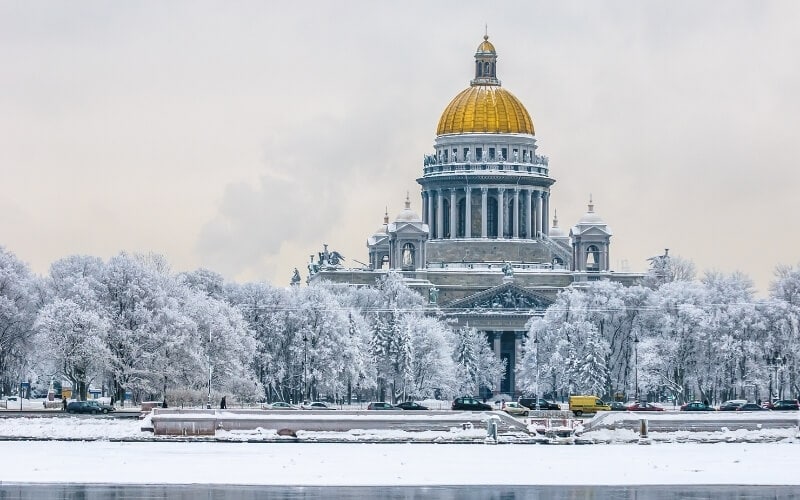
While many may think of Russia as cold and grey, this could not be further from the truth. From the famous colourful onion domes of St. Basil’s Cathedral to the gilded fountains of the Peterhof Palace, Russia’s beauty is undeniable.
Russia is also a country rich in culture and filled with literature, ballet, painting and classical music.
Top cultural experiences in Russia
To really delve into Russian culture, there are a few experiences you should have whilst here.
Experience a Russian banya : One of the best cultural experiences you can have in Russia is to visit a banya . A banya is similar to a sauna. The biggest difference, though, is that a banya has high levels of humidity, while a sauna usually has dry air. They’ve been a part of Russian life for over a thousand years! You wear funny felt hats to protect your hair and ears from the heat. This also helps to regulate your body temperature, so you are able to sit in the banya for a longer period of time.
Another interesting aspect of the Russian banya is ‘flogging’ using birch twigs ( venik ). This is supposed to benefit your health and improve your immune system, and honestly, if you have someone who knows what they are doing, it does feel really good!
After you’ve gone in and out of the banya a couple times, you then cool yourself off by taking a quick, cold shower, jumping into a cold pool or tub (banyas do have these), jumping into a snowbank (seriously). Or… You can just jump in a frozen lake!
See a ballet at the Bolshoi: Seeing a ballet at the Bolshoi Theatre is one of the best things to do in Moscow and all of Russia in general. Even though ballet did not originate in Russia, Russian ballet is world-renowned, and the locals are incredibly proud of the tradition. If you can, try to see a performance of The Nutcracker or Swan Lake on the historic stage. Tickets sell out very quickly, so don’t delay in purchasing them once they go on sale!
Experience NYE: New Year’s Eve is the biggest holiday in Russia. This is because Christmas was forbidden during the Soviet years. Many traditions were moved from Christmas to the New Year, including keeping presents under the Christmas tree and visits from the Russian equivalent of Santa. Celebrations and fireworks take place across the country on December 31 – the biggest and most famous displays are in Moscow’s Red Square and Gorky Park.
Sample Russian cuisine: No trip to Russia would be complete without experiencing the local cuisine. The best Russian food and drinks to sample on your visit are: Pelmeni (a Russian dumpling filled with meat and usually topped with sour cream); borscht (a traditional Russian soup whose main ingredient is beetroot); beef stroganoff (a Russian dish made with sautéed beef in a sauce with smetana ); syrniki (essentially a cottage cheese pancake topped with jam or sour cream – SO good!); kvass (a fermented beverage made from rye bread); and caviar and vodka (alas, you can’t come to Russia and not try caviar and vodka!)
By Lindsey from Have Clothes, Will Travel
Northern Europe’s Arctic Regions – for reindeer & Sami traditions
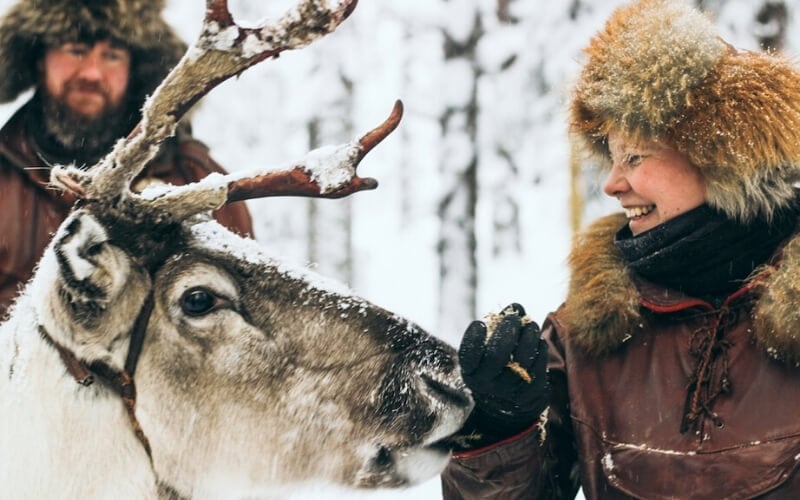
In Europe’s high northern reaches, you will find one of the continent’s oldest and most distinct cultures, the Sami. Spread across the Arctic regions of Norway, Sweden, Finland, and Russia, the Sami are Indigenous people who have traditionally led a nomadic lifestyle, known for herding their reindeer between their summer and winter feeding grounds.
The origins of the Sami are largely unknown, and it is believed that they once inhabited grounds much further south. But years of persecution drove them north and forced them to decrease livestock numbers in order to maintain their way of life.
Against all odds, they have managed to hold onto large parts of their culture, including languages, traditions and ceremonies. As the modern world has encroached further north, there have been clashes over natural resources and land, which has put the plight of the Sami at the forefront of people’s minds in recent years and led to movements to protect the people and the culture.
Top cultural experiences in the Arctic regions
Head to Tromso for an immersive Sami experience: Today, there are plenty of ways you can learn about and experience Sami culture. During the winter months, there are many Sami experiences in Tromsø, Norway and beyond where you can educate yourself about the Sami way of life, hear stories that have been passed down through the generations, and eat traditional foods.
Shop at a Sami market: Keep an eye out for Sami markets where you can purchase handmade traditional items.
Participate in a Sami festival: Norway is known to have the largest festivals and in various Arctic cities, you will find Sami festivals on National Sami Day (February 6th). In the summer, there are also Sami music festivals, such as the one found near Murmansk in Russia.
A visit to Northern Europe’s Arctic region is one of the most meaningful cultural trips in Europe as it helps bring attention to a group of people who have spent many years marginalised in their respective modern-day societies.
By Megan from Megan Starr
Andalusia – for Moorish architecture, tapas & Flamenco

Andalusia is an autonomous region in Southern Spain, geographically bounded by Spain’s southern coast. It’s culturally vibrant and very distinctive when compared to other parts of Spain such as Catalunya.
This part of the country was ruled by the Moors for centuries, and Moorish influence is evident in the cuisine, architecture and culture. Seville, Cordoba and Granada are all among the best Spain city breaks and each serve as a good base for exploring more of the region.
Top cultural experiences in Andalusia
Marvel at the Moorish architecture: The Andalusian architecture will capture your attention as soon as you land there, and this is probably the easiest way to start digging into the region’s past and cultural evolution. Cities like Seville and Granada have major UNESCO sites that will blow your mind – the style is in no way similar to buildings in France or even northern Spain for that matter. Islamic calligraphy and intricate details are most evident at the Real Alcazar Palace in Seville, the Alhambra in Granada , and the Mezquita in Cordoba.
Go tapas hopping: People in Andalusia are known for being a more little laid back, and generally enjoy food, family and companionship. Popular ‘tapas hopping’ is best experienced in Andalusia. Tapas bars in the south cultivate a cosy atmosphere with rounds of $1 dollar beers, spinach and chickpeas, cheese, and churros. Moorish/Muslim influence can be seen in the preparation of some foods, especially marzipan, and in the use of herbs and spices such as cumin and cilantro.
Watch a Flamenco performance: After food, flamenco is what defines Andalusia. Flamenco is a dance that is synonymous with Southern Spain and is one of the most energetic and passionate forms of dance/storytelling. Flamenco shows in Seville and other cities in Andalusia are a great way to understand and enjoy this side of Southern Spanish culture.
By Mayuri from To Some Place New
Cultural tourism destinations in the Asia Pacific
Central Australia • Timor-Leste • Sarawak, Malaysia • Cambodia • Japan • Bhutan • Kerala, India • Rajasthan, India • Uzbekistan • The Tibetan Plateau • Taiwan
Central Australia – for ancient landscapes, ochre & bush tucker

The Arrernte and Anangu people have lived in Central Australia for over 20,000 years. From Uluru and Kata Tjuta (the Olgas) to the MacDonnell Ranges and Alice Springs, they have made their home in one of Australia’s driest and hottest regions.
The landscape, its plants and animals permeate every aspect of their culture. The natural environment is the basis for the Creation (or Dreamtime) stories at the core of their beliefs, ceremonies and traditions.
Their relationship with the land also has a practical aspect as a source of food, shelter and medicine. The Arrernte and Anangu’s land management techniques, native foods and art have all found their ways into broader Australian life.
Today, members of the communities have roles as guides, ranges and managers of major tourism businesses. For travellers, there are many opportunities to appreciate the on-going connection the Arrernte and Anangu people have with the Central Australian landscape.
Top cultural experiences in Central Australia
Visit Uluru (Ayres Rock): You can’t go to Central Australia and not visit Uluru. It is an iconic Australian landmark and when you visit this enormous rock, you’ll find many ways to immerse yourself in Indigenous culture. At Yulara Resort you can join a free session to learn about Indigenous food, crafts and didgeridoo playing.
On your way to Uluru, stop at the Cultural Centre. There are ranger talks about the area’s wildlife, how the Anagu have lived in the area for thousands of years, and how that knowledge is used to manage the park today. There are also galleries featuring local art and craft. For something a bit different, try a Segway tour of the rock . As you cruise around the 10 km base, you get a wonderful explanation of the Creation Stories tied to many of the rock’s features, caves and waterholes.
Ochre Pits: Ochre is a natural clay that comes in a range of colours and has been used for ceremonial and medicinal purposes for thousands of years. The Ochre Pits are at a site in the West MacDonnell Ranges where ochre has been collected by Arrernte men for generations. The Ochre Pits are an easy and accessible stop as you tour the gorges of the West MacDonnell Ranges. The colourful ochre cliff face is spectacular and it is quite an experience to be in the presence of a site that has been used for so long and continues to play a role in Arrernte life.
Alice Springs Desert Park: With the lives and lore of the Arrernte tied so closely to the environment, this combination of a wildlife park and botanic garden gives you a great insight into their relationship with the land. Besides the fantastic desert animal exhibits, there is a full program of keeper and cultural talks over the day. Learn about surviving in the desert, bush food and the meaning many of the animals have in the daily life of the Arrernte. The park is in Alice Springs with the West MacDonnell Ranges providing a spectacular backdrop.
By Natalie & Steve from Curious Campers
Timor-Leste – for sacred houses, tais weaving & Cristo Rei

Asia’s youngest nation, tiny Timor-Leste fought hard for its independence, first from Portugal and later from Indonesia. Holding strong to customs and beliefs is part of the resistance and against all odds, the Timorese have managed to pass down many traditions through music, dance and storytelling.
Fiestas held year-round throughout the country showcases these oral traditions, while in recent years, contemporary collectives have began building on the nation’s heritage of performance arts to process the events of the past and express their visions for the future.
There aren’t many physical reminders of Timor’s time as a Portuguese colony left – most architecture was subsequently destroyed – but the invisible influence is still there, along with the influence of the Catholic Church.
In the more remote regions, ethnic groups such as the Fataluku speak their own language and observe a fascinating array of cultural practices you won’t find anywhere else on Earth.
Top cultural experiences in Timor-Leste
Tais weaving: Timor’s ornate national textiles are storytelling objects, filled with symbols inspired by folktales and animist traditions. At the Tais market in Dili you can shop for handwoven tais scarves and tablecloths, while visiting a weaving centre such as Koperativa Lo’ud gives you a chance to see the natural dyeing and weaving process in person.
See the uma lulik in Lospalos: Part of the Fataluku tradition, these sacred houses perched high on stilts symbolise the link between the dead and the living. They are sacred objects that cut an impressive profile as you pass them on the coast around far-eastern Timor.
Make the pilgrimage to Cristo Rei: Standing 27 metres tall on a hill overlooking the capital, Dili, Cristo Rei is the ultimate symbol of Timor-Leste’s piety. More than 99% of Timorese are Christian, and the church has played a huge role in shaping the island’s character post-independence. Walking the 590-step path lined with Stations of the Cross is a right of passage. At the top, views of Dili, Atauro Island and the sparkling coastline.
Sarawak, Malaysia – for ikat textiles, longhouses & forest trekking

The largest of Malaysia’s 13 states , Sarawak envelops much of Borneo. Local culture and way of life is intimately intertwined with the island’s flora and fauna and offers visitors experiences quite distinct from anything you find in Peninsular Malaysia.
Life, history, culture and spirituality is all heavily influenced by the area’s Indigenous peoples, most notably the Iban. Malaysia’s mix of Malay, Indian, Muslim, Chinese and British culture can also be felt in Kuching , the autonomous state’s biggest city and a hub for culture and the arts.
Top cultural experiences in Sarawak
Visit a museum in Kuching: The Tun Jugah Textile Museum, the Sarawak Cultural Village and the Sarawak State Museum – all in or near Kuching – offer immersive exhibits that explore Iban culture. The former is dedicated almost completely to the art of ikat weaving, a time-honoured craft tradition that’s kept alive by artisans and students who learn to dye and weave at the museum workshop.
Stay in an Iban longhouse: Travelling up river into the forest to spend the night at an Iban longhouse is an unforgettable experience. As well as sleeping in traditional quarters, you’ll get to taste home-cooked food and experience various oral traditions, including Renong singing and Ensera storytelling.
Eat Sarawak cuisine: Malaysia is a foodie’s paradise and Sarawak is no exception. In addition to the usual mix of cuisines served up at hawker markets, the state boasts many regional breakfast specialties including Sarawak laksa, kolo mee (Sarawakian noodles) and ayam pansuh (chicken cooked in bamboo).
Cambodia – for Theravada Buddhism, apsara & golden silk

It’s easy to think of Cambodian culture as a relic of the past – a crumbling stupa or a cobwebbed museum display. But nothing could be further from the truth.
Khmer culture is a living, breathing thing, and it permeates everything – from underrated Cambodian cuisine to the country’s handicraft industry and the young collectives in Battambang and Kampot who are reviving the arts scene.
Many traditions and art forms almost lost during the 1970s have been brought back from the brink by artists and entrepreneurs determined to keep Cambodian culture alive.
Whether you’re interested in the legacy of the most powerful Golden Age state, the Khmer Empire, or discovering reminders of the Kingdom’s time as part of French Indochina in the beautiful colonial architecture and peppercorn plantations, it’s never been easier for visitors to get a feel for Cambodian culture.
Top cultural experiences in Cambodia
Take a Buddhism tour of Siem Reap: Spirituality plays a huge role in contemporary Cambodian life and there’s no better lens for exploring the country through. After you’ve taken in the Temples of Angkor that blend Hinduism and Buddhism, learn the ins and outs of Theravada Buddhism with an immersive Buddhism tour of Siem Reap . It’s a life-changing experience that teaches you how ancient beliefs coexist with modern society.
Watch an Apsara performance: It wasn’t so long ago that Cambodia’s national dance, Apsara, was considered an endangered art form. Artist and genocide surviver Arn Chorn-Pond has almost single-handedly revived Apsara traditions through his organisation Cambodian Living Arts. Nothing captures the Cambodian spirit like the understated but immensely beautiful performance. Nightly shows are held in Phnom Penh along with hands-on Apsara workshops that teach visitors the basic moves.
Go forest trekking in Mondulkiri: Mondulkiri and Ratanakiri in Cambodia’s far north-east are two of the country’s most remote provinces , known for their thick forests and biodiversity, including wild elephants. Ethnic minority groups including the Tampuan and the Bunong have developed sustainable tourism offerings, hosting guests at homestays and organising guided forest treks. During the tours, you get a glimpse of how people have coexisted with the forest for generations, and learn about the struggles they face today.
Seek out Khmer handicrafts: From Siem Reap’s Golden silk to Takeo cotton and clay pottery in Kampong Chhnang, every Cambodian province has its specialty crafts, many of which are still made by hand according to traditional techniques. In addition to making the perfect Cambodia souvenir , many co-ops offer tours and workshops so you can see the processes up close.
Japan – for ryokans , geisha culture & tea ceremonies

For those seeking an immersive cultural travel experience, Japan offers visitors a unique look at some of the oldest and most beautiful traditions in the world.
From the historic temples and shrines found throughout the country to the many spiritual and cultural celebrations, there are plenty of opportunities for visitors to Japan to learn about the various philosophies and spiritual traditions that underpin Japanese culture.
Top cultural experiences in Japan
Observe a temple ritual: Consider participating in some of the various rituals at Japan’s temples and shrines. This is especially beneficial if you’re visiting Japan with kids , as it helps to gain a better understanding and appreciation for Japanese customs. Many people in Japan have deep-seated beliefs in symbolism. At the temples and shrines, you can observe and participate in practices that will bring you good fortune, luck, prosperity or health.
Spend the night in a ryokan : To truly embrace Japanese culture, book a stay at a ryokan rather than a hotel. These traditional Japanese inns typically feature rooms with tatami-matted floors and communal onsens or bathhouses. Guests tend to walk around the ryokan in a yukata or lounging kimono and slippers. It is also common for guests to walk around barefoot, as it is considered unclean to wear shoes inside.
Drink matcha : A tea ceremony is another immersive experience that is unique to Japan. Although popular throughout Japan, tea ceremonies are especially prominent in Kyoto, the home of geisha culture. Geishas are treated somewhat like celebrities in Japan, and booking a geisha performance and tea ceremony can be expensive and fairly difficult to arrange. However, you can book a tea ceremony with a maiko , or geisha apprentice, for a more modest price. This one-of-a-kind ritual ceremony is sure to be one of the most memorable travel experiences you’ll have in Japan!
By Melissa from Parenthood and Passports
Bhutan – for handicrafts, thangka & fertility symbols

Most people think of the Tiger’s Nest when they think of Bhutan. But this small, mountainous nation has a wealth of cultural history to offer in addition to its ornate monasteries.
Bhutan is a nation of crafters. In every town and city you will find streetwise vendors selling all manner of clothing, kitchenware, homeware and decorations that have been made using techniques that have been taught and passed down for hundreds of years.
Likewise, if you turn your attention to the buildings, you’ll see that many of them are adorned with colourful decals and patterns, especially designs that depict the eight auspicious signs which, among other things, represent wealth, good fortune, purity and harmony.
Bhutan is the only country in the world to measure their country’s wellbeing based on Gross National Happiness as opposed to Gross Domestic Production, which makes it (un)officially the happiest country on Earth.
Best cultural experiences in Bhutan
Attend a Tshechu ceremony: The annual Tshechu ceremonies show off Bhutan’s handicraft history perfectly. Throughout the year, locals gather across the country in regional Tshechus to celebrate Bhutan’s culture by singing traditional songs and performing dances in elaborate, brightly coloured costumes. At the Tsechu celebrations, an enormous religious banner or thangka depicting the country’s founder, Guru Rinpoche, is unveiled. The thangka is the size of a three storey building, hundreds of years old, and has not faded through the centuries due to the tradition of making sure that the light of the sun never touches it, so it’s still incredibly colourful and detailed.
Visit the Choki Traditional Art School: In order to see the historical handicrafts of Bhutan in production for yourself, make sure to visit the Choki Traditional Art School. Located just to the north of the capital city of Thimpu, here you can witness the students being taught how to weave, paint and sculpt masks, clothes, models, tapestries and dioramas from Bhutan’s history. Students’ ages range from elementary through to late teens, with all levels of skill on display. The students’ creations can then be bought from the school craft shop, with the proceeds helping fund the continuation of the institute’s classes.
Spot the phallus in Punakham: Punakham is the former capital of Bhutan, and was the seat of government until 1955. Located in the north of the country, the town is notable to western tourists for one particular reason. In the 15th century, a controversial master named Lama Drukpa Kunley (also known as the ‘Divine Madman’) popularised the phallus as a means to ward off slander and provide protection for those who lived in houses that displayed it prominently. Yes, it may be taboo for most of the world, but not here – these graphic symbols of fertility and good luck are artistically painted on walls everywhere!
By Jeremy from Cultura Obscura
Kerala, India – for houseboats, tea estates & contemporary art

Dubbed ‘God’s Own Country’, Kerala is a noodle-shaped state in the Southwest of India on the Malabar Coast. It’s known for its beautiful nature – especially a series of canals known as the backwaters and the hilly terrain of the Western Ghats Mountains.
Kerala people are officially the most literate in India and have the longest life expectancy. It is often said the Keralites have the best quality of life in this part of India, and that things are a lot more advanced. This is conveyed in the increasingly popular field of ecotourism and other initiatives.
The region is a beautiful mix of influences and religions. The spice trade has flourished in the area, which brought about European colonisation. You can feel Portuguese influence to this day, especially in the town of Kochi.
Top cultural experiences in Kerala
Cruise Kerala’s backwaters on a houseboat: With the decline of goods being transported on water, Kerala’s trade boats were repurposed into houseboats, and now provide a unique immersive experience on the famous backwaters. The most popular route is between Alleppey and Kumarakom or Kolam. Spending at least one night on the backwaters is necessary for the ultimate houseboat experience.
Soak up the tea heritage in Munnar: Munnar in the Western Ghats is famous for its tea production. You can visit several tea estates in the area and enjoy a tasting. In the village of Munnar, you can also experience the peaceful coexistence of three religions. There’s a Hindu temple, a Catholic church and a mosque all within a few meters from each other.
Attend the Muziris Biennale in Kochi: A bi-annual international exhibition of contemporary art takes place in Kochi. This is the largest festival of its kind in Asia. When the biennale is on, the whole city lives it. The main space for the festival is a large complex of empty buildings near the port. Here, art installations covering all possible mediums bring the space to life. It’s a wonderful sight and quite a modern undertaking in Kerala.
Watch the artists at work at Kerala Kalamandalam: This is one of India’s most traditional universities of art and culture. Students learn Indian performing arts, especially those typical for Kerala. When visiting, you can observe students practicing unique dances with distinct facial expressions such as the Kathakali or Ottan Thullal, learning martial arts, and playing on unique musical instruments. The school is located in Cheruthuruthy.
By Veronika from Travel Geekery
Learn more: 9 amazing cultural encounters in Kerala .
Rajasthan, India – for folk dance, thaali & camel fairs

Rajasthan, the ‘Land of Kings’, is one of the most historically and culturally significant states of India. Over the centuries, Rajasthan has witnessed many rulers and many epic battles. Each built their own magnanimous fort and helped develop the region’s rich culture of art, dance and literature.
Over the past few decades, the Ghoomar dance from Jodhpur region and Kalbeliya dance of the deserts of Jaisalmer and Bikaner have become famous all over the world. Along with dance, folk music and songs relating the heroic tales of epic battles, these form an essential part of Rajasthan culture.
Against a backdrop of the vast Thar Desert, this has all shaped the culture of Rajasthan as we see it today.
Top cultural experiences in Rajasthan
Rajasthan offers travellers a plethora of unique cultural experiences .
Be a bystander at the Pushkar Camel Fair: The Pushkar Camel Fair, held every year in November, is one of the largest animal trading fairs in the world. This colourful carnival is a great opportunity for travellers to experience the charm-in-chaos of traditional melas (Indian fairs) along with a huge tribal gathering. In 2018, nearly half-a-million people visited this multi-day festival. Pushkar is only 150km from Rajasthan’s capital, Jaipur, and is easily accessible by road.
Visit Choki Dhani: A resort village merely 20km from Jaipur, Choki Dhani is the go-to place to experience a collection of Rajasthan cultural experiences. Spread across 10 acres, this uniquely designed resort-village reflects the grandeur of the Rajasthani tradition. Visitors can experience Rajasthani traditional folk dance, watch a puppet show, see skits and sketches depicting important battles, and relish a traditional Rajasthani thaali (set meal), eaten while seated on the floor.
Watch a Dharohar dance performance: The Dharohar dance show at Bagore Ki Haveli in Udaipur is a mesmerising experience in itself. This hour-long show is a combination of many traditional, tribal and folk dances local to the region along with a puppet show. One of the highlights of the show is when an 80-year-old folk dancer performs with more than 10 earthen pots stacked on her head.
By Mainak from Places in Pixel

Uzbekistan – for ceramics, Silk Road heritage & plov

Uzbekistan is an upcoming cultural destinations in Central Asia. With a new visa policy, it is now easier than ever to visit the country – and there are many good reasons to do so.
Uzbekistan was once an important part of the famous Silk Road and has a rich cultural heritage that is still visible in the beautiful Islamic architecture and historic sites throughout the country.
Uzbekistan’s major cities including Samarkand, Khiva and Bukhara were multicultural melting pots where people from all over the world exchanged goods, ideas and philosophies. The Turks, Greeks, Persians, Russians and Mongols all ruled parts of what is now Uzbekistan. Each of them left behind their own influence.
With so much history around, it’s sometimes easy to forget modern Uzbek culture, but this is just as interesting. The Uzbek people are very friendly and will give you a warm welcome to their world of delicious Uzbek food, traditional dance and music, and beautiful handicrafts.
Top cultural experiences in Uzbekistan
Taste Uzbek cuisine: One of the highlights of Uzbek culture is without doubt its food. The best way to learn more about Uzbek food is by taking an Uzbek cooking class. Tashkent is a great place to do so and also has some great restaurants where you can try the country’s national dishes. The Plov Center serves plates of the national dish to thousands of people every day – the huge steaming pots and pans outside are impressive enough to warrant a visit.
Explore ikat and ceramic traditions: Another great cultural experience in Uzbekistan is to explore the country’s beautiful handicrafts. The Fergana valley is home to several centres of handicraft production where they still use traditional techniques. Margilon is famous for its ikat silk textiles and there are several silk factories that offer free tours to see how it’s done. The Usmanov Ceramic Workshop in Rishton also welcomes visitors for a short visit to see its pottery production and design process.
Watch a dance performance: Traditional dance and music is an important part of Uzbek culture. Uzbek dance is an ancient art that has been perfected over hundreds of years. In Bukhara, there are almost daily performances in the Nadir Divan Begi madrasah showing the traditional dances from the different regions in the country.
By Ellis from Backpack Adventures
Learn more: Things to do in Uzbekistan for cultural travellers .
The Tibetan Plateau – for horse trekking & nomadic culture

Sprawled across the eastern edge of the Tibetan Plateau, in the remote northern tip of China’s Sichuan province, Ruoergai town and county do not appear on Google maps. To Google, this locality is known by its Tibetan name, Zoige.
After 12 hours of following your car GPS from Chengdu to Zoige, climbing onto the Tibetan Plateau , Chinese road signs welcome you to Ruoergai, 3,500 meters above sea level.
Top cultural experiences on the Tibetan Plateau
Witness nomadic culture: Remote and isolated, Zoige/Ruoergai is the best place in the world to witness the disappearing Tibetan nomadic culture. All you have to do is drive around this vast, open grassland to catch a glimpse. You’ll see white nomads’ tents with smoky chimneys scattered on the sides of the road, surrounded by herds of domestic yak and protected by the menacing Tibetan mastiffs. The nomads are mistrustful of outsiders, which is not surprising given political tensions in the region.
Go horse trekking: Yet there is a way to experience the nomadic culture first-hand here – by taking a horse-trekking adventure with the local Tibetan Horse Trekking Agency in the nearby town of Langmusi. Tours range from a day hike to the hills – the domain of the nomads – to a multi-day horseback adventure with overnight stays in nomad tents. Guides are local Tibetans, so while you may not be having extensive discussions in English, you’ll be welcome in nomadic households.
Visit the monasteries and mosques in Langmusi: Encircled by forest-covered mountains, the small sleepy town of Langmusi is inhabited by three ethnic groups: Amdo Tibetans, Han Chinese and Hui Muslims. So, even just a visit to the town is a unique cultural experience. There are two large Tibetan monasteries on the hills above the town and a Hui mosque at its centre.
The nearest airport to Langmusi is Gannan Xiahe Airport, 130 km away. From Xiahe, you can take a bus to Langmusi, or arrange a car with a driver via Tibetan Horse Trekking.
By Margarita from The Wildlife Diaries
Taiwan – for night markets, Confucianism & forbidden relics

An island nestled off the coast of Mainland China, Taiwan is fast becoming one of the best cultural tourism destinations in Asia.
Its long history and combination of cultural influences – including Indigenous culture, Mainland China, Korea and even Japan – make Taiwan as intriguing as it is complex. Bustling with life, amazing food and beautiful scenery, this island has it all.
Top cultural experiences in Taipei
Eat your way through the Night Markets in Taipei: The capital city of Taiwan, Taipei, offers a world of things for people to see and do . One of the most popular culturally immersive activities for visitors is to head down to the local night market, the biggest one being the Shiling Night Market. Along with delicious local foods, you can also find clothes, accessories, games, cosmetics and more. Night Markets are significant because they play a huge role in Taiwanese culture . Locals and tourists alike flock to these areas each and every day to shop and socialise.
Observe the rituals at a Taiwanese temple: Taiwan is a very religious country with most people following either Buddhism or Confucianism. Many temples are built around these religions in a very extravagant manner. Visitors can take part in the prayer ceremony, burn some incense, or just sit back and observe. If you’re interested in visiting these temples, one of the best places to start is the Songshan Ciyou Temple, which is conveniently located right next to the Raohe Night Market.
Visit the National Palace Museum: This museum houses thousands of cultural relics, art and artefacts, including many items that were carried out of the Forbidden City in China and moved to Taiwan to protect them from destruction during the Chinese Civil War. It’s one of the largest collections of its kind in the world. Here, you can learn how the Chinese language was formed, see what kinds of ancient tools and weapons were used throughout history, and witness what life was like many hundreds of years ago.
By Wayne from Daily Tourist
Learn more: The best cultural experiences in Taiwan .
Cultural trips in Africa & the Middle East
Ethiopia • Oman • Mauritius • Morocco
Ethiopia – for coal-fired coffee, churches & injera

Ethiopia is a country like no other. Here in North East Africa, the steaming tribal lowlands of the Rift Valley collide with the cool thin air of the Northern highlands. The fertile lands towards the West produces some of the world’s best coffee, while the wind from the East carries whispers from Arabia. It’s truly a spectacular place to visit.
Ethiopia is even more unique in terms of its cultural treasures. As the only country in Africa never to be colonised, Ethiopia is a truly African country with African culture. If you want to see lions chase and eat zebras, go somewhere else. If you want to see and experience African culture at its purest, then book your ticket to Ethiopia already!
Top cultural experiences in Ethiopia
Visit the city of Lalibela: Situated in the northern highlands, Lalibela is the most important pilgrimage site in the country for the predominantly Orthodox Christian population of Ethiopia. It is here that you’ll find eleven incredible churches completely hewn from the rock. If you see only one place in Ethiopia, make it Lalibela.
Attend Sunday Mass: The UNESCO recognised Lalibela churches still function as churches, and attending a Sunday morning service before sunrise with hundreds of pilgrims is an experience that you won’t forget. Afterwards you can join the crowds eating injera while basking in the morning sun. Be prepared for the fact that everyone will want to come and talk to you.
Hike to a remote mountain community: Hiking into the mountains surrounding Lalibela will take you to small farming communities where time has seemingly stood still. It’s also possible to visit one of these communities for a day and learn how to cook traditional Ethiopian dishes such as injera , tibs or shiro . You’ll also find a few cave churches and monasteries in these mountains. The priests will be eager to show off their ancient treasures for a small tip.
Participate in a traditional coffee ceremony: Ethiopia is considered the birthplace of coffee, and man are you in for treat! The best way to drink a cup of buna (Ethiopian coffee) is to attend a coffee ceremony. It starts off with the hostess washing green coffee beans and then roasting them in a pan over an open fire. The coals are infused with natural incense made from tree resin. You’ll see bags of these tree resin for sale in markets all over Ethiopia. Finally the coffee beans are ground and brewed in a special coffee pot called a jebena . It’s expected that guests will have at least three cups of buna, but why stop there?
By De Wet & Jin from Museum of Wander
Oman – for dhow boats, frankincense & Bedouin culture

Unlike some of its more glitzy neighbours who’ve traded their souqs for skyscrapers, Oman has approached cultural preservation from a different angle. It’s often called out as the most culturally ‘authentic’ country in the region .
This part of the Middle East has long been a melting pot of Arabian and East African cultures, with a strong South Asian influence. Semi-nomadic Bedouin tribes that paint the desert with their costumes and brightly coloured carpets are less accessible, but a range of tourist-friendly desert experiences allow you to brush with this part of Omani culture.
Contemporary Omani traditions are deeply tied to Ibadism and revolve around an annual calendar of Islamic festivities.
Top cultural experiences in Oman
Get lost in a souq: Perfumed by rose petals and frankincense, Oman’s souqs are a treat for the senses. Roam displays of henna and spices while getting a feel for commerce and culture. Muttrah Souq in the capital, Muscat, and the delightful Nizwa Souq are both must-visits.
Visit a dhow workshop in Sur: Not only are Oman’s wooden boats an impressive feat of engineering, they’re steeped in legend and tradition. In Sur, the home of Sinbad the Sailor, you can watch expert craftsmen fitting the vessels together without glue or nails.
Spend the night at a desert camp. The Sharqiya Sands, Oman’s slice of The Empty Quarter, is the territory of nomads. Bedouin-inspired desert camps recreate the experience of staying with a Bedouin tribe – albeit with a luxury edge! Spending the night in a desert camp involves listening to folk music, eating Omani food, while the very lodgings – the tent lined with carpets you’re sleeping in – is part of the Bedouin tradition.
Mauritius – for street food, Sega & sugarcane
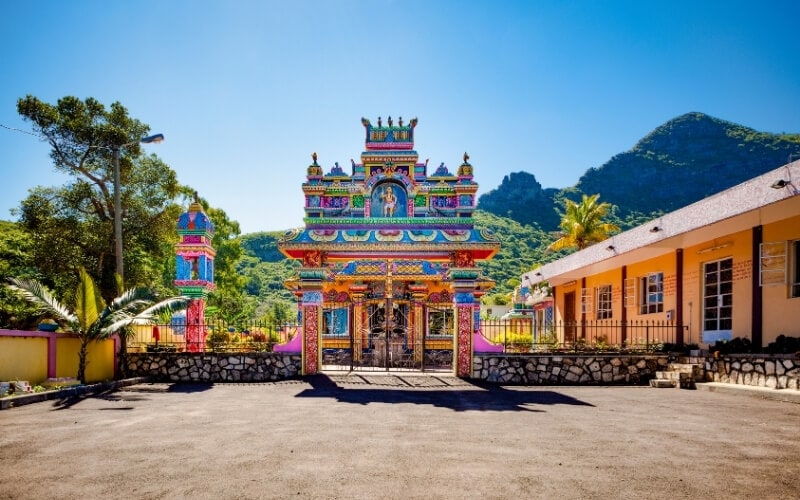
The island nation of Mauritius is normally associated with splendid white-sand beaches and luxury resorts – thus its inclusion on this list of cultural trips might come as a bit of a surprise.
Yes, this is an island paradise incarnate, but it also happens to be one of the most ethnically and religiously diverse countries in the region, with African, Indian, Chinese and South Asian cultures – along with layers of Dutch, French and British influence – all accounted for.
Many elements of Mauritian culture can be traced back to the island’s plantation roots and the legacy of slavery. Mauritians honour this period of history while proudly showing off their culture in everything from the cuisine to the music.
Top cultural experiences in Mauritius
Take a street food tour of Port Louis: Mauritian food, much like Mauritian society itself, combines Chinese, Indian, Creole, East African and European flavours. Must-try dishes include vindaye , an adaptation of West Indian vindaloo, Chatini (chutney) is a popular condiment and traces its roots back to British-Indian origins, briani (biryani) and creations gifted from the island’s Chinese community, such as bol renversé (a layered dish of rice, chicken, shrimp and vegetables). The best way to get a grasp of these edible delights is by joining a guided street food tour of the capital, Port Louis .
Watch a Sega performance: Recognised by UNESCO for its value to Intangible Cultural Heritage, Mauritian Sega is a performance art characterised by music, song, dance and costume. It started out as an expression of pain and loss practiced by slave communities but has morphed over time into a colourful, optimistic expression of local culture. Elaborate Sega costumes moving to the tune of Creole lyrics is a . Many hotels offer Sega performances.
Visit an old sugarcane farm: Mauritius’ history of slavery and plantation farming has left an indelible mark on the island. Visiting preserved plantation homes and crumbling sugar mills is a step back in time to the colonial period, while regenerated cane fields such as those on Frederica Reserve now serve as a sanctuary for the island’s wildlife.
Learn more: 8 ways to experience Mauritian culture .
Morocco – for riads , tajines & mint tea

By all accounts, Morocco is a beguiling destination . The most popular country to visit in North Africa, it stands out for its diversity of landscapes and cultural experiences.
Morocco is an important gateway to the rest of Africa, and has been since Roman times. Its position at the northernmost tip of the continent – with a coast shared between the Atlantic and the Mediterranean – means it’s been at the centre of conquests and various cultural overlap throughout the ages.
Today, Morocco lives with the legacies of various civilisations, including Roman, Phoenician, Jewish, Berber, Arabic, Spanish and French. Morocco has a very hospitable culture, steeped in a refined art of living. When you visit the imperial cities of Marrakech and Fes, or the coastal towns of Essaouira and El Jadida, you will notice a multitude of little details typical of Moroccan life.
This art of living and careful hospitality is very important in Morocco and, as a visitor, you can experience it in many different ways.
Top cultural experiences in Morocco
Try your hand at Moroccan cuisine: Moroccan cuisine is world-famous for its use of spices and mix of sweet and savoury flavours. Every restaurant offers a selection of delicious tajines , a stew of meat and vegetables. Couscous is on the menu every Friday and if you like sweets, you will be in heaven. Sweet biscuits mixing flower, almond and spice flavours make a delicious afternoon treat. If you’re interested in learning new skills, cooking classes are often available in traditional riads in Marrakech. Moroccan cuisine takes time and care, but the results are delicious and quite easy to recreate at home.
Shop for authentic handicrafts at a souq : Another great way to experience the heart of Morocco is to spend time in the souks. Shopping in Morocco is a fun experience and haggling for a good price is the norm. You have to engage with merchants, ask questions, make small talk and, most importantly, have fun with it! Never lose your smile and sense of humour, and it will great fun! The most spectacular shopping experience is in Marrakech due to the volume and intensity of the medina. It’s easy to get lost but that’s part of the experience too!
Sip mint tea, a Moroccan tradition: When you travel throughout Morocco, you will notice that mint tea is served everywhere. This is a pivotal element of Moroccan hospitality. Green tea is mixed with fresh mint leaves and served in little decorated glasses. There is a little bit of theatre in serving mint tea, with the brass or silver teapot held high above the glass… Traditionally, mint tea is served with a lot of sugar, but these days it is common for sugar to be served on the side, so you can dose it yourself. And you can even buy a set of decorated tea glasses in the souk as a souvenir!
By Delphine from Lester Lost
How to have a more culturally immersive travel experience anywhere in the world
It doesn’t matter if it’s a remote community or a popular city – there are things you can do to have a more enriching cultural travel experience no matter where you’re going.
Here are 10 practical tips to help you on your way.
1. Do your research before you go: Familiarise yourself with local customs and learn a bit of the history so you know what types of experiences to look out for. This guide is a great start!
2. Seek out festivals and special events: Many tourism boards feature a calendar on their website, or you can try using Facebook to find local events. Check out my four-part series about the world’s best festivals, starting here .
3. Eat local. Food is one of the easiest routes to culture. Here are my tips for eating local when you travel.
4. Stay at a homestay. Spending time with a local family will give you an invaluable insight into daily life. Here are my tips for using homestays in Vietnam.
5. Participate in a class or workshop . Trying a cooking class, handicraft workshop or any other hands-on experience is one of the easiest ways to immerse yourself in local culture. I recommend using Get Your Guide , Airbnb Experiences, Cookly or Backstreet Academy to find opportunities.
6. Learn a bit of the language. Even knowing a few basic words will show you’re interested and can go a long way to forming relationships.
7. Shop local. Support artisans and heritage skills. Here are my tips for finding authentic and meaningful souvenirs .
8. Slow down. The best cultural experiences are often spare-of-the-moment and can’t be planned in advance. Keep some flexibility in your travel itinerary for spontaneous detours.
9. Go your own way. You don’t always have to follow the pack. Venturing away from the crowds will often give you access to unique and meaningful experiences.
10. Don’t be afraid to ask questions. If in doubt, ask a local. Remember that cultural tourism is all about exchange – don’t just take, make sure you give something back in return.
Are you a cultural tourist? Which of these destinations is your favourite? What other places would you add to the list? I’d love to hear your suggestions in the comments below!
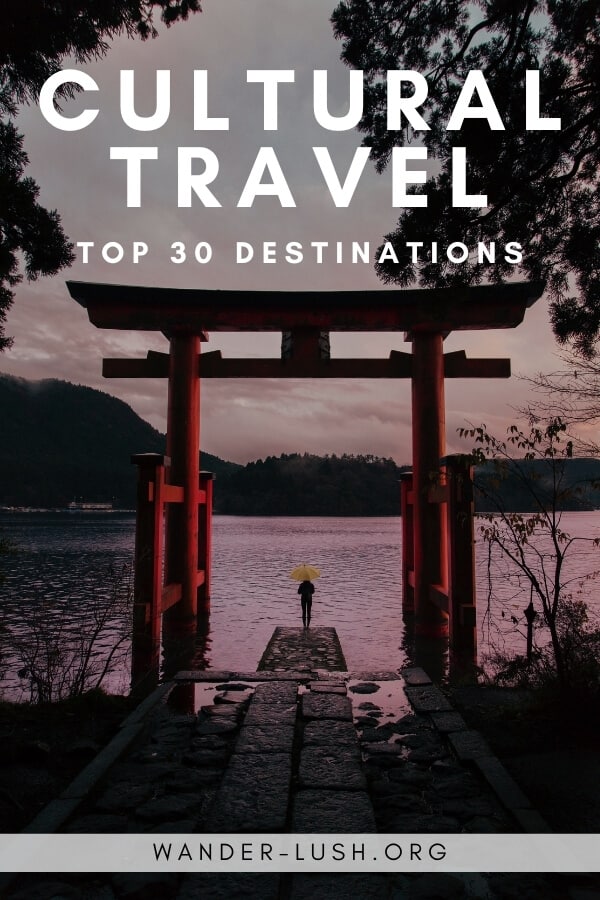
World’s best cultural trips: Save it & share it on Pinterest
More cultural travel inspiration.
- 30+ amazing cultural experiences around the world
- Best cultural festivals around the world
- Best destinations for tea culture
- Best destinations for wine culture
- Unique food cultures around the globe
- My collection of cultural travel guides for 30+ cities and regions
- World’s best unique & underrated travel destinations
This is a very wonderful article about cultural destinations! Thank you so much for sharing!
One can easily visit India and experience the different kinds of cultures in a particular place. Tourism in India has been much more managed and safe with passage of time. Rajasthan tourism has been the most reliable and safe in India. One can enjoy all the traditional dishes and enjoy living in the palaces as a hotel room in different cities. But, whenever you are visiting to Rajasthan, India travel guide is a must because one can easily lose track of pathways in the puzzle like roads of the cities in Rajasthan. One can easily plan for a Kerala tour packages because of the minimal expenses in the state.
Leave a Reply Cancel reply
Your email address will not be published. Required fields are marked *
- Subscribe to future posts

Culture Trip Review [2024]: Reliable travel guide, or nah?
![trip culture Culture Trip Review [2024]: Reliable travel guide, or nah?](https://assets-global.website-files.com/63d1baf79ce0eb802868785b/63d1baf89ce0ebf4856881e0_Culture_Trip_logo.jpg)
In this article, we review Culture Trip, exploring its features, pros, and cons to help you determine if it’s actually a reliable source for travelers eyeing authentic experiences.

Culture Trip is not an unfamiliar name among travelers. You would have come across its website when brainstorming travel ideas, researching about a destination, or looking for inspirational travel guides.
We've previously reviewed travel guides like Lonely Planet and Fodors , but what exactly is a travel guide and how is it any different than travel blogs?
A great Travel guide identifies itself as a traveler’s “essential companion” that feeds users with credible travel stories. While it has increased in popularity over the years, the app has also faced a fair share of criticism regarding the originality, timeliness, and accuracy of its content.
So, in this article, we are reviewing Culture Trip, exploring its features, pros, and cons to help you determine if it’s actually a reliable source for travelers eyeing authentic experiences.

What is Culture Trip?
Founded in 2011, The Culture Trip is a UK-based company that aims to motivate people to travel more and embrace different experiences around the world. Since then, Culture Trip has become a go-to travel guide for all of the best tourist hotspots around the world.
How does Culture Trip Work?
Culture Trip provides articles, podcasts, and videos that contain useful information on destinations around the world that cover a variety of aspects such as culture, food, entertainment, heritage, accommodation, unusual attractions, and others.
Culture Trip has a large team of content creators from around the world with local knowledge and insights on places they write about. In addition, there are also many other interesting features offered by the app.

What are the Major Features of Culture Trip?
Browse localized travel content .
Culture Trip prides itself on providing travel-content curated by travel experts and locals to provide travelers with insider-tips and helpful guides on destinations. This way, travelers can avoid tourist traps and over-crowded places and dive into local and authentic experiences. Moreover, it prioritizes accommodation options that align well with local culture, sustainability, and reasonable pricing.
Create Travel Itineraries
In addition to just viewing content, Culture Trip also lets users create itineraries based on travel information that’s available on the platform. Users can save or bookmark interesting attractions, hotels, cafés, and restaurants in a particular destination and build a detailed travel itinerary out of it. Once you have added everything, you can view your trip plan detailed on a map.
Place Bookings on Accommodation and Adventures
If you come across an interesting boutique or hotel, you can make reservations via the app/website by clicking the link. In addition, you can also book experiences like safari rides, kayaking tours, parasailing, etc.
Sign Up for Virtual Experiences
A relatively newer feature that was introduced during the pandemic was the ability to book virtual experiences like online cookery classes, painting classes, meditation courses, and other similar experiences via the app.
How Much Does Culture Trip Cost?
Culture Trip is free to use and is available in both web and mobile versions (iOS and Android). They do provide tours, but Culture Trip itself is a free source of travel inspiration and guide.
What's TRIPS by Culture Trip?
TRIPS by Culture Trip is a new venture by Culture Trip that operates similarly as tour operators, providing adventure-like tours to small groups who embrace Culture Trip's values of sharing travel experiences, making new friends, and immersing in the local, authentic culture. You can book their tours through TRIPS now!

Benefits of using Culture Trip
Interesting travel content.
Culture Trip is a great place to browse for content related to unusual attractions and lesser-known destinations. For the most part, it does provide insightful tips on how to avoid common experiences and discover local flavor. Some content is also in the form of stories that are persuasive to read.
Based on your location, the app suggests interesting places or activities nearby for users in search of unusual attractions to explore. It improves user experience as you don’t have to search for them by yourself using filters. This is one of the popular features of the app.
Direct bookings
The fact that you can browse for good, cost-effective accommodation options and also book them via the app or website is pretty useful. The app guarantees free cancellation subject to their terms and conditions with the option of changing dates as well. It makes travel planning a step easier and hassle-free.
Users can make use of Culture Trip’s features and access its content free of charge. An account is not essential for browsing content but is recommended if you need to create trip plans and save places that interest you. You can download its articles and access them offline as well.

Downsides to using Culture Trip
Duplicated content.
You can come across multiple versions of the same destination or point of interest contributed by different writers. This is because Culture Trip continuously renews content based on updated information but doesn’t do a good job of getting rid of the old ones.
So, for a user, it could be difficult to sift through these and figure out what’s the most useful version to gain the required information.
Limited itinerary building feature
Culture Trip’s itinerary building has a major limitation.
In many ways, it resembles a shopping cart of an online store.
Itineraries or travel plans can only be created from options available within the platform as users cannot import travel ideas from elsewhere. We think it would be a more user-friendly travel planner if the “import” feature is available.
- Questionable accuracy
It’s hard to validate if Culture Trip’s travel stories are completely accurate and timely. Users have complained of articles suggesting places that have shut down a long time prior to the publication date. Inaccuracies related to information on popular attractions have also been noted.
While the platform does claim to prioritize authentic user experiences, it generates its revenue through affiliate links – which means their selections could also be biased.

Is Culture Trip Worth it?
We believe that Culture Trip is worth considering if you're looking for an alternative to typical travel guides like Lonely Planet or Fodors! Culture Trip's travel content provides a fresh perspective on boutique & culturally immersive traveling, reflected in the TRIPS tours as well.
With Culture Trip's content being completely free and easy to navigate and use, they're a great consideration of travel guides to use when researching sights to see or places to go!
While Culture Trip's travel content is generally better, in my opinion, than general travel guides like Lonely Planet, much of their content is duplicated and not very unique since different writers publish their content on the platform. There are also Culture Trip reviews online that point to the question of legitimacy and authenticity of Culture Trip's content that travelers should be aware of.
With that being said, if you consider that not all of their content is perfect, they're definitely worth checking out, especially since they're a free source of inspiration!
Our Rating: 3.9/5
- Large database of travel resources
- Intuitive Apps
- Integration of TRIPS tours.
- Repetitive content
- Bad for Itinerary building
Alternatives to Culture Trip
We think Culture Trip is a great platform to seek inspiration for your travel bucket list as it has informative and interesting content on different destinations around the world. But there are plenty of alternatives out there.
For example, recent popular travel publications such as CNTraveler & Atlas Obscura are great alternatives to check out!
While they're a great platform to seek inspiration, they're not constantly and daily updating their travel content. We are! Check out our travel blog now!
Plan your trip with Pilot!
Got everything you need to start planning your trip, maybe with a friend or two? Give Pilot a try!

Disclosure : Pilot is supported by our community. We may earn a small commission fee with affiliate links on our website. All reviews and recommendations are independent and do not reflect the official view of Pilot.

Satisfy your wanderlust
Get Pilot. The travel planner that takes fun and convenience to a whole other level. Try it out yourself.
Trending Travel Stories
Discover new places and be inspired by stories from our traveller community.
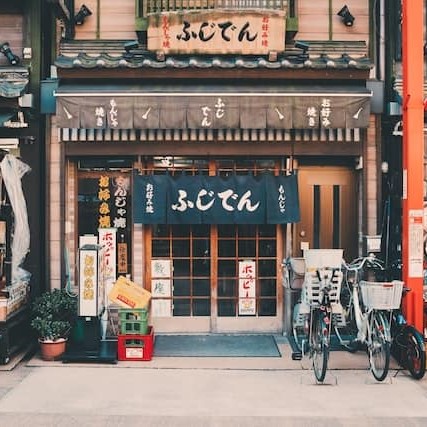
Related Travel Guides

Lonely Planet Travel Guide & App Review: Worth it in 2024?

Atlas Obscura 2024 review: Travel and explore the extraordinary!

Tripadvisor Traveler Review: Looking Past the Ads in 2024
![trip culture Viator Tours Review [2024]: Are Their Tours Any Good?](https://assets-global.website-files.com/63d1baf79ce0eb802868785b/645171990771de441d7b1570_viator-tours.jpeg)
Viator Tours Review [2024]: Are Their Tours Any Good?

Booking.com Review: Still The Place to Book Travels in 2024?

The 8 Best Trip Planner Apps to Help You Travel Better
Make the most of every trip.
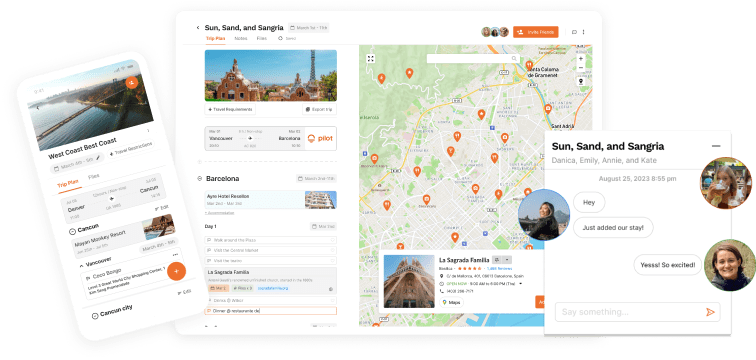
You won’t want to plan trips any other way!
The trip planner that puts everything in one place, making planning your trip easier, quicker, and more fun.
U.S. News & World Report Acquires Culture Trip Website
Strategic investment expands the company’s travel content services.
U.S. News Acquires Culture Trip Website
Washington, D.C. - U.S. News & World Report, a global leader in consumer advice and decision support, today announced the acquisition of TheCultureTrip.com , a premier travel website with thousands of curated travel guides and a marketplace for tours all across the world. TheCultureTrip.com is the latest addition to U.S. News’ travel franchise, which includes rankings, trips and advice to empower travelers with information to help them decide where they want to go, choose how to get there, where to stay and things to do.
Founded in London in 2011, Culture Trip curates experiences across the globe in addition to its 75,000+ travel-related articles about destinations large and small. With millions of monthly users and over three million app downloads, Culture Trip has a passionate and dedicated audience.
“As we continue to find ways to help people make informed decisions, the Culture Trip website is a natural extension of our U.S. News Travel business,” said Eric Gertler, U.S. News Executive Chairman & CEO. “Consumers want information they can trust and resources they can rely on when planning a trip. This acquisition now empowers millions of travelers with the tools they need to find the best value and experience.”
TheCultureTrip.com was acquired from Culture Trip Travel UK Ltd., a travel-related holding company. The website and small, insider-led group trips will continue to operate under the Culture Trip brand. Terms of the acquisition were not disclosed.
“The Culture Trip mission is to connect people through expert reviewed destinations globally and is considered one of the most ‘insider’ resources for travelers deciding where they want to have the best experience. Adding to this, the ability to experience the travel recommendations via our small, insider-led group trips makes Culture Trip a holistic travel platform,” said Ana Jakimovska, CEO, Culture Trip Travel UK Ltd. “We are thrilled about the expertise and resources U.S. News brings in helping us fulfill this mission.”
More than 50 million travelers visit travel.USNews.com each year to research hotels, vacations, cruises, travel rewards and tours and attractions. The Culture Trip website joins a suite of services developed by U.S. News for travelers, including GoToSea and worldwide travel guides .
U.S. News Chief Financial Officer & Chief Operating Officer Neil Maheshwari led the acquisition for U.S. News. “This is a core strategic acquisition for U.S. News,” said Maheshwari. “When combined with our travel vertical and our GoToSea cruise website, Culture Trip’s potential will be unlocked with the ultimate goal of better serving today's global traveler.”
Culture Trip Travel UK Ltd. was exclusively advised by Lazarus Consulting, a boutique M&A advisory firm.
Media Contact: Kate O’Donnell, [email protected], 202-955-2212
About U.S. News & World Report U.S. News & World Report is the global leader in quality rankings that empower consumers, business leaders and policy officials to make better, more informed decisions about important issues affecting their lives and communities. A multifaceted digital media company with Education, Health, Money, Travel, Cars, News, Real Estate, Careers and 360 Reviews platforms, U.S. News provides rankings, independent reporting, data journalism, consumer advice and U.S. News Live events. More than 40 million people visit USNews.com each month for research and guidance. Founded in 1933, U.S. News is headquartered in Washington, D.C.
About Culture Trip Culture Trip was created to inspire people to go beyond their cultural boundaries and experience what makes a place, its people and culture, special, unique and meaningful. An essential travel companion, Culture Trip has evolved as a travel e-commerce brand with content at its core. Culture Trip inspires people and enables them to turn this inspiration directly into reality – all in one place via booking unique, insider-led, small group trips curated with care for the planet.
About Press Room
The latest press releases and information about U.S. News & World Report
- 50 Worldwide Experts
- 4 Million Travelers Inspired
- 200+ Destination Guides
- 10,000 Products Tested
Raising a Young Traveler: Why Your Child Should Help Plan the Next Family Trip
Get Inspired
Plan the Perfect Trip to Scandinavia and the Nordic Region
The World's 7 Coldest Cities
The Most Beautiful Beaches in South America
These Are the Best Christmas Markets in Germany
10 Must-Visit Winter Destinations on the East Coast
The 10 Best Ski Towns in the US
How to Spend an Amazing Week in Hokkaido
7 Best Beaches in Naples, Florida
Your Trip to Manchester: The Complete Guide
Inside the Annual Competition That Determines the Best Baguette in Paris
Meet Our Writers
We have more than 50 writers—from lifetime locals to licensed tour guides—sharing useful travel advice and inspiration from destinations around the world.
TripSavvy’s Diversity Pledge
Few things celebrate culture and diversity more than travel. As editors of a travel site, we pledge to share those things with our readers and actively work to make our site and content anti-racist.
How We Test and Recommend Products on TripSavvy
Our team of experienced travel writers and editors scours the retail landscape (both online and off) to find the best products. And to make sure you’re getting the best recommendations, we test thousands of products a year—both in our 10,000-square-foot lab testing space in Brooklyn and out in the world, testing products the same way you would use them.
On Our Radar: TripSavvy’s Travel News Roundup
The World's Coolest Hotel Chain Finally Lands in Brooklyn
Would You Book Your Next Hotel Stay on Instagram?
What It's Like to Cruise Around French Polynesia on Windstar's Star Breeze
These 6 Travel Hacks Will Help You Save Time and Money on Your Next Flight
You Can Soon Fly to Rome for Less Than $300 on Norse Atlantic's New Route
Find your next adventure
Discover the best of the best in the world.
The 8 Best Travel Humidifiers of 2023
What to Pack in Your Carry-On When Flying With Kids
The Best RV Accessories of 2023
6 Easy Ways to Learn a Foreign Language Before You Travel
Keep Your Cosmetics Safe With These Top Travel Makeup Bags
Your Bucket List Trip
15 Delicious Restaurants in San Jose, Costa Rica
72 Hours in Budapest: The Perfect Itinerary
Your Complete Guide to Paris' Seine River
Visit the Stunning Salar de Uyuni, the Salt Flats of Bolivia
11 Must-Do Activities When Visiting Terceira Island in the Azores

Culture Trip
Health Safety
Global operator
Service level
Travelers age
Trip prices
$1,369 — 4,259
Tour languages
Quick Links:
Trips other travelers liked
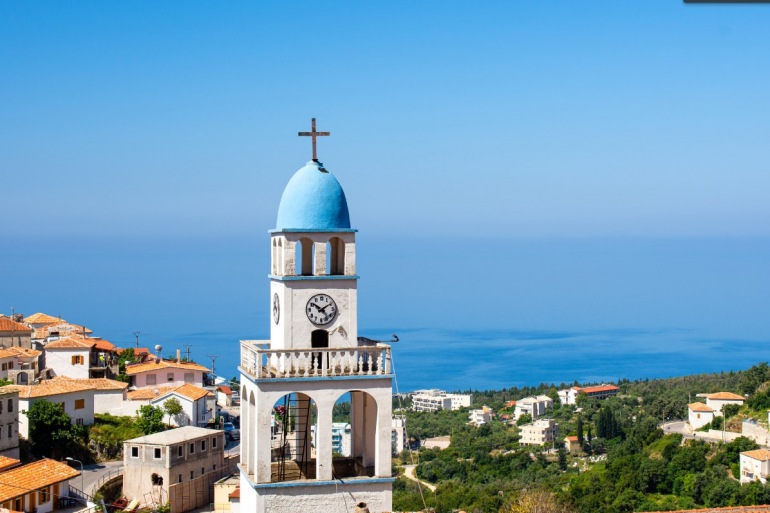
Discover Albania
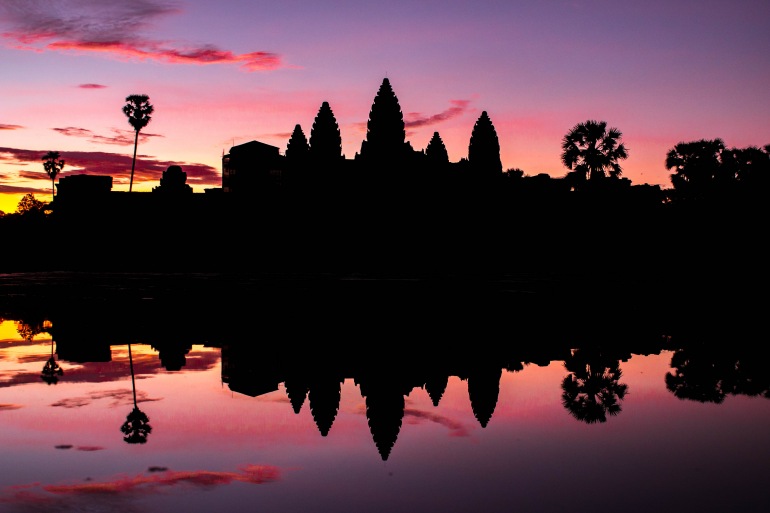
Family Fun In Cambodia

Northern Lights Escape

Ice to Sun 2023: Argentina & Brazil

Brazil (North): See & Experience it ALL in 13 Days, 1st Class Custom Tours

4-Days Cuyabeno

Iceland Discovery

“Where the mountains meet the sea”- Kotor Bay, Lovcen & Skadar Lake National Park
Member savings.
Sign in to see which companies give additional savings to Travelstride Members (it’s free)
- Group Tours
- North America
- Central America & Caribbean
- South America
- Rivers & Seas
- Middle East & North Africa
How well do you know the world?
Culture trip reviews & ratings, a must for anyone....
A Culture Trip curated trip is a must for anyone burnt out planning their own trips or going to a remote or unfamiliar area. Having a local insider was the highlight...
Great Intro of Italy....
A great introduction to the sights of Southern Italy! The trip left me knowi...
Perfect way to experience a country!
The trip to Costa Rica organized by Culture Trip was incredible! It was a perfect way to experience a country, and was a perfect blend of adventure & relaxing. T...
More authentic experience than I would have booked on my own....
I had always been hesitant to try a group tour, because they seemed so stuffy and restricting. I like to do things off the beaten trail when I travel, and I try as b...
See all Culture Trip reviews

Unlock Community Benefits
Travel better together.
- Save favorite trips and itineraries
- Get insider insights
- Receive personalized recommendations
- ... and much more
More Details
Solo friendly.
- No single supplement
- Solo & Singles Travel
- Yoga, Health & Rejuvenation
Travelstride featured in
About the company.
TRIPS by Culture Trip For over a decade, people have trusted Culture Trip to help them discover some of the world’s coolest and unexpected destinations and experiences - now we can take you there. Book our curated multi-day TRIPS by Culture Trip itineraries, to truly experience extraordinary places, together with a small group of culturally curious travellers.
Our travel experts have done all the planning to create exciting and perfectly balanced itineraries combining unique stays, immersive activities and authentic experiences, with enough free time to explore on your own and unwind. On the trips, our Local Insiders are with you to show you their destination like never before, share their insights and take you to the secret spots you couldn't find yourself. With TRIPS by Culture Trip, we help you experience the world while being good to it, and to connect with a place, its people and its culture. And because we know that booking travel with confidence is more important than ever, we are committed to making it hassle-free for you. About Culture Trip Culture Trip was created in 2011 to inspire people to go beyond their cultural boundaries and experience what makes a place, its people, and its culture special, unique, and meaningful. So for over a decade now, Culture Trip’s global community of travel experts and Local Insiders have hand picked the world’s best bits to share travel stories and unbiased recommendations, together with curated collections of places to stay, hotels, things to do, experiences - and now also TRIPS by Culture Trip which are unique small-group adventures. Why TRIPS by Culture Trip? A small-group travel experience Together with a small group of culturally curious travellers, you get to truly experience - not just visit - the world. Groups will welcome up to 18 travellers and you can join solo or with others. Our small groups enable you to get to know the other travellers, bond quickly and enjoy your trip to the fullest whilst building friendships and forming life-long memories. Curated itineraries For our curated, diverse itineraries, our travel experts do all the planning and hand-pick the best bits of a place: all itineraries combine hyper-local, authentic activities and immersive experiences, with quality accommodation that has a personal feel. Whether that’s well-known hotspots or more off-grid trails, city or nature - with us, they will all feel like hidden gems. Thoughtfully planned with ample free time to unwind or explore solo, our trips offer the right balance of action and relaxation. Local Insider Our trips are led by expert Local Insiders who know the destination inside out and show a place like never before. They share unique insights and in-depth knowledge, show lesser-known places and reveal hidden gems that travellers might not be able to access or do on their own. They also take you to secret spots you couldn’t find yourself and activities that are impossible to do on your own or you wouldn’t have otherwise discovered. Value and quality TRIPS by Culture Trip is not about the lowest price. Trying to be the cheapest just isn’t good for our planet or for local communities - so we focus on value and quality, while offering fair prices. Prices include the Local Insider; activities; accommodation based on two people sharing, with single occupancy available with a supplement; transport throughout the trip and a range of meals.
Culture Trip Trips & Specials

Majestic Turkey

Discover Jordan

Complete Portugal

Ultimate Egypt

Seductive Southern Italy

Go Wild in the Galapagos Islands

Georgia and the Caucasus

Epic Morocco
Want a tailor-made trip instead, your trip, your way, planned by an expert:.
- You choose budget, destinations, activities, transport & lodging type
- Expert designs the itinerary for you, and once approved, takes care of logistics
Top Culture Trip Trip Categories
Culture trip company ranking by category, about travelstride, find your perfect trip, travel confidently.
- Car Rentals
- Airport Transfers
- Attractions & Tours
- Bundle & Save
- Destinations
- Trip.com Rewards
Shanghai & Nantong 4-Day Adventure: Discover Magic, Culture, and Seaside Serenity

April 21, 2024 · 2 min read
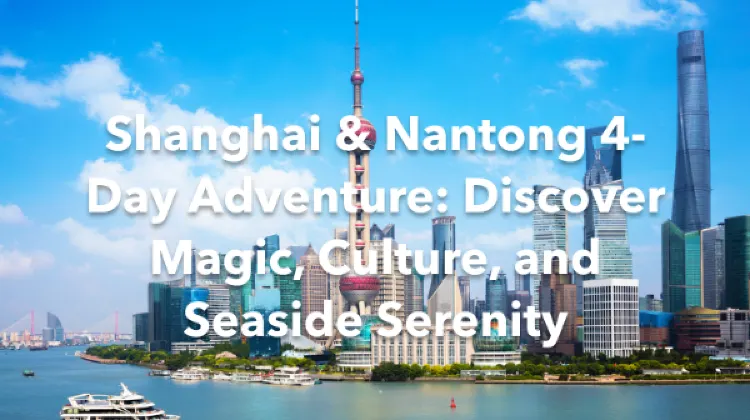
Embark on a 4-day escapade to the vibrant city of Shanghai and the serene Nantong with our meticulously crafted itinerary. Day 1 is dedicated to the wonders of Shanghai Disney Resort, a magical theme park offering a full day of enchantment. Later, gaze upon the cityscape from the iconic Oriental Pearl Radio & Television Tower. Day 2 invites you to the tranquil Yu Garden, a classic landscape garden, followed by a stroll through the bustling Nanjing Road Pedestrian Street. Conclude the day with a cultural immersion at the Shanghai Museum. On Day 3, dive into aquatic adventures at Shanghai Haichang Ocean Park before exploring the natural beauty of Lang Mountains Scenic Area in Nantong. Your journey culminates on Day 4 with a visit to the charming Lusi Fengqing District and a relaxing day at Bihai Silver Sand, also known as Venice Hotel on the Sea, where you can bask in the coastal splendor. This itinerary promises a blend of excitement, culture, and relaxation, ensuring memories that will last a lifetime.
- Day 1: Enchanting Adventures in Shanghai's Magical Kingdom
Shanghai Disney Resort

Kickstart your Shanghai escapade with a sprinkle of pixie dust at the Shanghai Disney Resort, an enchanting theme park where fairy tales come to life. As the first stop in your itinerary, immerse yourself in a full day of adventure and wonder. From the thrilling rides to the captivating parades, every corner of this magical realm promises a unique experience. Located in Chuansha New Town, Pudong New Area, the resort is a world-class entertainment destination that offers endless fun for both the young and the young at heart.
Attraction Info
- Shanghai Disney Resort, Chuansha New Town, Pudong New Area, Shanghai
- Suggested tour duration: 1-2 days
- Open from 04/18-05/05,8:30am-9:30pm
Recommended Nearby Restaurants

Oriental Pearl Radio & Television Tower
After a day filled with Disney magic, elevate your evening with a visit to the iconic Oriental Pearl Radio & Television Tower. Spend a couple of hours marveling at the panoramic views of Shanghai's skyline from this architectural marvel in Lujiazui. The tower's futuristic design and multimedia exhibits, coupled with the breathtaking city vistas, make it a must-visit landmark that perfectly encapsulates the blend of tradition and modernity that defines Shanghai.
- No. 1 Century Avenue, Lujiazui, Pudong New Area, Shanghai
- Suggested tour duration: 2-3 hour
- Open from 01/01-09/28,9:00am-9:00pm;Open from 09/29-10/06,8:30am-9:00pm;Open from 10/07-12/31,9:00am-9:00pm

Where to Stay Tonight
Oriental riverside hotel shanghai (shanghai international convention center), the ritz-carlton shanghai, pudong.
- Day 2: Cultural Charms and Urban Delights in Shanghai
Begin your second day with a serene morning at Yu Garden, an oasis of tranquility amidst Shanghai's bustling streets. As the first stop of the day, allow the classical landscapes to enchant you with their timeless beauty. The garden, a masterpiece of Chinese horticulture, is a perfect representation of traditional design, featuring pavilions, rockeries, and ponds that harmonize with the natural world. Spend an hour meandering through the paths, taking in the meticulously maintained scenery that has been a place of peace for centuries.
- Shanghai Yuyuan Tourism Business District (the main entrance of Yuyuan Garden on the north side of Huxin Pavilion Jiuqu Bridge)
- Suggested tour duration: 1-2 hour
- Open from 02/01-02/08,Tue-Sun,9:00am-4:30pm;Closed from 02/01-02/08,Mon;Open 9:00am-2:30pm on 02/09,Fri;Open from 02/10-02/17,9:00am-4:00pm;Open from 02/18-12/31,Tue-Sun,9:00am-4:30pm;Closed from 02/18-12/31,Mon;Open from 9:00am-4:30pm during Ching Ming Festival,Labour Day,Dragon Boat Festival,Mid-Autumn Festival,China's national day

Nanjing Road Pedestrian Street
After the calm of Yu Garden, immerse yourself in the vibrant energy of Nanjing Road Pedestrian Street, the next sequence in your Shanghai adventure. This bustling thoroughfare is a microcosm of the city's spirit, where traditional meets modern. Spend an hour exploring the characteristic neighborhood, with its blend of historic shops, chic boutiques, and street vendors offering a glimpse into the daily life of locals. The pedestrian street is a perfect spot to observe the city's dynamic pulse and perhaps indulge in some shopping or sample local snacks.
- Henan Middle Road, Huangpu District, Shanghai
- Suggested tour duration: 1-3 hour
- Open 24 hours
Shanghai Museum
Conclude your day with a deep dive into China's rich history at the Shanghai Museum, a cultural treasure trove. Set aside three hours to wander through the museum's vast collection, which spans millennia. From ancient bronzes and ceramics to calligraphy and paintings, each exhibit tells a story of China's artistic heritage. The museum's architecture itself is a nod to the country's past, with a round dome and square base symbolizing the ancient Chinese concept of a round heaven and a square earth. It's an enlightening finale to a day filled with the best of Shanghai's culture and history.
- 201 Renmin Avenue, Huangpu District,Shanghai
- Suggested tour duration: 3-6 hour
- Closed on Mon;Open on Tue-Sun,9:00am-5:00pm;Open from 9:00am-5:00pm during Chinese public holidays,The daily capacity for the daytime session is limited to 8,000 people. The exhibition hall visit requires advance reservation with a maximum limit of 2,000 people per night, divided into different time slots.
Shanghai Lianzheng Hotel (People's Square Subway Station)
- Day 3: Aquatic Adventures and Scenic Splendors
Shanghai Haichang Ocean Park
Begin your third day with a splash at Shanghai Haichang Ocean Park, a marine life wonderland where the ocean's mysteries come alive. Nestled in Pudong's Nanhui New Town, this park promises a full day of excitement with its diverse array of aquatic exhibits and thrilling rides. Dive into the underwater world and marvel at the exotic marine species, or feel the adrenaline rush on one of the park's many roller coasters. The park's commitment to conservation and education ensures that every encounter is not only enjoyable but also enlightening.
- No.166 Yinfei Road, Nanhui New Town, Pudong New District, Shanghai
- Suggested tour duration: 0.5-1 day
- Open from 04/01-04/03,Mon-Wed,9:30am-5:30pm;Open from 04/04-04/06,Thu-Sat,9:00am-9:00pm;Open 9:30am-5:30pm on 04/07,Sun;Open from 04/08-04/27,Mon-Fri,9:30am-5:30pm;Open from 04/08-04/27,Sat-Sun,9:00am-8:30pm;Open from 04/28-04/30,Mon-Tue, Sun,9:30am-5:30pm

Lang Mountains Scenic Area
After immersing yourself in the aquatic wonders, take a serene 2-hour retreat to the Lang Mountains Scenic Area. Located in Lanshan Town, this natural gem is a stark contrast to the morning's oceanic escapades. The Lang Mountains offer a tranquil escape with their lush landscapes and ancient cultural sites. Hike along the scenic trails, breathe in the fresh mountain air, and soak in the panoramic views that have inspired poets and painters for centuries. It's the perfect way to unwind and reflect on the day's adventures.
- 18 Lingang Road, Lanshan Town, Nantong City
- Open from 8:30am-4:30pm

Pengxin Garden Guobin Hotel
Hanting hotel (nantong langshan scenic area branch).
- Day 4: Serene Lusi and Bihai's Coastal Charm
Lusi Fengqing District
Begin your final day with the tranquil ambiance of Lusi Fengqing District, a picturesque spot nestled in Lusigang Town. As the morning sun casts its golden hues, enjoy a leisurely two-hour stroll through this serene area, where the blend of natural beauty and cultural elegance sets a peaceful tone for the day. The Lusi Fengqing District is not just a feast for the eyes; it's a place where you can immerse yourself in the local lifestyle and perhaps capture some of the most memorable photographs of your trip.
- Lusigang Town, Qidong City, Nantong City

Bihai Silver Sand (Venice Hotel on the Sea)
Conclude your Shanghai Nantong adventure with a full day at the enchanting Bihai Silver Sand, also known as the Venice Hotel on the Sea. Located in the Venetian Bihai Yinsha Scenic Spot, this coastal paradise offers a unique blend of luxury and natural splendor. Feel the soft silver sands beneath your feet and listen to the symphony of waves at this seaside retreat. Whether you're basking in the sun, indulging in seaside activities, or simply taking in the panoramic views, Bihai Silver Sand is the perfect finale to your four-day journey.
- Venetian Bihai Yinsha Scenic Spot on Henghai, No. 1 Hengda Road, Qidong City, Nantong City
- Open from 8:30am-5:30pm

Qidong Henghai Sea Venice Xiaduo Holiday Villa
Evergrande venice resort.
* All user reviews in this article have been translated by machine.
* The information above is subject to change at any time. For the latest information, please check the websites of hotels and attractions.

<h3>Trending Searches</h3>
Popular Content
- Zhangye 3 Days Itinerary
- Beijing 3 Days Itinerary
- Huludao 2 Days Itinerary
- Savusavu 1 Day Itinerary
- Caylloma Province 1 Day Itinerary
- Manukau 1 Day Itinerary
- Metropolitan City of Genoa Rome 3 Days Itinerary
- Xiapu 1 Day Itinerary
- Hyderabad 3 Days Itinerary
- Sevier County 1 Day Itinerary
- Merida 1 Day Itinerary
- Pingtan 1 Day Itinerary
- Polonnaruwa 1 Day Itinerary
- Washington D.C. New York 2 Days Itinerary
- Chun'an 3 Days Itinerary
- Fukuoka 3 Days Itinerary
- Changsha 3 Days Itinerary
- Kunming Yuxi 5 Days Itinerary
- Daocheng 1 Day Itinerary
- Baoshan 1 Day Itinerary
- Customer Support
- Service Guarantee
- More Service Info
- Website Feedback
- About Trip.com
- Terms & Conditions
- Privacy Statement
- About Trip.com Group
Other Services
- Investor Relations
- Affiliate Program
- List My Property
- Become a Supplier

25 Things to Do in Nashville to Get Your Cowboy Boots Dirty
Updated : April 26, 2024
Table of Contents
Music and entertainment , history and culture , eats and treats , book a trip to music city with aaa .
Nashville, the capital of Tennessee, is rich in history, music and culture. It’s a place many have on their bucket list thanks to its infectious energy. While spring and autumn may be considered the best times to visit Nashville , there are many fun things to do in Nashville to soak in the city’s vibrant atmosphere.
Use this guide to help plan your Nashville trip, whether you want to two-step in a lively square dance or savor delicious Southern comfort food.
Most know Nashville as the “Music City” due to its deep roots in American music, especially the country genre. There are many places to check out to get a taste of that Nashville sound, but below are some of the most popular musical things to do.
1. Attend a Live Broadcast at the Grand Ole Opry
Time needed: 1 hour to ½ day (depending on show and/or tour)
Address: 600 Opry Mills Drive Nashville, TN 37214
The first on the list is none other than the famous Grand Ole Opry House . Its respected history and exclusive membership makes the Grand Ole Opry one of the biggest stage shows in country music. If you can snag tickets (highly recommended!), you'll witness a show featuring six or more artists performing a diverse range of country music styles. Beyond the main event, guided tours offer a glimpse behind the scenes, showcasing the stage, backstage areas and even the dressing rooms.
2. Take a Stroll on Broadway
Time needed: ½ to full day
Address: Broadway St, Nashville, TN 37201
You’ll find the best Nashville bars and nightlife on Broadway. This iconic street is bursting with amazing live music from each honky tonk, each with its themes and details. See famous artists performing live in their bars or catch upcoming stars captivating new audiences with their sound. Broadway is also a great place to purchase a new pair of cowboy boots or some souvenirs to bring home. Most enjoyable at night, Broadway boasts bright neon-lit signs that illuminate the street.
3. Visit the Country Music Hall of Fame
Time needed: One to two hours
Address: 222 Rep. John Lewis Way S Nashville, TN 37203
Dive right into the culture and history of country music at the Country Music Hall of Fame. Explore the interactive exhibits to see iconic instruments, legendary musicians and how country music has evolved over the years. The exhibits include recording snippets, historic video clips and live performances to allow you to fully immerse yourself in the Nashville attraction. Be sure to stop by the famous RCA Studio B that's attached to the museum.
4. Enjoy the Music at Bluebird Cafe
Time needed: Two to three hours
Address: 4104 Hillsboro Pike, Nashville, TN 37215
Since its opening in 1982, the Bluebird Cafe has curated a list of famous country music stars who got their start performing there, including Taylor Swift, Garth Brooks and Trisha Yearwood. This intimate venue offers live music throughout the day, so you might just discover the next country star in these smaller Nashville concerts. Be prepared for crowds, as the Bluebird Cafe is a beloved Nashville destination, but the unforgettable experience is well worth it.
5. Experience the Johnny Cash Museum
Time needed: 30 minutes to one hour
Address: 119 3rd Ave S, Nashville, TN 37201
Although it's one of the smaller museums in Nashville, the Johnny Cash Museum is a cool treasure for music lovers to check out. The museum holds one of the world's largest collections of Johnny Cash memorabilia, generously collected by his close friend Bill Miller.
Walk through the halls to learn more about the singer’s turbulent life, from his upbringing in Arkansas to his famous live album recording at Folsom Prison. The museum also includes interactive exhibits and a gift shop to purchase a piece of Cash history to take home.
6. Visit the National Museum of African American Music
Address: 510 Broadway Nashville, TN 37203
The National Museum of African American Music (NMAAM) preserves the legacy of music genres influenced and created by African Americans. This museum celebrates the enduring influence of Black artists on American culture, showcasing the evolution of genres like jazz, gospel and blues.
Explore six captivating exhibits featuring artifacts, memorabilia and historical objects. Use your time at this museum to gain a deeper appreciation for the impact of these music genres and the stories behind them.
7. Tour the Famous RCA Studio B
Time needed: One hour
Address: 1611 Roy Acuff Pl, Nashville, TN 37203
See the origins of the Nashville music scene yourself at the famous RCA Studio B . The studio has a recording history of well over 35,000 songs, with many recorded by legendary artists like Elvis Presley, Dolly Parton and Willie Nelson.
Now part of the Country Music Hall of Fame and Museum, the studio retains its original 1970s decor. Take a tour to learn about the studio's fascinating history, see the original equipment used by music legends and even sit at the very piano Elvis Presley once played.
8. Attend a Concert at the Schermerhorn Symphony Center
Time needed: Two hours
Address: 1 Symphony Pl, Nashville, TN 37201
Unlike the Grand Ole Opry, The Schermerhorn Symphony Center puts on Nashville concerts for various music genres. Home to the acclaimed Nashville Symphony Orchestra, the Schermerhorn stages concerts encompassing classical, jazz, contemporary pop and even music inspired by popular Broadway shows and films like Harry Potter.
They also cater to families with children's concerts held in the Mike Curb Family Music Education Hall. Tickets sell out very quickly, so book well in advance to secure your spot!
No Nashville adventure is complete without exploring its vibrant history and rich culture. Below are the top places that most Nashville travel guides will point you to.
9. Learn About Nashville’s Parthenon
Address: 2500 West End Ave, Nashville, TN 37203
You may have heard of Nashville's nickname, "The Athens of the South." It owes thanks to Nashville's Parthenon, a full-scale replica of the Athenian landmark located in Centennial Park. Built for the 1897 Centennial Exposition, the Parthenon is the only exact-size replica of the original Parthenon.
Today, it houses an art museum where you can learn more about the history of the original Parthenon and explore its current exhibitions.
10. Stop by the Tennessee State Museum
Address: 1000 Rosa L. Parks Blvd, Nashville, TN 37243-1120
The Tennessee State Museum is one of the many free things to do in Nashville . It includes artifacts from the American South dating back 12,000 years to the early 1900s.
The museum includes permanent exhibits that cover different eras of Tennessee, including its role in American wars like the Spanish-American War and World War II. History buffs will enjoy seeing the museum’s random oddities, like Daniel Boone’s cutlery set and pocket knife.
11. Experience the Frist Art Museum
Address: 919 Broadway Nashville, TN 37203-3822
Art lovers visiting Nashville can't miss the First Art Museum . Originally built as Nashville's main post office in 1934 and re-opened as a museum in 2001, the Frist offers a unique experience. Unlike traditional museums, it has no permanent collection. Instead, it showcases themed exhibitions that rotate every six to eight weeks.
You might encounter a beautiful Michelangelo classic one week and a collection of modern American photography the next. The museum also includes 30 interactive stations, perfect for visitors of all ages to create stop-motion animations or learn printmaking techniques.
During the summer months, plan your visit to coincide with live music performances that complement the artwork beautifully.
12. Take a Nashville Bus Tour
Time needed: One to three hours
Explore the Music City in style with a Nashville bus tour. Let an expert guide show you the best parts of the city, highlight landmarks to check out and tell you more about Nashville's rich history.
A bus tour is a great way to start your trip off right, get oriented and better understand the city’s background. Plus, it's always fun to people-watch the bustling crowds on Broadway!
13. Check Out Sweet Rides at the Lane Motor Museum
Address: 702 Murfreesboro Pike, Nashville, TN 37210
Speaking of rides, car enthusiasts will love visiting the Lane Motor Museum. Founded by Jeff Lane in 2003, the museum is home to 150 displayed vehicles from Lane’s 550-piece collection. You’ll encounter European sports cars, unconventional microcars, vintage American vehicles and even one-of-a-kind creations.
Whether you have a deep passion for cool automobiles or love checking out weird and unique places , the Lane Motor Museum is a must-see.
Indulge in Southern cuisine during your stay, like Nashville’s famous hot chicken, cheesy macaroni and cheese and delicious craft beverages. Below are some of the best activities to savor the city’s unique flavors.
14. Enjoy a Tasting at Nelson’s Green Briar Distillery
Time needed: One to one and a half hours
Address: 1414 Clinton Street, Nashville, TN 37203
Immerse yourself in the rich history of Tennessee whiskey at Nelson’s Green Briar Distillery . Opt for a guided tour to learn about the distillery’s generational history and the whiskey-making process, then end with a tasting of their handcrafted products.
Whether you’re a whiskey enthusiast or simply curious about the craftsmanship behind the drink, Nelson's Green Briar Distillery offers an enjoyable experience in the world of fine spirits.
15. Catch the Heat from Nashville Hot Chicken
- Prince's Hot Chicken: 123 Ewing Dr #3, Nashville, TN 37207
- Bolton's Spicy Chicken & Fish: 624 Main St, Nashville, TN 37206
- Hattie B's Hot Chicken: 112 19th Ave S, Nashville, TN 37203
For the spice lovers or foodies out there, you can’t visit Nashville without trying some authentic hot chicken. Every restaurant will have its own unique take on the dish, but you should expect some spicy kick and bold seasoning in the chicken.
A popular order is a hot chicken sandwich with traditional white bread and pickles. Some popular hot chicken spots are Prince's Hot Chicken, Bolton's Spicy Chicken & Fish, and Hattie B's Hot Chicken.
16. Explore Nashville’s Craft Brewery Scene
Time needed: Three hours
With a ton of breweries throughout Nashville, why not go on an independent craft brewery tour? From rich stouts to light Mexican lagers, you’re sure to find your ideal pint. Even those who prefer nonalcoholic options can enjoy them, with breweries like Southern Grist brewing alcohol-free beers.
Take a brewery tour for a glimpse into the brewing process, or enjoy a casual sit-down to hang out with friends or meet some locals with a cold one in hand.
17. Embark on a Guided Food Tour in Downtown Nashville
There are many great restaurants in Nashville , so we recommend taking a self-guided or private food tour to see what the city’s cuisine is all about.
Guided tours take you to the best spots and local favorites, where you can enjoy popular dishes like hot chicken, meat-and-three and slow-cooked barbecue. During, you’ll learn more about the city’s culinary history, and what makes Southern comfort food so satisfying to the soul.
18. Enjoy a Meal at One of Nashville’s Food Halls
Assembly Food Hall Address: 5055 Broadway Place, Nashville, TN 37203
Nashville has several food halls and large indoor marketplaces with multiple food vendors. These unique dining spots usually have restaurants of different cuisines, so everyone in your party can get exactly what they’re craving. Popular options include Assembly Food Hall in downtown Nashville and Hunter’s Station. From international cuisine to Southern food, everyone will find something delicious to enjoy in these food halls.
Beyond its reputation for great music and delicious food, Nashville is also known for its outdoor sights and attractions. Below are some of the best outdoor things to do in Nashville, Tennessee.
19. Stroll Through Centennial Park
Nestled in the heart of Nashville, Centennial Park offers a vibrant escape from the city bustle. Nicknamed "Nashville's Central Park," this 132-acre urban oasis boasts several walking trails, gorgeous gardens and charming bridges.
The park's popularity even reached the music world, with a mention in Taylor Swift's song "Invisible String." Centennial Park is also home to a replica of the Parthenon, making it a two-in-one attraction for your visit.
20. Explore the Cheekwood Estate and Gardens
Address: 1200 Forrest Park Drive, Nashville, TN 37205
Since opening in 1960, the Cheekwood Estate and Botanical Gardens has grown into a popular Nashville attraction, welcoming over 400,000 visitors annually. Explore the 55-acre estate’s mansion, which holds a permanent collection of paintings and sculptures. Or take a stroll through the several themed gardens and a sculpture trail.
The estate is enjoyable to visit all year, with its seasonal flower displays, holiday season activities and special events like concerts.
21. See the Sights on a Riverboat Cruise
Riverboat cruises are a popular way to see the city from a new perspective. Set sail on the Cumberland River aboard a paddlewheel vessel or the iconic General Jackson Showboat.
While onboard, take in the sights of nearby Nashville landmarks , like the John Seigenthaler Pedestrian Bridge and Ryman Auditorium. If you’re lucky, your boat captain might play a few country tunes during the ride, allowing you to fully immerse yourself in the city’s unique charms and sounds.
22. Birdwatch at Radnor Lake State Park
Address: 1160 Otter Creek Road, Nashville, TN 37220
Radnor Lake State Park is a 20-minute drive from downtown, but it's some of the best hiking you’ll find around Nashville . This picturesque lake is surrounded by various trees and shrubbery. Observe the different birds that call the area home, like woodpeckers and waterfowl. Spanning over 1,400 acres of protected natural area, the park has 10 trails winding over seven miles, offering something for every outdoor explorer.
23. Take a Bike Ride Through Percy Warner Park
Address: 50 Vaughn Road, Nashville, TN 37221
After a long day of traveling or taking a bus tour, it's sometimes nice to stretch out your legs. Enjoy a walk or bike ride through Percy Warner Park, part of The Warner Parks.
Located southwest of the city center, the park spans over 3,100 acres, with nine color-coded trails that range between 150 yards and 4.5 miles. Take in the fresh air while enjoying beautiful overlook views and scenic roadways.
24. See the Colorful Murals in the Gulch
Time needed: Thirty minutes
Address: Located southwest of Downtown Nashville
The Gulch is a vibrant neighborhood in Downtown Nashville that offers beautiful street art and an array of shops and restaurants to check out. Many colorful murals adorn buildings throughout the area, each representing unique themes and eclectic styles.
These vibrant murals provide a fresh perspective on the city’s artistic spirit and culture. The Frist Art Museum is also in this neighborhood.
25. See Your Favorite Animals in the Nashville Zoo at Grassmere
Address: 3777 Nolensville Pk, Nashville, TN 37211
Booking a trip to Nashville with your kids ? We highly recommend taking your family to the Nashville Zoo in Grassmere. It’s one of the most visited destinations in the state, and for good reason.
The zoo spans over 188 acres, with more than 3,700 animals from 350 different species. Some of the most popular areas of the zoo are the Tiger Crossroads, Giraffe Savanna and Alligator Cove.
There are plenty of things for kids of all ages to do, from watching animal demonstrations at the Unseen New World plaza to riding the Soaring Eagle Zip Line. Plus, the zoo puts on a Zoolumination display during the winter months, displaying 1,000-lit custom-made Chinese lanterns.
AAA Travel can help bring your Nashville travel plans to life. Use our Trip Canvas tool to easily build and book your trip, and use your AAA Membership to save on accommodations and things to do in Nashville throughout your stay. Let AAA be your trusted partner in creating amazing memories in Music City.
More Articles
Travel like an expert with aaa and trip canvas, get ideas from the pros.
As one of the largest travel agencies in North America, we have a wealth of recommendations to share! Browse our articles and videos for inspiration, or dive right in with preplanned AAA Road Trips, cruises and vacation tours.
Build and Research Your Options
Save and organize every aspect of your trip including cruises, hotels, activities, transportation and more. Book hotels confidently using our AAA Diamond Designations and verified reviews.
Book Everything in One Place
From cruises to day tours, buy all parts of your vacation in one transaction, or work with our nationwide network of AAA Travel Agents to secure the trip of your dreams!
Taylor Swift and Travis Kelce Went on a Beach Trip With Gigi Hadid and Bradley Cooper

According to People , Donna was overheard saying Travis sent her a photo from the couples’ beach day and gave her a heads-up that Cooper would be attending the summit, too. Donna ran into Cooper at the event and said, “Travis told me you were going to be here.” She shared that Travis couldn’t attend the summit himself because he is filming his new game show, Are You Smarter Than a Celebrity?.
It’s unclear when exactly the couples went on their trip and what else they did in the picturesque beach town .
Taylor's ‘Tortured Poets’ Songs Rumored to be About Travis

Taylor Swift Doesn’t Hide the Travis Kelce References in ‘The Alchemy’
Swift literally uses the phrase “touch down” in this song about a love that happens “once every few lifetimes.” Read the lyrics.

Taylor Swift’s ‘The Albatross’ Lyrics Seemingly Reveal the Warnings Travis Kelce Got About Her
Fans theorize this song captures the beginning of Swift and Kelce’s relationship and how they coped with public scrutiny.

Taylor Swift Sings About Wanting to Marry Travis Kelce in ‘So High School’
Swift is not subtle about her feelings about Kelce and their high school-like romance in this love song’s lyrics.
Swift hasn’t been photographed out since releasing The Tortured Poets Department . She has been active on Instagram though, sharing positive reviews of her album.
Swift’s next concert is on May 9 in Paris. Time will tell whether Swift stays out of the public eye until then. There’s one place she reportedly won’t be though: the 2024 Met Gala on May 6.
TMZ reported last week that while Swift and Travis were invited separately to the Met Gala, both declined to go. Swift’s refusal is likely due to her tour prep.
There is a chance Hadid and Cooper could attend the Met Gala, though. If they go together, it will be their first red carpet event as a couple.
Both couples have been together for less than a year but are in serious relationships. Swift and Travis started dating in July , while Cooper and Hadid were first seen in early October .
Celebrity News 2024

All About Sydney Sweeney’s Fiancé, Jonathan Davino

Zendaya Hints at Potentially Releasing New Music

Taylor Swift Is Done Talking About Kim Kardashian

Taylor Swift and Travis Kelce’s Tour Break Changes

Taylor Swift and Joe Alwyn Are Not ‘In Touch’

Emma Stone Wants You to Call Her Emily

See Anya Taylor-Joy in Glam at Tiffany & Co. Event

See Dua Lipa’s Sheer, Plunging Time100 Gala Dress

Taylor and Travis Seen on L.A. Dinner Date

A Timeline of Taylor and Travis’ Whirlwind Romance

Taylor and Matty’s Relationship Timeline
From battlefield to capital: Former FSU President reflects on his days in the Vietnam War
The moment John Thrasher arrived in Vietnam, he started counting down the days until he could leave.
"I was there exactly to the day, 365 days," Thrasher said. "It was a long year."
It was 55 years ago when the retired FSU president, lawyer, lobbyist and former top state lawmaker fought in the divisive war that cost thousands of Americans their lives, but he still remembers most of it.
The U.S. was engulfed in turmoil during the Vietnam War, the 80-year-old said, and veterans weren't greeted with parades or much praise, if any, as they returned.
But on Saturday, Thrasher and 69 other Vietnam War veterans will be honored and get to hear two words that are long overdue: "Welcome home."
Honor Flight Tallahassee — a local branch of the nationwide organization that's dedicated to honoring war veterans — is making its 10th annual trip to Washington, D.C., with a total of 76 veterans who served in World War II and the Korean and Vietnam wars.
The organization's mission: To bring every veteran to Washington, free of charge, who is capable of going and has never seen the monuments that were built as a tribute to them and the numerous soldiers who lost their lives in the line of duty many years ago.
"I'm looking forward to it, I really am," Thrasher said. "Frankly, I think in America generally we don't do enough to honor veterans. And I'm not talking about me now, I don't need that, but there are a lot of these folks that do, and they deserve it."
Although Thrasher has made numerous trips to the nation's capital during his time as a lawmaker, he's never been on an Honor Flight. He applied like the rest of the veterans to be able to experience the monuments with fellow vets.
He said all the monuments are deeply emotionally powerful places. Today, there's a lot of talk about being divided, he said, but the lack of unity seems to dissolve in the presence of these landmarks.
"I think places like that, there are no Republicans or Democrats or other ethnicities or whatever — everybody is an American," he said. "And I think we need more of that."
The trip is a special thing to be part of, and it's even more special to get to share the experience with a loved one, he said. Each veteran has a "guardian" that pairs up with them for the day to help them throughout the trip — Thrasher chose his son, also named John, who was born while he was in Vietnam.
"I think this will be a kind of special bonding trip for him and I, so I'm looking forward to that opportunity," he said.
Diploma to deployment
Fresh out of college, Thrasher, who was 21 at the time, moved to Jacksonville to start his career after graduating from Florida State University. Three months later, he got his Army draft papers, putting his life plans on pause for the next four years.
After his application for a direct commission into the U.S. Army Medical Service Corp in May 1966 was approved, he trained in San Antonio, Texas, and then spent three years abroad in Germany before being shipped to the front lines in Vietnam for his final year of service.
Thrasher was stationed in the central highlands of Pleiku where U.S. troops were defending the country from the North Vietnamese who were infiltrating through the Cambodian-Vietnamese border. He worked in the Fourth Infantry Division as a division surgeon's assistant where it was his job to manage and deploy all the medical units that supported the troops.
He was involved in the U.S. Army Medical Command Vietnam unit, working directly for the chief of staff who worked for the commanding general.
While it was an honor to serve in a higher role with a lot of responsibility, war was still war, and being overseas was a struggle.
"When I went over there, I weighed probably 180 or 190 pounds, and I came back and I weighed 160 pounds," he said. "You just don't eat — I mean there are a lot people worse off than me, but the conditions were not good."
Vietnam was unbearably hot and had volatile monsoon seasons. And not being able to easily communicate with his wife and kids he left behind added to the miserable conditions.
He didn't even know his son was born until two weeks later.
You have to surround yourself with your friends while you're there just to get through, and he said he was fortunate to have found really good friends that made the losses and horrors of war bearable.
"You take every day as a new day," he said. "It's just kind of like life goes on."
'Culture shock'
Coming home was a culture shock.
Initially Thrasher had some regrets about coming home while the war was still waging on, but he acclimated and put the war behind him by immediately throwing himself into his family and his next career.
Four days after safely landing in Seattle, Washington, Thrasher started law school at FSU, which he applied to while he still serving in Vietnam.
After finishing law school, he was elected a state representative, serving as the 90th speaker of the Florida House of Representatives, then became the Republican Party of Florida chair, a state senator, and later FSU's 15th president from 2014 to 2021.
Even now in retirement, he keeps busy by teaching a few classes at FSU's law school and staying involved at The Southern Group, a lobbying firm he helped start.
Thrasher said he had a lot of great experience as a captain in the Army that prepared him for the things he did the rest of his life, and on Saturday he'll get to be surrounded by other veterans whose lives were just as widely impacted by their time in the military as his.
"That's what it's really about, getting to talk to other veterans and exchange stories and memories," he said.
His doctor, who has attended every trip, has been urging him for years to apply to Honor Flight, and Thrasher decided this would be a good year to go while he still could.
"I'm really thankful for the people who helped put it on," he said. "The opportunity to do this is just amazing."
Related: A tale of two Koreas: Ahead of Honor Flight, vets share war stories on, off the front lines
Breaking & trending news reporter Elena Barrera can be reached at [email protected] . Follow her on X: @elenabarreraaa .
- International edition
- Australia edition
- Europe edition

Glitter: The Popstar Paedophile review – a most sickening nostalgia trip
This relentless documentary takes us back in time to meet the women abused by glam-rock star Gary Glitter as children … and the roadies who tried to stop him (and set his wig on fire) 25 years before he finally got caught
D o you remember – it feels so long ago now – the days when it was a shock to find out that a rich, famous, charismatic man had been using his riches, fame and charisma to rape and abuse women and children and cover it up for years and years?
Glitter: The Popstar Paedophile is the bleakest of nostalgia trips, taking us back to those quaint times, before the public Jimmy Savile revelations, before the R Kelly revelations, before the Rolf Harris revelations, before Harvey Weinstein, Jeffrey Epstein … I could, unfortunately, go on but I think the point is made.
This 90-minute film tells the story with whose main beats we are now grotesquely familiar. We see the fame, this time via plenty of Top of the Pops footage of the glam-rock star Gary Glitter – real name, the name under which he would eventually be prosecuted, Paul Gadd – the high-energy interviews on the likes of Saturday Scene with Sally James, the more stately stuff with Terry Wogan and other chatshow presenters, and even an episode of This Is Your Life that was devoted to him. And, as with most of the documentaries about British celebrity paedophiles and/or abusers, there is a stomach-churning interview with Savile himself from what looks like the late 1980s, by which time they were both well practised in their depravities and giving new meaning to the phrase “hiding in plain sight”. See also Glitter’s 1980 hit What Your Mama Don’t See (Your Mama Don’t Know) replete with lines like “You insist you’re not to be kissed / ’Cause your mama’s not far away … One more glance, I might take a chance / I’m a desperate kind of man.”
We hear, mainly via the prosecuting counsels, from and about the women who would eventually see him convicted of various sex offences. Woman A suffered an attempted rape by 31-year-old Glitter/Gadd in 1975 when she was eight years old. Two other girls, around the age of 12, were raped by him after concerts, their mamas ushered elsewhere by members of the star’s entourage. There is an incident recounted by music journalist Garry Johnson about two men who were hired to work security for a Glitter gig around 1990 who discovered in one of the boxes they were carrying from his van huge numbers of Polaroid photos of children. They confronted him. He cried and offered them money. They refused it and walked off the job, setting fire to his wig on the way. The bathos of the last act should not obscure the fact that this seems to have been the closest his victims got to justice for the next 25 years.
The film assembles its evidence meticulously, relentlessly and unsensationally, including not just the facts that would end up in court but moments that tell us almost more than the lawyers can. There is the fleeting look of absolute terror in Glitter’s eyes when Paula Yates interviews him on the infamous On the Bed segment of The Big Breakfast and asks of his girlfriends: “Are they very young?” Glitter’s relief when she appears to mean women in their early 20s is palpable.
Despite a 1993 story in the News of the World about him having sex with a 14-year-old (attention focused on the photo she had of him without his wig, completely bald) and the rumours that had been swirling for years, it wasn’t until child sexual abuse images were found on a laptop he took in for repair in 1997 that any charges were filed against him. Woman A added her complaint to the charge sheet but the judge reckoned too much time had passed and dropped her case. Woman B, from the News of the World story, was destroyed on cross-examination, and by the judge’s recommendation that the jury should bear in mind that there are 14-year-olds “who look like girls” and 14-year-olds who “look like sophisticated ladies” and consider which category woman B fell into. Gadd was cleared of offences against her, but the public gallery reeled in shock when he pleaded guilty to all the child abuse image charges.
The film slightly rushes the years he then spent in south-east Asia, free to exploit vulnerable children in poorer countries, and the legal systems that effectively function as an international ring of enablers for paedophiles and other abusers. But it does its job in reilluminating the horrors of the past, which are also the horrors of the present and no doubt the horrors of the future too. We have a little more knowledge, a little more awareness, a little more wisdom. Perhaps we are a little more protective. But, as Glitter et al’s long freedom (and usually nugatory sentences if ever caught) show, these terrible, terrible predators are ever in our midst, and we are no closer to ridding ourselves of them.
Glitter: The Popstar Paedophile aired on ITV1 and is on ITVX now.
The NSPCC offers support to children on 0800 1111, and adults concerned about a child on 0808 800 5000. The National Association for People Abused in Childhood ( Napac ) offers support for adult survivors on 0808 801 0331.
after newsletter promotion
- Gary Glitter
Most viewed

IMAGES
COMMENTS
Culture Trip uses an independent third party trust account held by PT Trustees Limited in accordance with the Package Travel and Linked Travel Arrangements Regulations. CUSTOMER SERVICE. US: +1 (678) 967 4965 | UK: +44 (0)1630 35000. [email protected]
It's a different type of trip entirely. Cultural travel is about experiencing and preserving the various traditions around the world. It's about being open to new experiences and willing to step into another's shoes. Cultural travel is jumping in with both feet and leaving your preconceived notions about what your trip should be behind you.
4. Prepare for culture shock. Not every culture trip will put you in a stage of shock, but any good one will! Knowing a bit about culture shock and being ready for it isn't a bad idea. Typically, there are four stages: The Honeymoon Phase: This is when everything about the new culture strikes you as beautiful and mesmerizing! Most people don ...
The Culture Trip app is your essential travel companion; wherever you are, wherever you go. Discover nearby recommendations hand-picked by global experts and local insiders, plan unique trips that are right for you, and easily book spot-on places to stay and experiences - all in one app. Travel with Culture Trip and we help you get it right ...
Culture Trip. 6,757,250 likes · 1,850 talking about this. Join like-minded travelers on the trip of a lifetime Get inspired & book today www.theculturetrip.com
The Culture Trip app is your essential travel companion; wherever you are, wherever you go. Discover nearby recommendations hand-picked by global experts and local insiders, plan unique trips that are right for you, and easily book spot-on places to stay and experiences - all in one app. Travel with Culture Trip and we help you get it right ...
Ka'anā'anā says curiosity and humility are "the recipe for how best to engage with, and be respectful of, culture.". Hawai'i is like a mirror, he says, promising that if you come with those two qualities, you'll get them back tenfold. "We have a saying in Hawai'i: Aloha aku, aloha mai. In giving love you receive love ...
Culture is like a fingerprint of society - each one is unique and identifies who society is. And our hand-crafted culture tours highlight some of the world's many fascinating cultures. Dive back into history as you explore Europe; get to know the ways of life in the remote villages of Africa or Africa's bustling modern cities. Witness the ancient ruins of Asia and how much of their modern ...
In Lonely Planet's new book Culture Trails our experts have scoured the globe to bring you 52 adventures into some of the world's richest cultural enclaves. From myths to legendary outlaws, rock stars to rock-hewn churches, incredible artisanal markets and unusual street art, here's a round-up of our 10 favourite culture trips for the ...
World's best unique & underrated travel destinations. # Bosnia & Herzegovina # Colombia # Greece # Mauritius # Morocco # Oman # Spain # Taiwan # Timor. Discover the best cultural trips our world has to offer. From India to the Arctic, here are the 30 best countries and regions for cultural tourism.
Since 2011, millions of people have trusted our award-winning travel content to help them discover the world; now we take you there with our immersive small-group adventures. Join like-minded ...
Culture Trip | 56,876 followers on LinkedIn. Premium small-group adventures for like-minded travellers; your companion for exploring the world while being good to it | Since 2011, our award ...
Culture Trip prides itself on providing travel-content curated by travel experts and locals to provide travelers with insider-tips and helpful guides on destinations. This way, travelers can avoid tourist traps and over-crowded places and dive into local and authentic experiences.
About Culture Trip Culture Trip was created to inspire people to go beyond their cultural boundaries and experience what makes a place, its people and culture, special, unique and meaningful.
How We Test and Recommend Products on TripSavvy. Our team of experienced travel writers and editors scours the retail landscape (both online and off) to find the best products. And to make sure you're getting the best recommendations, we test thousands of products a year—both in our 10,000-square-foot lab testing space in Brooklyn and out ...
Culture Trip makes travel planning easy and fun with insider city guides to 450+ destinations and 15,000 handpicked hotels. Explore, plan and book with Culture Trip.
About Culture Trip. Culture Trip was created in 2011 to inspire people to go beyond their cultural boundaries and experience what makes a place, its people, and its culture special, unique, and meaningful. So for over a decade now, Culture Trip's global community of travel experts and Local Insiders have hand picked the world's best bits to ...
The latest tweets from @culturetrip
Guides & Tips. Get expert guidance for your trip. From tips on packing to cultural etiquette, our travel advice will help you make the most of your journey. Show All. Guides & Tips. Not-to-miss activities in San Luis Obispo County. Recommendations - Itineraries. The Benefits of Booking a Private Tour with Culture Trip.
Your journey culminates on Day 4 with a visit to the charming Lusi Fengqing District and a relaxing day at Bihai Silver Sand, also known as Venice Hotel on the Sea, where you can bask in the coastal splendor. This itinerary promises a blend of excitement, culture, and relaxation, ensuring memories that will last a lifetime.
These vibrant murals provide a fresh perspective on the city's artistic spirit and culture. The Frist Art Museum is also in this neighborhood. 25. See Your Favorite Animals in the Nashville Zoo at Grassmere. Time needed: Two to three hours. Address: 3777 Nolensville Pk, Nashville, TN 37211. Booking a trip to Nashville with your kids?
Taylor Swift and Travis Kelce managed to sneak in another getaway before Swift's Eras Tour resumes in Europe—and they had some pretty famous company with them. Travis' mom, Donna Kelce ...
The trip is special for José Urquidy, ... "Expanding the baseball culture to Mexico, I think these games are fun," said Astros manager Joe Espada, who is from Puerto Rico. "Fans get into it.
The trip is a special thing to be part of, and it's even more special to get to share the experience with a loved one, he said. Each veteran has a "guardian" that pairs up with them for the day to ...
Culture Trip launched in 2011 with a simple yet passionate mission: to inspire people to go beyond their boundaries and experience what makes a place, its people and its culture special and meaningful — and this is still in our DNA today. We are proud that, for more than a decade, millions like you have trusted our award-winning ...
This relentless documentary takes us back in time to meet the women abused by glam-rock star Gary Glitter as children … and the roadies who tried to stop him (and set his wig on fire) 25 years ...